Brian Boitano | Voyager Craft Coffee | The Lexington House
Silicon Valley’s Innovative and Creative Culture

DINE 10.5
CONTENT MAGAZINE, SAN JOSE $9.95
ISSUE 10.5 Nov / Dec 2018 C
Leading-edge design and development for the brands that are driving culture forward.
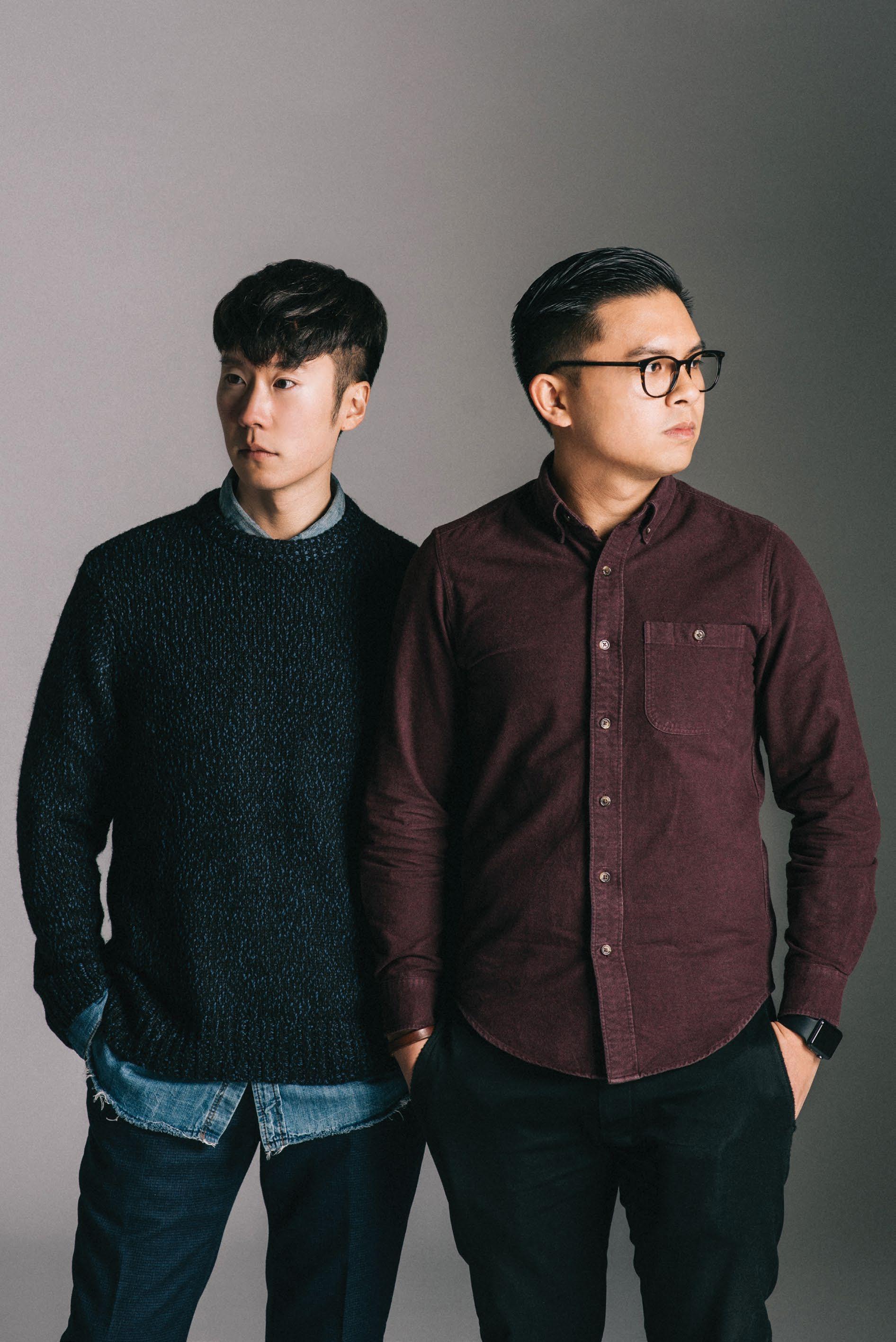
baunfire.com @baunfire
Patrick Sung, Web Development Lead Erik Quiocho, Brand Strategy Lead
A DIGITAL AGENCY

NEW LOCATION
School of Visual Philosophy is expanding to 13,000 square feet in order to grow the school and increase artist studio space. There will also be a new tech lab with laser cutters, a 3D ceramic printer, CNC woodcarving, and more. Looking forward, the school is planning to introduce certificate programs for bladesmithing, blacksmithing, and possibly brewing.
School of Visual Philosophy is excited to join the active community already on the Alameda in San Jose.
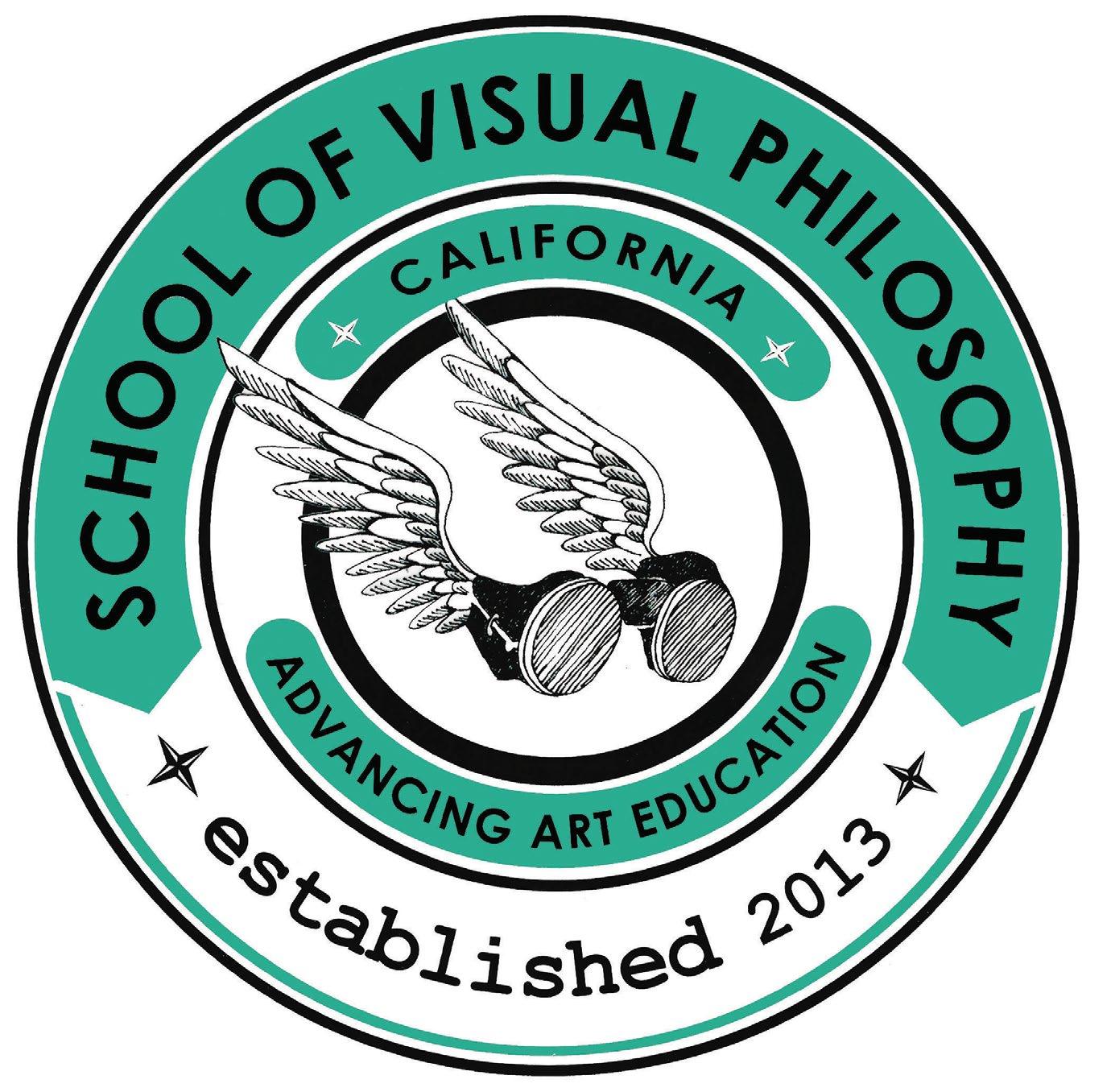
The School of Visual Philosophy
1065 The Alameda San Jose, CA 95126 831.239.7449
SCHOOLOFVISUALPHILOSOPHY.COM
the rink is back.
Get. Excited. We are. Embracing the best of San Jose at Eastridge.
Aloha Winter Rollerland
For old memories and new. Skate with us all holiday season.
Holiday Kick-Off & Tree Lighting Celebration
Performances, raffle prizes, food drive, Santa arrival, and tree lighting. Check out our fully-remodeled Center Court. It’s gonna be lit.
Monday Morning Storytime with Mrs. Clause
Bring your littles for a magical morning. Cookies provided. #NewAtEastridge: PLAY Area & two Family Lounges.
Pet Nights every Thursday
Eastridge is dog-friendly! Bring your pets for photos with Santa. Follow @EastridgeCenter on IG & FB or text EASTRIDGE to 41487.
EASTRIDGE
the most murals & the best parking
BUSINESS OWNERS: Have a seasonal business you want to bring to Eastridge? We love pop-ups and local start-ups.
Fremgen: 408-833-1060 or BFremgen@EastridgeManagement.com
@EastridgeCenter | #NewAtEastridge TEXT OR CALL US 408-444-8110 |
#CommunityIRL
EastridgeCenter.com
Contact Eastridge Senior Specialty Leasing Manager Brian
ISSUE 10.5
“Dine” Nov / Dec 2018
Cultivator Daniel Garcia
Editors
Elizabeth Sullivan, Justin Sun Kelsy Thompson, Grace Olivieri Samantha Tack, Marissa Ahmadkhani Rah Riley, Linnea Lukatch
Circulation/Distribution Elle Mitchell
Community Partnerships Kristen Pfund
Photographers
Gregory Cortez, Arabela Espinoza Scott MacDonald, Brian Rampas Zel Williams
Writers
Brandon E. Roos, Demone Carter, Michelle Runde, Nathan Zanon Johanna Hickle, Gillian Claus Justin Sun, Tad Malone, Thomas Ulrich Diane Solomon, Brad Sanzenbacher Marissa Ahmadkhani, Esther Young Allen Johnson, Taran Escobar-Ausman Tucker Lee Goot, Zia MacWilliams
Publisher SVCreates

As we head into fall, we enter into a season of eating, drinking, partying, and feasting. And, for most of us westerners, we can admit that thankfulness and giving have become nothing more than gluttony and consumerism. This provokes a tension within me, knowing our issue features beautiful craft food and drinks to enjoy but also realizing that those craft beverages—from coffee to cocktails—are priced only for the gentrifiers, of which we are all some part. Thus, my dilemma: the balancing of celebrating people’s craft of creating flavors that recognize and appreciate the beauty of creation comes into conflict with the knowledge that others are not as fortunate to dine or drink in these places. I enjoy eating out; I love restaurants. The entire experience is one of my favorite pastimes. I sooth my guilt by knowing I give through my church to help bring aid to the hungry and thirsty locally and globally. But still I wonder, what more should I be doing to care for my community?
So, in this year’s DINE, we bring in a few voices of our neighbors who have been through some times where they weren’t just cutting back on eating out but found it hard even to gather enough for the next meal. In a rich, abundant region like the Bay Area, it is shocking to realize how near that place is to us, either for the people next door or for our own families. So, please, enjoy this season: eat, drink, and celebrate, but also let’s be more than “mindful.” Let’s be “actionable” to the needs of those around us. Because thankfulness and gratitude, like all of the great things in this world—love, mercy, justice, charity, and kindness—are not nor were ever meant to be reserved for a particular income bracket; they are the menu of the true table in which everyone is welcome to DINE.
Enjoy.
Daniel Garcia
THE CULTIVATOR
IN THIS ISSUE
To participate in Content Magazine: daniel@content-magazine.com
Spirits
Subscription & advertising information available by contacting elle@content-magazine.com
MAGAZINE
the innovative and creative culture of Silicon Valley, published by
Brian Biotano / The Stanford Theatre / The Lexington House / Snake & Butterfly / Venus
CONTENT
is a bimonthly publication about
.
C CONTENT


CONTENT
Nov / Dec 2018 San Jose, California
ART & CULTURE
10 Food Insecurity, Natasha, Vanessa, Wafaa, & Kristen 16 Artist, Claudia Blanco 20 Sculptor, Nicolas Echeverri von Broen 24 Graphic Designer, Shannon Knepper 28 Artist, Your Homeboy Harv 32 Santa Cruz Museum of Art & History, Nina Simon 36 lille æske, James Mackessy & Sarah Farrell

FOOD & DRINK
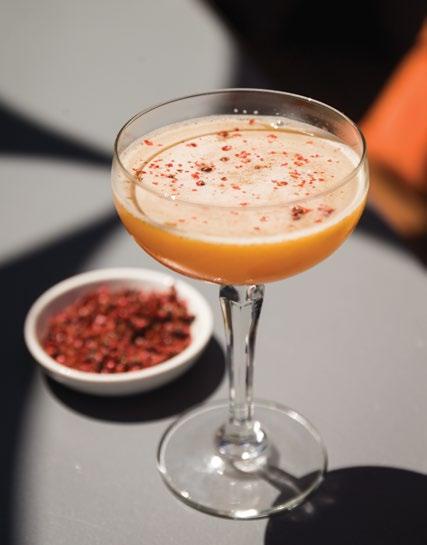
40 Snake & Butterfly, Mara Privitt, Celeste Walker, Debbie Regis & Vincent Flores 44 Voyager Craft Coffee, Sam Shah & Lauren Burns 48 Venus Spirits, Sean Venus 52 Santa Clara Valley Beekeepers Guild, Capriana Jiang & Steve Demkowski 56 Tac-oh!, Molly Adams 60 LvL Up, Ron Afortunado, Jason Clough, David Ramsey, Josh Schulenberg, & Jeffrey Clough 64 The Lexington House, Stephen Shelton 70 Olympian and Food Network Star, Brian Boitano
MUSIC/THEATRE

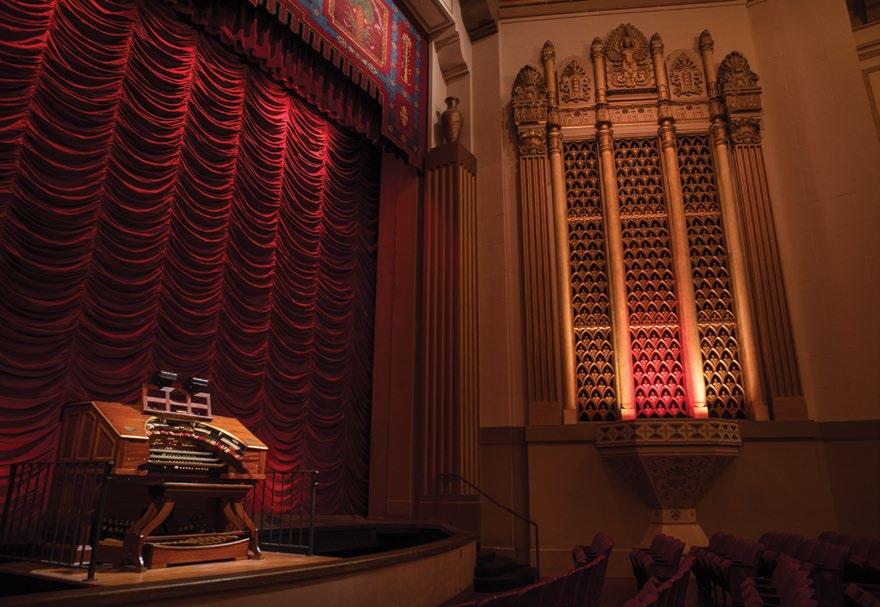
76 The Standford Theatre, Cyndi Mortensen 82 Singer/Songwriter, Marissa Muraoka 84 Singer/Songwriter, David Brookings 86 Hip-Hop Chess Federation, Adisa Banjoko
WORDS 90 Zine Making, Elliott Sky Chase 94 Album Picks, Needle to the Groove 96 Calendar 98 Contributors
pg. 70 All materials in CONTENT MAGAZINE are protected by United States copyright law and may not be reproduced, distributed, transmitted, displayed, published, broadcast, or modified in any way without the prior written consent of Silicon Valley Creates, or in the case of third party materials, the owner of that content. You may not alter or remove any trademark, copyright or other notice from copies of this content. For further information, or to participate in the production or distribution, please contact us at editor@content-magazine.com
ON COVER: “Zoe” by Claudia Blanco
The Stanford Theatre, pg. 76
Claudia Blanco, pg. 16
The Lexington House, pg. 64 DINE 10.5
Brian Boitano,



NATASHA
Staying in a homeless shelter in San Jose, Natasha and her children ask for help.

Natasha proudly displays her score on the office specialist exam: a 93 percent. Since 2001, Natasha had managed her husband’s business accounts, becoming increasingly isolated from society. Natasha left when her relationship became violent and she lost everything except her two children in the process. Recently, she and her children were evicted from their home and are now staying in a local homeless shelter. Originally from the Russian Far East, Natasha used to work as a chief accountant for a large USAID project. “I think I watched too many Hollywood movies,” she says. “I always thought Russia was bad, but I had healthcare and an apartment.”
Upbeat by nature, Natasha reflects, “At least this experience has shown me that we like communal living. People here are so isolated,” laughing, “but we are not.” More seriously, she recognizes, “It is hard because I have no family support and two children.” Natasha is searching for an accounting position and has applied for over 40 jobs.
Natasha is grateful for the Second Harvest Food Bank of San Mateo and Santa Clara Counties Produce Mobile Program, CalFresh, Cash Aid, and Medi-Cal. Yet, in less than two weeks, Natasha and the boys will lose their temporary housing. “I don’t know what we are going to do,” Natasha worriedly says. “It’s impossible to afford an apartment here without a good job.” Her older son is busy reading his favorite book, George Orwell’s 1984 but looks up to say, “I am proud of my mother.”
14 Dine 10.5
“It is hard because I have no family support and two children.”
Born on the East Side, Vanessa believes San Jose is intricately entwined with her identity. “San Jose is a drug for me. I will never move away. This is where people know me.” Vanessa’s mother was a heroin addict. While in high school, Vanessa married a man 24 years her senior, who, sadly, abused her for a decade. Upon leaving, Vanessa lost contact with her two daughters, a devastating loss for her. “I didn’t want them to see me beat up,” she explains. “This is also when I started drinking. I’ve been homeless now for eight years.”
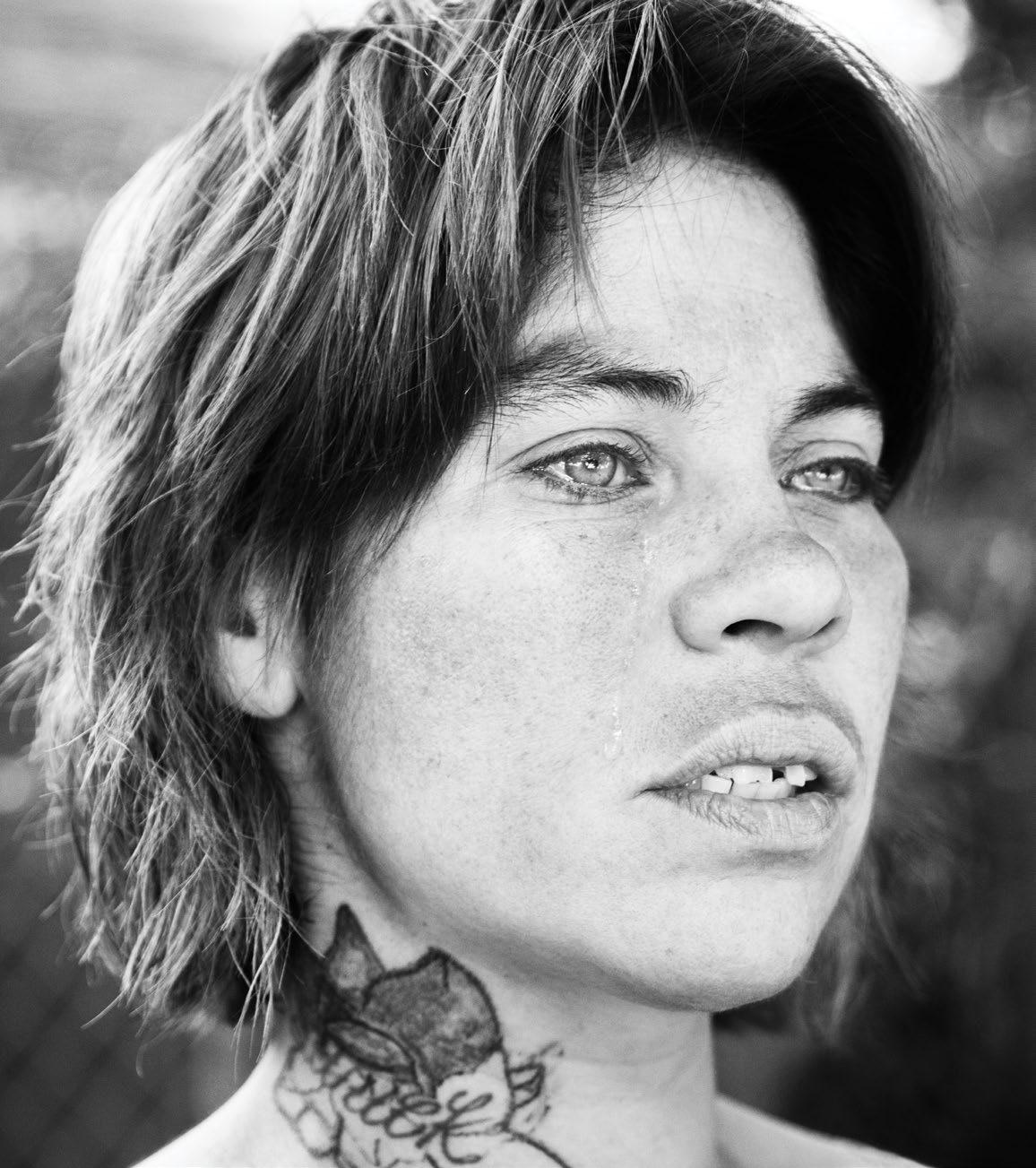
Vanessa is determined to change her life. For the past six months, she has been working with a homeless services organization, Farming Hope, to learn culinary skills. “I’ve always enjoyed cooking,” she relates. “It makes other people happy, and that makes me feel good.” Vanessa plans to become an in-home caregiver, but for now, Vanessa remains realistic. “My main goal is surviving—especially as a woman,” she says.
Vanessa depends on CalFresh to survive. “I use food stamps to pay down my food debt at a local grocery store, although it’s not much money,” she admits. To help deal with the burgeoning homeless crisis, Vanessa advises, “I would like San Jose to build tough sheds. I don’t need the Taj Mahal. Don’t run us out. Just give us warmth and sanctuary.”
VANESSA
Homeless for eight years in San Jose, Vanessa works to get her life back on track.
15
“My main goal is surviving— especially as a woman.”
WAFAA
From Yemen to San Jose, Wafaa is in constant fear of deportation.
As an act of rebellion, Wafaa wore shorts when she arrived from Egypt to visit family in San Jose and, ultimately, seek asylum. For the first time in her life, Wafaa felt free from the conflicts she experienced in her home country, Yemen. “People started threatening me when I left Islam. I was afraid I would be killed. They would harass me because I wouldn’t cover my face. I needed to say my name proudly, to walk with my hair down, to smoke a cigarette. All these things were forbidden. Luckily, I found a job in Egypt.” However, Wafaa describes life in Egypt as equally stifling, and her situation worsened considerably after the Arab Spring forced the company she worked for to close.
For four years, Wafaa has been waiting edgily for a decision on her asylum case. Now, her dreams of freedom are gone. “Again, I do not have any rights,” Wafaa quietly cries. “I do not feel safe. I thought people would care about me here. I didn’t come here to beg.” Although Wafaa is employed, she struggles to make ends meet; because she is an undocumented immigrant, her access to social services, like food aid, is prohibited.
Wafaa reflects, “I love San Jose, but, I’ve had a hard time here. Every day I wake up and I think I’m weak, but then I get up and go to work. I give customers my undivided attention, even though I am dying inside. I think, then, I am strong.”

16 Dine 10.5
“I do not feel safe. I thought people would care about me here.”
Kristen promised herself that if she lived until 29 years of age, she would ask, “Am I living life to the fullest?” Her 29th year is a particularly poignant one for Kristen: her biological mother died of cancer at the age of 29. Kristen was a one-year-old at the time. “They weren’t sure I would survive the cancer radiation exposure during pregnancy,” reveals Kristen. “I’m grateful to be alive.”
Kristen’s warm personality belies her past. “My father was financially successful but a terrible alcoholic,” she reveals. “He tried killing himself in front of me.” Despite her material comforts, Kristen recalls, “I transferred schools four times. Nobody noticed until fifth grade that I couldn’t read.” That summer, Kristen read over 300 books to catch up. But later that year, tragedy again struck when her father died suddenly.
At 18, Kristen was kicked out of her adoptive father’s home. “Luckily, my friend’s family took me in,” she states. After graduation, Kristen enrolled in college but withdrew two times after struggling with depression and exhaustion from working three jobs to survive. She often found herself hungry, “Sometimes, I wouldn’t have food. Eventually, I found out there was a food pantry on campus.”
On her third try, Kristen obtained a bachelor’s degree in environmental studies with a minor in communications from San Jose State University. Now, as the campus sustainability coordinator, Kristen makes the university a welcoming place for students like her. To stay positive, Kristen quips, “I work on myself every single day.”
KRISTEN
Affluence, childhood illiteracy, and college hunger—Kristen’s journey to San Jose State University.

17
“I’m grateful to be alive.”
C
Written by Tad Malone Photography by Daniel Garcia klawd.co Instagram klawd
Claudia Blanco
Claudia Blanco was surrounded by art from an early age but didn’t realize how fateful her upbringing would become until much later.
Born in Nezahualcóyotl, Mexico, Claudia Blanco was surrounded by art from birth. Blanco’s father was a part-time jeweler whose font books fascinated her as a child, as did the painted signs and screens sitting around the screenprinting shop her uncle ran. Back then, people told her she was good at drawing and painting, and after moving to San Jose when she was eight, she even took some basic art classes in high school. But was too critical, comparing herself to others, and didn’t pursue it further. It was only after she had her son and decided to go back to school that a videography class sparked her creative interests once again. From there, Blanco took more art classes, including one where the teacher directed her to the Arsenal in San Jose to buy the class-required materials. It was there that she met the shop’s purveyors, Sean Boyles and Roan Victor; after finding them on social media, along with other artists in their circle, she started getting inspired. “It made me feel eager to create, so I set out to rediscover my creative side,” Blanco recalls.

Pretty quickly she got the hang of things and began applying paint to canvas in earnest. Inspired by the work of photorealist painter Chuck Close, Frida Kahlo’s outlook on art and life, and the bold, bombastic work of street artists like Drew Merritt, Blanco began creating portraits.
Blanco’s portraits are a vibrant mix of a technological aesthetic and a nostalgia for childhood. Working in a variety of materials, particularly gouache, which she enjoys for its “crisp and clean” qualities, Blanco creates imagery that is both charmingly familiar and uniquely engrossing. Some of her work consists of medleys with Picasso-like cartoon imagery and incorporates recognizable figures and icons as disparate as Barney Rubble and the PornHub logo, while others are portraits of notable women deconstructed with technological motifs. All of Blanco’s work is rendered in sharp, expressive lines that often dissolve into chaotic flurries, with pixelations being a common element of this entropy. Blanco likes to play on the viewer’s sense of nostalgia. “My generation had the best cartoons,” she claims.
18 Dine 10.5


20 Dine 10.5 C
Moreover, Blanco uses these dissimilar elements to capture people’s attention. “I want the viewer to see my work across the room and be intrigued and drawn in. It’s so interesting to watch people walk to the piece from across the room, and as they get closer, the image starts to disintegrate into tiny squares right before their eyes,” Blanco says of her pixelated portraits.
What’s even more impressive is that Blanco has only been seriously making art since late 2016, after being inspired by that art class. She’s been on a proverbial tear, and it shows. In 2017 alone, Blanco joined every event and show she could, and her artwork was featured in a dozen exhibitions across California, including the Chocolate and Art Show at SOMArts Cultural Center in San Francisco, Fiesta Fridays at the Art Attack Gallery, also in San Francisco, the AllWomxn’s Showcase at Forager, and the San Jose Art and Zine Fair at Empire Seven Studios. This year, some of her work was featured in The World of Frida exhibition at the Bedford Gallery in Walnut Creek, a show focusing on art and photography inspired by the life and work of Frida Kahlo. The exhibition was so popular that it will begin traveling the country, exhibiting at a string of galleries for the next three years.


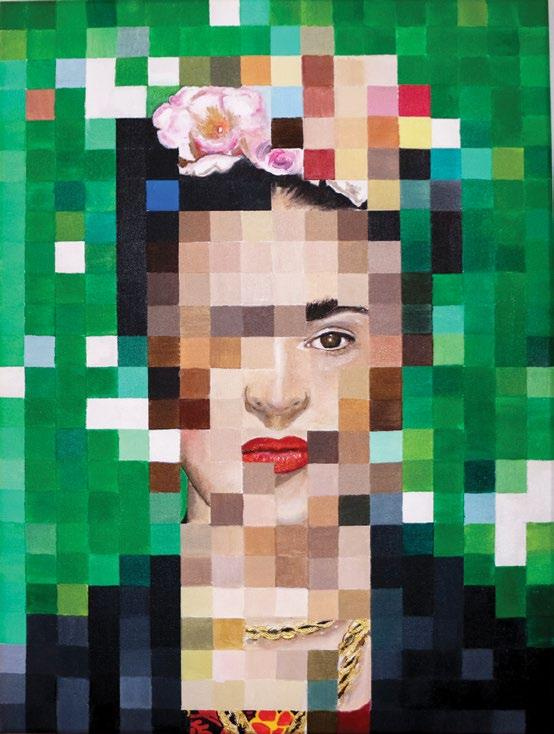
Blanco remains bright and hopeful. “My twenties are coming to an end in November, and I’m excited to enter my thirties with this new adventure,” she says. “I’m just having fun and trying to learn as I go,” she says, adding, “In five years, I really hope I will have left my nine-to-five job and will be doing this art thing full time.”
C
21
Written by Tad Malone
Photography by Brian Rampas nicolastela.com Instagram nicovonbroen
NICOLAS ECHEVERRI VON BROEN
Art can do a lot of good things for people—it can make them feel like they never have, articulate previously unknown emotions, provide direction and open the heart, and given the right (or wrong) circumstances, art can even save a life.
Take South Bay–based sculptor Nicolas Echeverri (Nicola Stela). Born and raised in Colombia, Echeverri had a sense of art in his adolescence and later channeled it into architecture, the industry he studied in school. When Echeverri was in his early twenties, he was forced into a situation that changed the course of his life forever. Heading out on the town one night with one of his wealthy relatives, Echeverri never could have guessed what would happen next. Echeverri and his friend were kidnapped by guerrillas and taken into the mountains to be held for ransom. The problem was, Echeverri was by no means wealthy, and the $200,000 ransom that his captors demanded could not be delivered. In response, they held him longer and abused him for what seemed like an endless period of time. The pain and fear grew so great in Echeverri that, for the sake of survival, he mentally shut down. Reduced to a primal, trancelike state, he accepted his fate and what he was sure to be his death. “I went into a very weird state of mind in which I was finally in peace. I let the problem go,” Echeverri recalls.
Then, inexplicably, the guerrillas freed him...
Indeed, Echeverri was free, but only physically. The trauma from the situation slowly shut him down, isolating him from his friends and family and making even simple, pure feelings like love impossible to handle. Unable to have normal relationships or a job, he fell to the lowest place he had ever been. “I dealt with the stress for years. I began looking for answers in a lot of things, especially spirituality, but nothing was able to heal me. I was too much in my mind,” Echeverri says.
Meanwhile, he was waiting for his green card process to be approved. “I came here to look around and see if I liked it,” Echeverri says of his first trip to the States, adding, “And I decided to stay.” It was here that he found the School of Visual Philosophy, which he credits with helping save him, as well as cultivating his skills and philosophy as a sculptor.
22 Dine 10.5
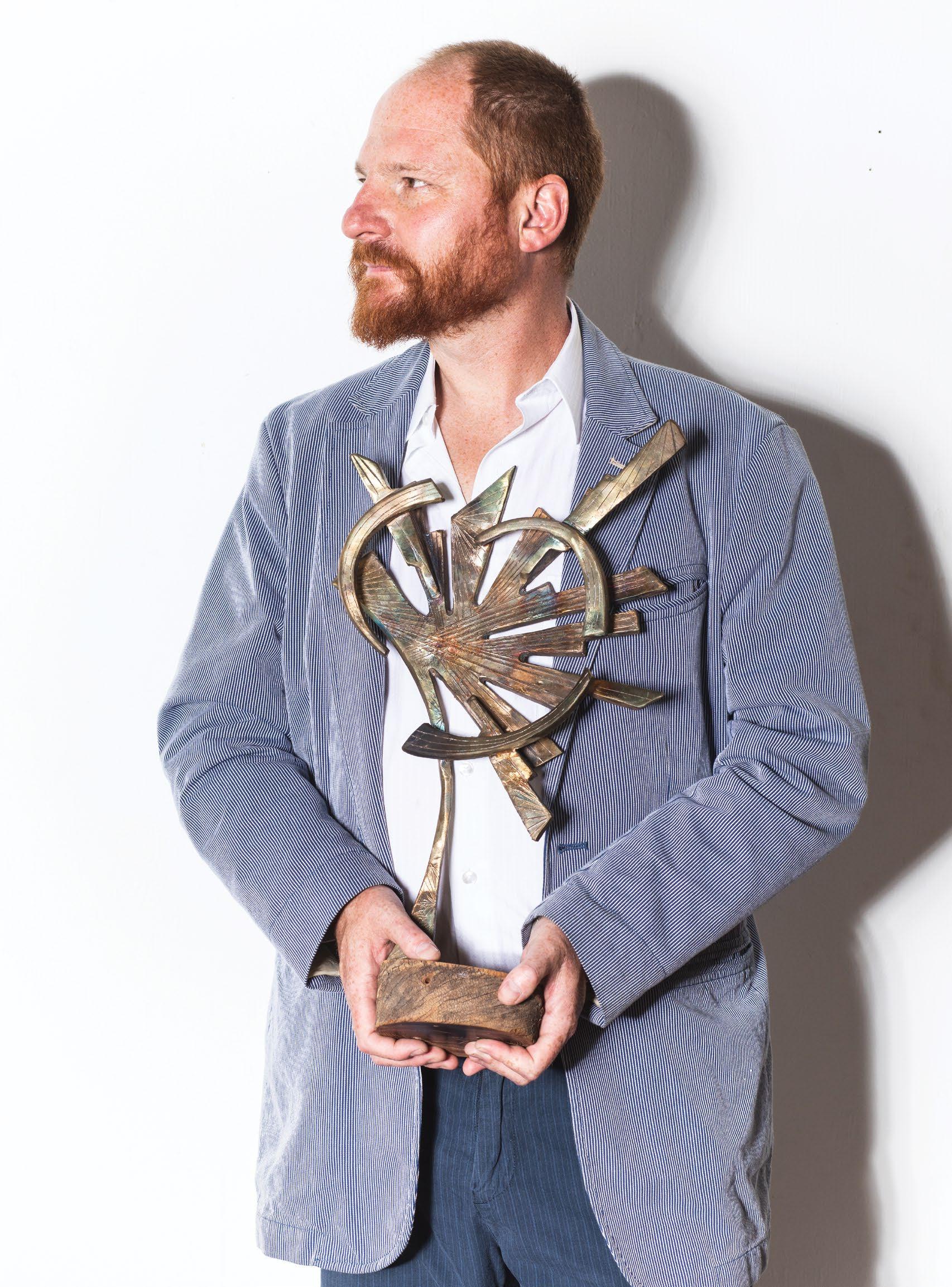
for a moment I can make people reach into their heart, then I’ve completed my goal. My art is not about thinking. It’s about making people feel.”
– Nicolas Echeverri

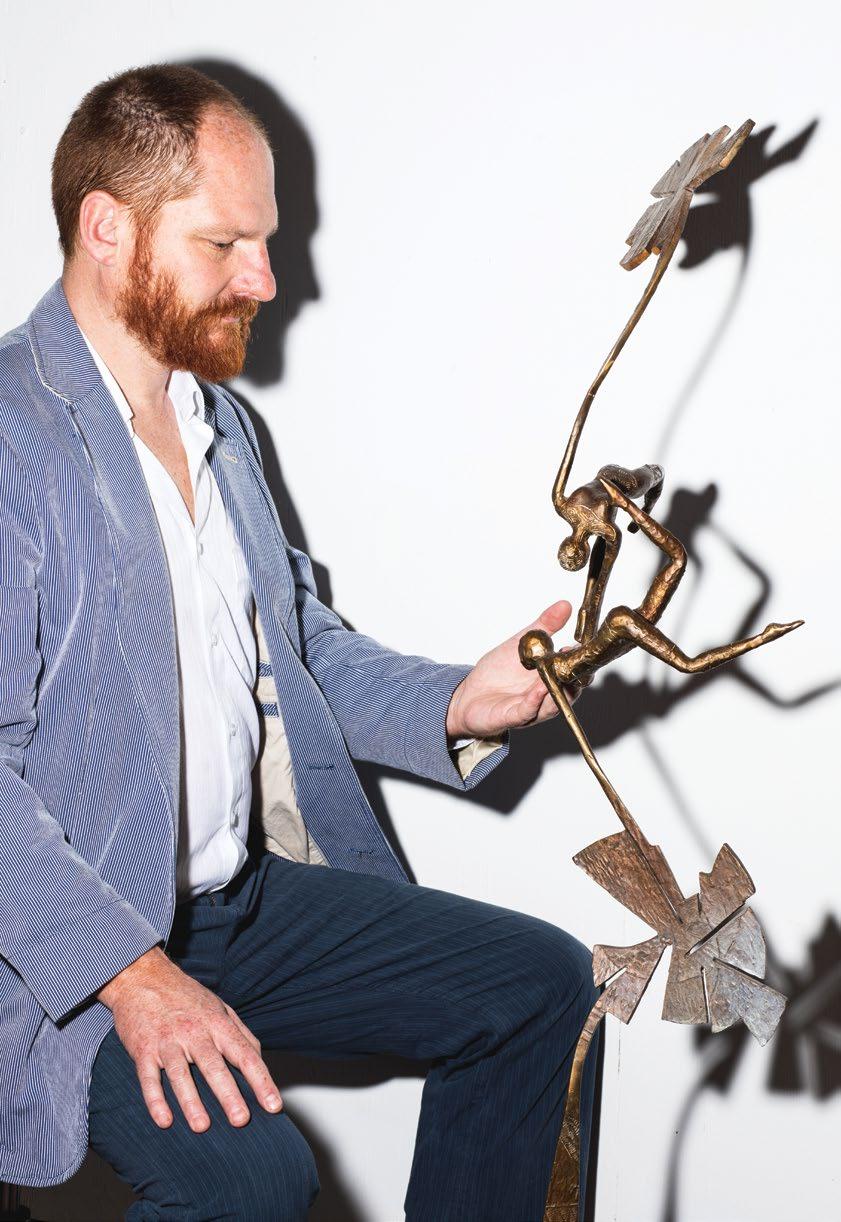
24 Dine 10.5
“If
After 17 years of a mental war with himself, Echeverri came to a breaking point. Then, what seemed to occur out of pure fate, he met a woman, a spiritual healer who guided him. Never a religious person, after six months of interaction, Echeverri had a spiritual rebirth—then came the visions. “I found myself in spiritual ecstasy. I was finally happy again,” he says of the transcendental experience. “The first thing I realized was I need to do something with myself,” he says. “I was blinded by fear and anxiety. So I grabbed a piece of wood and started carving,” Echeverri says.
Echeverri’s sculptures are therapeutic and stunning celebrations of humanity. Composed and crafted almost entirely in bronze, his work articulates the deep pain and long-lingering trauma that has defined so much of his life. But his sculptures, often comprised of outstretched human figures whose appendages meld into larger, abstract shapes, do not dwell on the suffering that brought Echeverri to sculpting initially. Instead, they express a sense of wonder, a celebration of life presented through the human figure’s physicality, all arranged with a somatic harmony enunciating what Echeverri is trying to say. “If for a moment I can make people reach into their heart, then I’ve completed my goal. My art is not about thinking. It’s about making people feel.”
Echeverri devotes most of his time to his sculpture. To pay the bills, he’s taken on a bunch of gig-economy jobs that are in abundance here. He credits this on-the-fly work for giving him plenty of time to devote to his actual work—his sculptures.
And he shows no sign of slowing. After the success of an exhibition of his work at the School of Visual Philosophy this past June, Echeverri—who now goes by the artistic name of Nicola Stela—wants to expand his artistic horizon. Ultimately though, he wants to keep making work that embodies his personal philosophy that “the mind can break, but the heart is untouchable.” C

25
KNEPPER SHANNON
by Tad Malone Photography by Daniel Garcia War Admiral Press waradmiralpress.com Instagram waradmiralpress
Graphic designer Shannon Knepper cut her creative teeth in Seattle and Pittsburgh, but for the past five years, she’s called San Jose home. With a focus on printmaking, Shannon creates greeting cards, T-shirts, and other 2D art through her brand, War Admiral Press. More recently, she’s started a new project called Bike City: San Jose, inspired by the South Bay’s love of all things bicycle. Between her new line of bike art, freelance jobs, and personal projects, Shannon has quickly found her niche in the South Bay community though her eye-catching work.
What brought you to San Jose? We lived in Pittsburgh for five years while my husband was attending school. We stayed there until he got a job offer from San Jose State University in 2013. Since then, I’ve just been learning what makes San Jose cool. For example, one night I saw the bike party roll past my house, and I said to myself, “What’s this? This seems too weird for San Jose.” On the surface, it doesn’t seem that quirky, but just like with any new city when you move, you just have to look around a little bit, then all of the sudden you see what makes it special.

Where do you get inspiration for your work? I’ve always done things like silkscreening and letterpress stuff. There’s always some element of printmaking involved; that’s what I like to do best. I love any kind of vintage sports stuff. I get a lot of inspiration from books I find in the Dr. Martin Luther King Jr. Library, the main branch in San Jose. It’s an amazing place—they have a treasure trove of old books with great illustrations.
How has moving to San Jose influenced your work? I started doing San Jose–inspired posters and prints since moving here. For example, there’s something of an orange sauce obsession in San Jose. La Victoria Taqueria and Angelou’s Mexican Grill, both local restaurants, have their own versions. So I made a design of a row of orange bottles as a tribute to the sauce. I’m learning what makes San Jose cool and doing some of my art around that; I feel like there’s space for that. When I go to shops
26 Dine 10.5
Written

27



28 Dine 10.5
around here, I don’t see San Jose–branded stuff. There doesn’t seem to be a huge sense of pride. When you go to other cities, the airports are full of local art, but San Jose has some growing to do in that way. The artists are here, but we’re still finding our place.

What has inspired some of your bike-themed art? There’s a lot of weird bike history in San Jose. The first velodrome was built here, and there’s another one in Hellyer County Park. There’s a lot of weird, quirky bike things all over the city. I was also noticing it was such an easy place to bike around since it’s flat and it’s always nice outside. I’m not exactly a “real cyclist.” I don’t have a nice bike or special clothing or anything like that. But the area is ripe for more cyclists, even casual ones.
I’m making more bike-themed art thanks to receiving a small grant from Knight Foundation. They support art and other community projects in San Jose. I had some greeting cards with bikes on them for sale in Japantown, and they saw my work there and asked me to do more bicycle-themed art for the city. Now my War Admiral Press work is stuff that I just enjoy doing, while my new project, Bike City: San Jose, is where I want to make cool art for the city.
What have you done as part of Bike City: San Jose so far? I’ve actually been decorating bike racks throughout the city; I even had to work with the Department of Transportation to get permission to paint them. I’ll be working with them on some future projects. They’re working on making new bike lanes, so I’ll be making banners to support the opening. I’m sort of an artist in residence, but it’s not official since I’m the first one. C
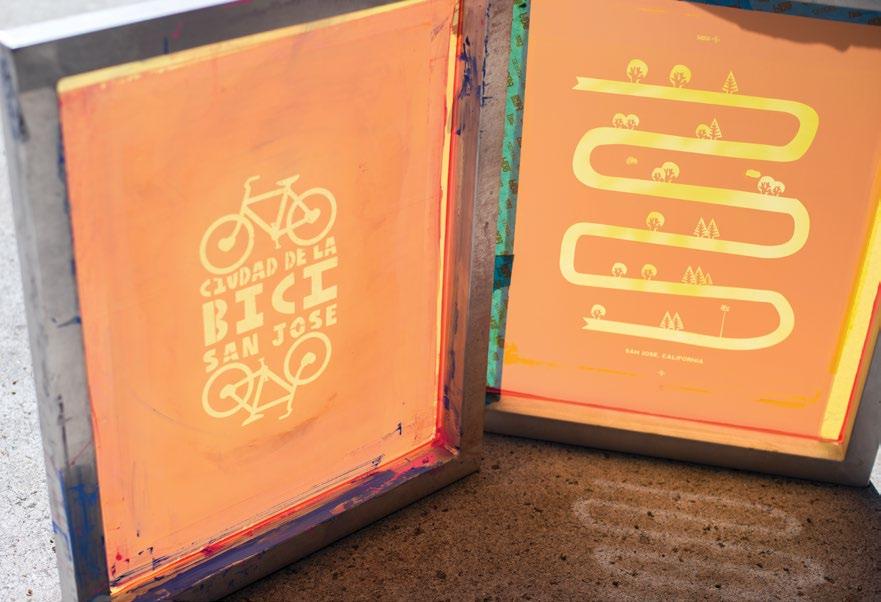
29
“My new project, Bike City: San Jose, is where I want to make cool art for the city.” –Shannon Knepper

Jack-of-All-Trades HARV YOUR HOMEBOY
Artistic
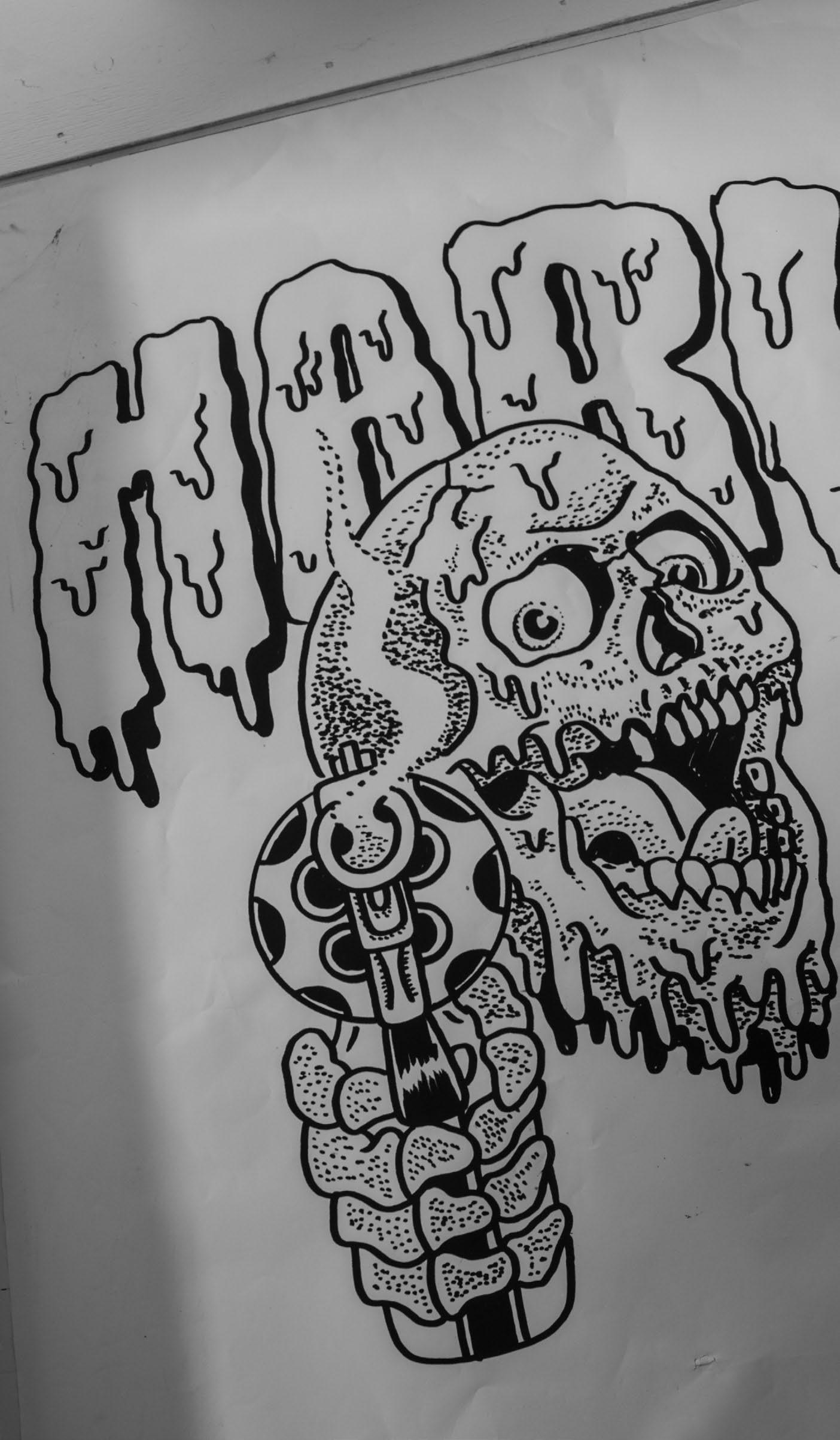
31
Written by Tad Malone Photography by Daniel Garcia Your Homeboy Harv Instagram yourhomeboy_harv

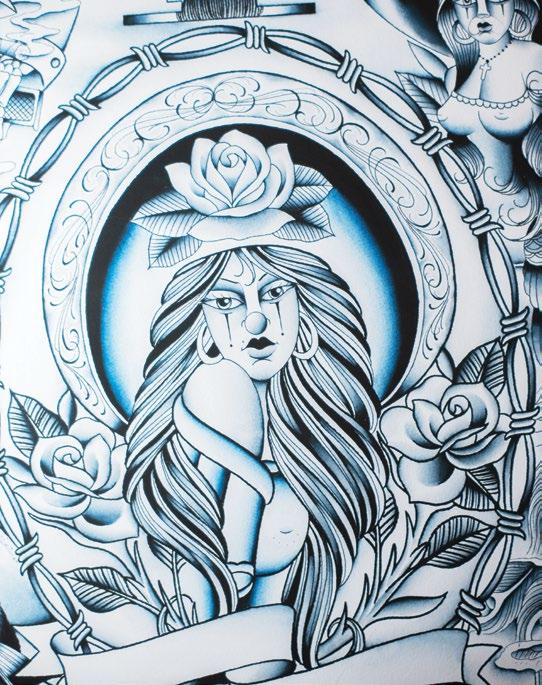

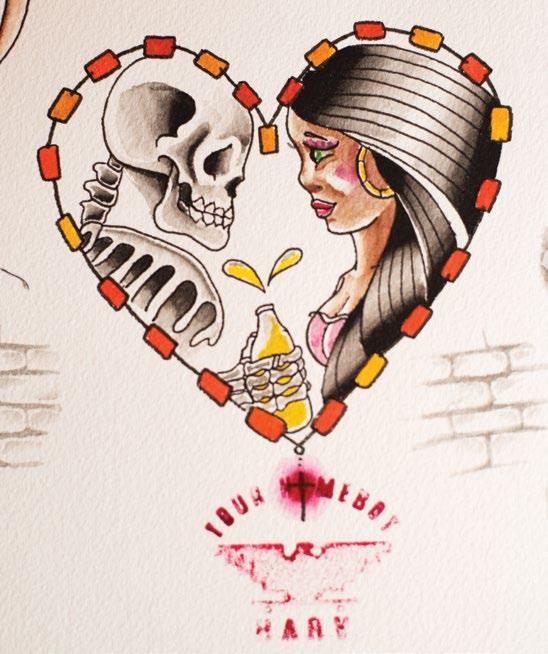
32
GRAFFITI
Born on the east side of San Jose, the art ist known as “Your Homeboy Harv” was reared in the same neighborhood his par ents grew up in. When Harv was a kid, his dad was a biker and was heavily entrenched in the East Side low rider community. His mom was something of an arts patron, often taking Harv to plays and art openings. Harv himself started getting into art as a little kid. Taking cues from his graffiti-painting old er brothers and cousins, Harv remembers catching his first tag in 1988 at the age of eight. “It’s a bit of a cliché,” Harv says of his vandalistic foundation, adding, “But I got really into it.” Combining a strong visual imagination with unrelenting youthful mis chief, Harv continued in the graffiti game for most of his childhood, applying himself to the point where it was negatively affecting his studies. “Art is probably the reason I didn’t finish school,” he recalls.
TATTOOS
He was in his twenties when Harv first got into tattooing, albeit by accident. At the time, he was doing some drawing and working for the streetwear company Breezy Excursion. His neighbor and friend Jason worked at a tattoo shop, and one day they got to talking, and Jason offered Harv the chance to tattoo himself. Without much thought, Harv eagerly agreed. Shortly after the deed was done, he quit his job at Breezy and immediately devoted himself to tattooing. But the world of truly permanent ink is very much organized in the style of Old World craftsmanship, where a mentor extends his tutelage to a worthy protégé. Harv called up his friend Roman, owner of the San Jose tattoo shop Strong Tattoo. “I called him asking if he knew where I could get some tattoo equipment,” Harv recalls, “Roman called me back and asked if I wanted to learn how to tattoo. And that was pretty much it.”
Coming away with a gig after one cold call? Perhaps the tattoo game was Harv’s fate. In any case, he got to work. Now, five years in, Harv has begun to develop his own unique inking style. “There’s nothing like

tattooing. It’s got ahold of me, and I will do it till I die,” Harv claims, “Anybody that thinks they can draw is going to get a slap in the face when they try to ink. It’s like learning how to do everything all over again. The feeling of the needle in the skin is completely different than other types of art.”
Harv’s tattoo work and his drawing and painting are, in many ways, an extension of his own personality. Combining striking, clear line work with a playful sense of color and form, Harv’s loves and influences manifest directly, reliably expressing his own unique sensibility. While Harv’s work and style vary depending on the type of art he’s doing, all of his work is shaded with a vibrant sense of playfulness. He credits his enduring sense of humor, the inordinate amount of cartoons he watches, and a wild life for informing the way he makes art. He especially credits a car crash in 2003 that left him medically dead, having to be revived twice on the operating table and then having to learn how to walk again. “After that my perspective changed a lot,” Harv says, “I don’t take things so seriously anymore.”
GRAPHIC DESIGN
The moment he stopped trying to force it, his art started improving. He also “took one foot out of the streets” and into the world of more commercial art-making. Being stuck at home all day, Harv’s interests turned towards graphic design. “I learned how to use Illustrator and got really good at it,” Harv recalls. From there, he scored a graphic design apprenticeship at the downtown firm Jiminy Stitch It. “That really taught me everything, designwise,” he adds. This led him into a multitude of roles, including holding the senior art director position at apparel companies Breezy Excursions and Booger Kids simultaneously. Harv has also done design work for no less than the NFL, the NHL, the MLB, the band Cheap Trick, and EBgames, to name a few.
About all this, Harv is characteristically humble and irreverent. Much like his art, Harv takes a devilmay-care approach without losing that same devil in the details. In the long run, he hopes to finish his AA degree in art and design and get his work into more art shows, but even then, Your Homeboy Harv plans on making art—whether screenprinting, tattooing, or design—the same way he did as a kid. By having fun.
C
33
Santa Cruz Museum of Art & History 705 Front Street Santa Cruz, CA 95060
santacruzmah.org museumtwo.blogspot.com ofbyforall.org
Social Media santacruzmah
Santa Cruz Museum of Art & History
Nina Simon
“How can we have intentions to be welcoming but not actually be welcoming people in?” asks Nina Simon, executive director of the Santa Cruz Museum of Art & History (MAH). For more than a decade, she has been a leading voice in pushing cultural institutions around the world to adopt new models of operating in order to stay relevant to the communities they serve. “You can’t just say that you’re going to be for the community. You can’t just hang up a bienvenidos sign. You have to really do the work to become representative of them, to be created by them, so they feel ownership and true involvement in the space.”
Simon grew up in Los Angeles and went to school for electrical engineering. After college, she moved to the East Coast and landed what she thought was her dream job at NASA. But in the meantime, she found another interest: having seen throughout her schooling and in her work how badly people struggle with math, she became interested in finding innovative new ways to educate. She began working with local children’s museums to help design interactive exhibits. “I just fell in love with the world of museums as places that invited people to learn and explore without there being a test or a grade.”
She had found her calling and soon left the engineering world to throw herself, full-time, into museum curation, working with cultural institutions and science centers and “making puppet shows about infinity.” Eventually, she
landed a large project at the International Spy Museum in Washington, D.C.; later, she became a curator at the Tech Museum of Innovation in San Jose.
“I came from a family where we didn’t go to museums all the time,” she says. For Simon—the engineer—it’s more a matter of needing a solution to a problem. “We have a world where people are really creative and engaged artistically, are really curious about the past and the world,” she says, “and yet many people see museums—which are places to explore art, history, and science—as irrelevant.” Simon soon realized she had another opportunity to share what she was learning in the field of exhibition design. “There was a lot of talk in the museum industry about how what we called ‘Web 2.0,’ things like Wikipedia and YouTube, was going to potentially change the way that museums work. I started to hear people who I thought of as mentors and leaders in the museum field ask questions like, ‘What is the Wikipedia of museums, what is the YouTube of museums?’ So, in 2006, I started Museum 2.0.” The blog, which offers new ideas on how institutions can grow with technology, rethink their top-down structures, and engage more effectively with communities, has become one of the most-read online sources of content for arts and cultural institutions.
“It’s kind of a Silicon Valley story,” Simon muses. “I started a blog when I was 24, and suddenly, within a year, was starting to be treated like an
34 Dine 10.5
Written by Nathan Zanon
Photography by Daniel Garcia
A thought leader transforming the Santa Cruz Museum of Art & History into a community gem.
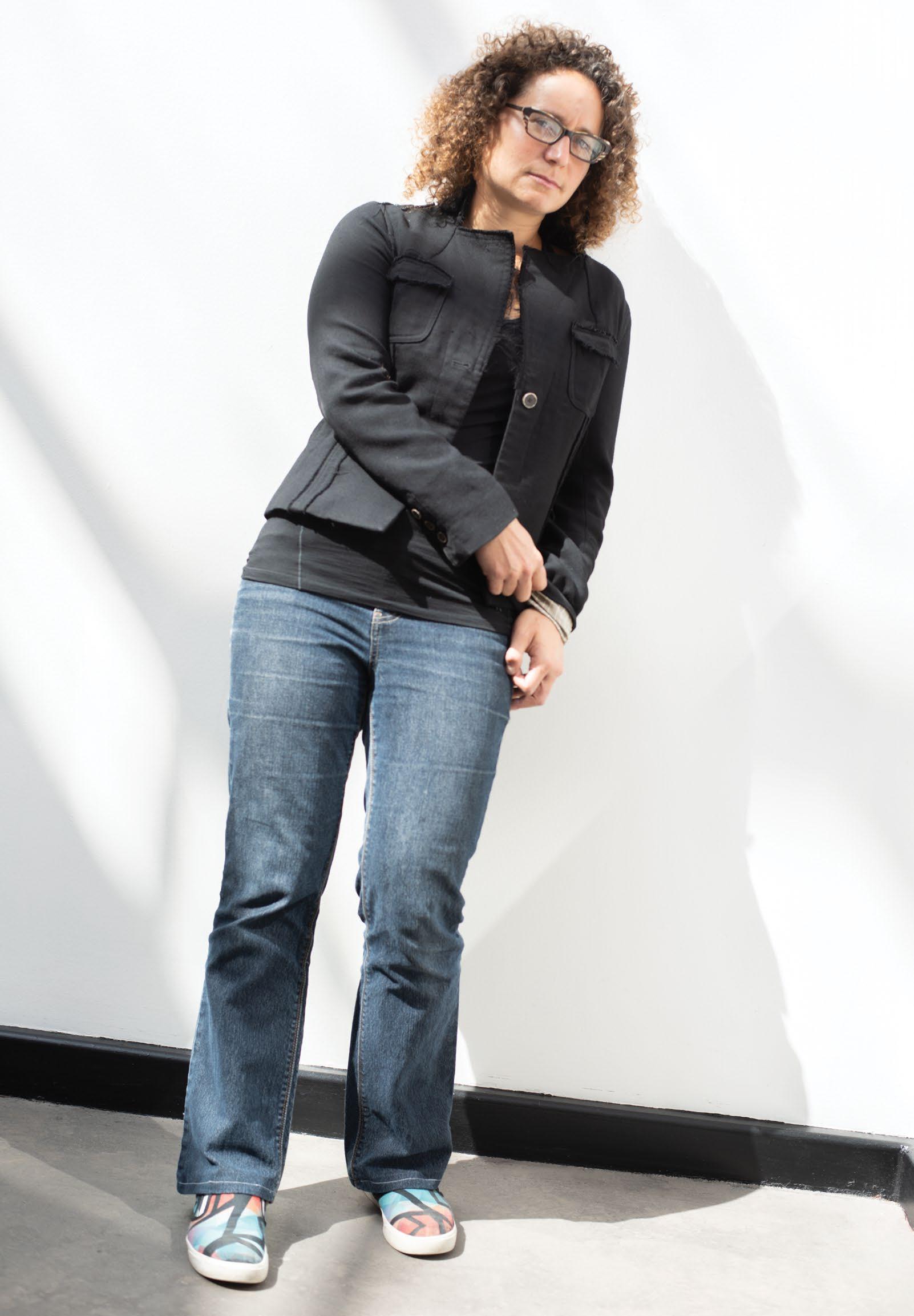


expert because I had been exploring a topic that was emergent.” It wasn’t long before she was being recruited to help open and transform different types of cultural centers around the world. When she settled in Santa Cruz with her family, Simon didn’t plan on taking a position at the Museum of Art & History. But when the floundering organization reached out to her in 2010 with the opportunity to put her ideas into practice in her local community, she decided to take it.
The transformations she implemented at MAH, which she highlights at her numerous speaking engagements and in her best-selling books, The Participatory Museum and The Art of Relevance, included giving local community partners a chance to co-curate exhibitions, hiring bilingual staff to ensure Spanish-speakers feel welcome, and altering the makeup of the board of directors to include better representation of the people the museum serves—not just wealthy donors. “Every community is different,” she points out in one of her TED talks. “What says welcome to one says keep out to another.” Her goal was to find what she calls “new doors,” ways to make more members of the community feel welcome.
It worked. In just a few years, MAH went from being nearly broke to sustainably funded and thriving, from being a forgotten and ignored building downtown to being a busy community space filled with people and creativity. A new outdoor public gathering place called Abbott Square opened adjacent to the museum, bringing together art and cultural activities with restaurants, a bar, and a performance space.
“When I came on, we had 17,000 visitors—and the majority of those were retired white folks and school kids on school field trips. We just closed the fiscal year with 148,000,” Simon exclaims. That’s 10 times the patronage the museum received seven years ago. In addition, the current audience reflects the diversity of the county. “We really think what we’re doing is about building community, and you don’t just do that inside the museum,” she adds.

“Being welcoming to people also means having a great place to sit and connect that cultural and creative experience to the social experience.”
Simon’s latest project, launched earlier this year, is OF, BY & FOR ALL, a global initiative offering a certification process that organizations can opt into with a goal of becoming more “of, by, and for” their specific communities. It provides an online assessment that anybody can take, as well as tools and resources to help institutions work toward the kinds of changes she has pushed for.
“There’s no question that there is a trend and an exploration of community participation happening in cultural institutions,” Simon says. “I am certainly very pleased that people read the blog, read the books, tell me they’re using the work…but to some extent, I’m dissatisfied by how far we have—or haven’t—gotten. Cultural institutions still primarily serve a small niche of most communities, a niche that is whiter, wealthier, and older than the general population. And I think that, yes, there may be a lot of institutions that now have post-it walls or have somebody engaging people online, but I wonder. Is that moving to the fundraising plan? Is that moving to how exhibitions are planned and how programming is developed?”
Simon knows that some of these transformations won’t work for every organization, but for many community-based museums, cultural groups, and educational facilities, such changes may be not only a powerful and important way to stay relevant to the people served, but the only way to survive and thrive going forward.
“I feel very passionately from what we’ve seen here in Santa Cruz at the MAH that making institutional change—to be an organization that is of, by, and for community—has shown an incredible transformation in who’s coming in, how we’re funded, and in what we’re able to accomplish in terms of impact…and I want to see that kind of change happen for other institutions.” C
37
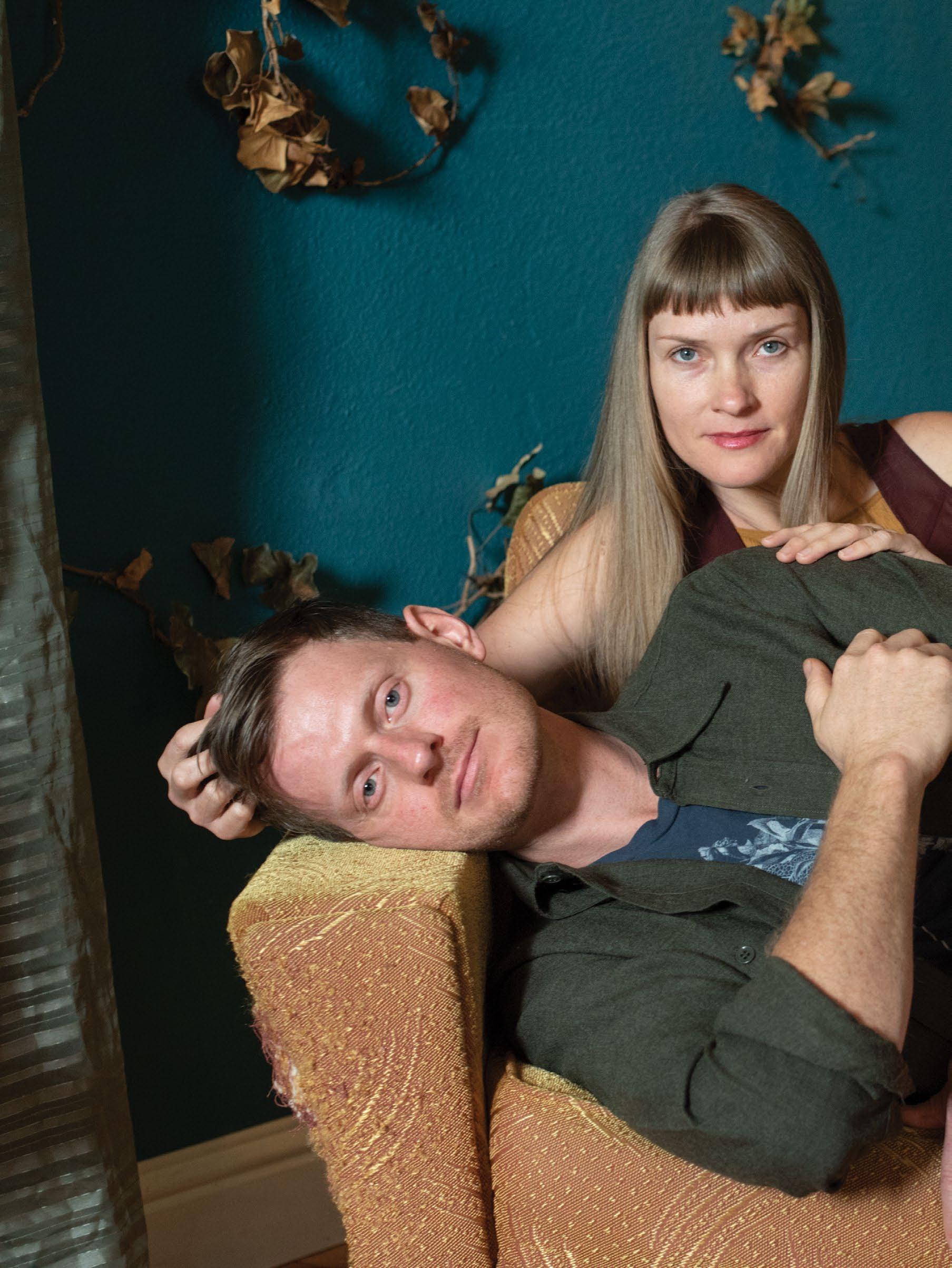
lille æske

39
Boulder Creek arts space fosters exchange of energy between artist and audience.
lilleaeske.com
Written by
Brad
Sanzenbacher
Photography
by
Daniel
Garcia
lille æske 13160 Hwy 9 Boulder Creek, CA 95006
Social Media lilleaeske
Over the hill in Silicon Valley, success is most often measured in scale: how many tickets you can sell or how much alcohol you can move. And, of course, more revenue is always better. At Lille æske, it’s not the scale that matters, but the intimacy of the experience.
As curators of the space and artists themselves, husband-and-wife team James Mackessy and Sarah Farrell embrace the intimacy and the connection audience members feel for art. Farrell left Portland five years ago for the Santa Cruz Mountains after being wooed by the California sun during a visit with Mackessy’s brother. Within two years, they had used their combined skills in woodwork, metalwork, and design to renovate the storefront of an old building on Boulder Creek’s main street into the mixed arts space it is today.
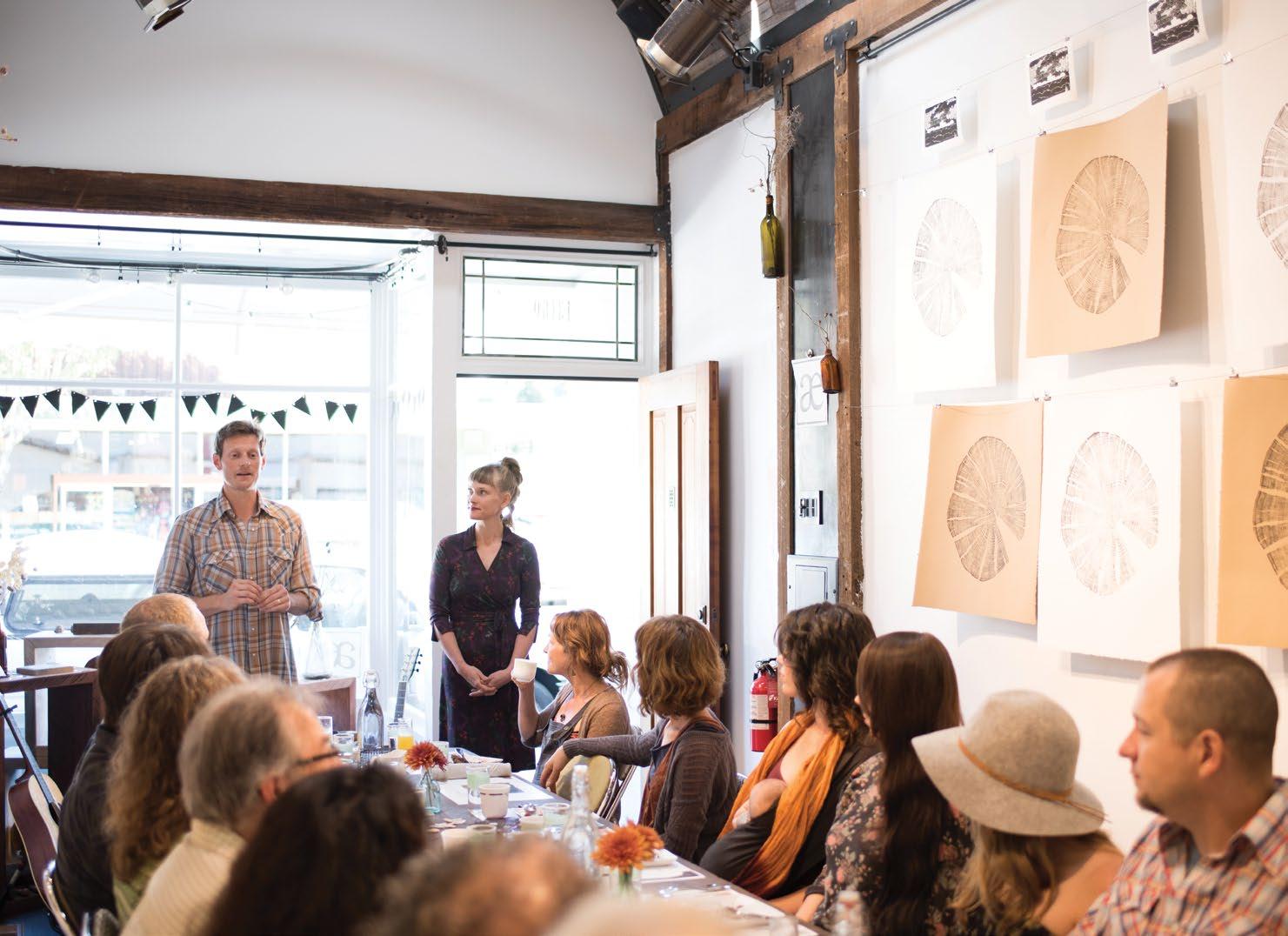
Lille æske was originally planned as a walkthrough business card for Mackessy’s custom design and build business, but the couple soon realized they had something even better. “We realized during our opening event that people really enjoyed being in the space,” Farrell says. “And we knew that we had to give them a reason to keep coming here.”
The reasons for visiting Lille æske include live music; comedy nights; culinary events; art exhibi tions; and walk-through, experiential installations like Spektrum, which ran in July.
At Lille æske, guests are expected to matter. The audience isn’t just “butts in seats,” they are part of the experience in the room, for each other and the artists. “There’s an exchange of energy here that I love to see happen,” Farrell explains.
From the small-batch beer that Mackessy sources from brewers in the San Lorenzo Valley to the food prepared by Farrell, there’s a spiritual generosity within the walls that blends in with the solitude of the Santa Cruz Mountains. “The goal is to make the audience feel like they’re being considered,” Mackessy explains. “We want visitors to think, ‘Someone took care of these details just for me.’ ”
Everything in Lille æske has a story, from the chandelier they shaped from copper tubing they found in the attic, to pillars salvaged from Mackessy’s brother’s house. It all connects to give the room the feel of an alpine ski lodge—or perhaps an old church. Regardless of the individual interpretation, Mackessy and Farrell will continue to use those stories and their ingenuity to keep the design true to the spirit of the building and provide a venue for the Boulder Creek artistic community. “We hope to remain an asset to the community. Something it can’t do without,” Mackessy says. C
40 Dine 10.5
Above and upper left opposite page: Photography by Adriane White


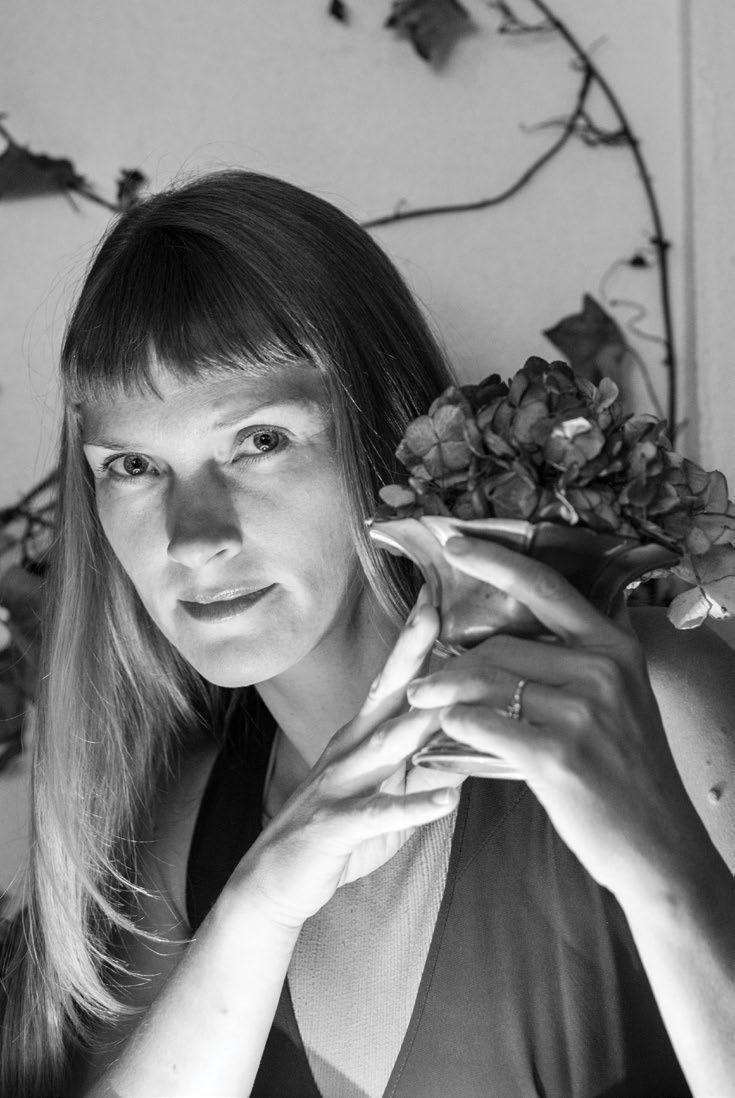
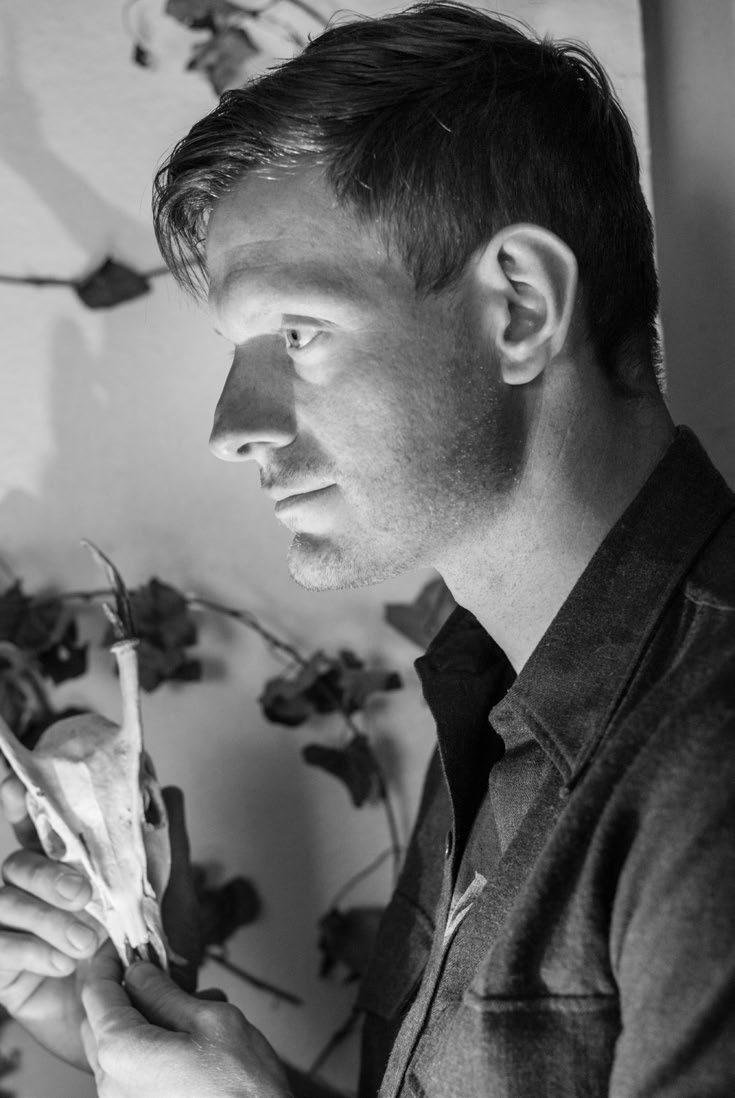 Written by Johanna Hickle
Written by Johanna Hickle
SNAKE & BUTTERFLY
Charmingly Unconventional
Snake & Butterfly Chocolate Factory 191 E Campbell Avenue Campbell, CA 95008
snakeandbutterfly.com Instagram snakeandbutterfly Facebook snake.and.butterfly
“I’m tasting prominent oaky notes. I’m also picking up on dark fruit and molasses.” Some might assume this reaction could only be uttered over a wine glass. But it can also be spoken while sampling bean-to-bar chocolate. Like wine grapes, cacao beans vary widely based on origin, landscape, and soil; and like wineries, bean-to-bar businesses occasionally fall into a highfalutin attitude if they’re not careful. No one would make that accusation of Celeste Walker’s chocolatier, Snake and Butterfly. “If you’re talking to somebody about the tasting notes of something, it’s okay to describe it in words that you understand,” she says. “You don’t have to have this vernacular of terms to be able to talk about wine or chocolate. Fancy, but not pretentious, I guess.” She laughs, “We don’t take ourselves very seriously.”
Because brands like Nestlé and See’s Candies cover up the natural flavors of cacao beans with vanilla and sugar, people are often startled by the unexpected flavor of bean-to-bar products. Comprehending this, Snake and Butterfly transitions customers with a bean from the Dominican Republic. “It’s got a nice, classic, chocolatey-chocolate flavor,” Celeste explains. “It’s not ‘neutral,’ but it’s the flavor most people think of when they think of dark chocolate.”
Conscientious of their impact on the community, Snake and Butterfly only supports fair-trade suppliers. There’s a reason grocery store chocolate is cheap. Slavery and child labor are a rampant problem in Africa, supplier of 70 percent of the world’s cocoa. Biodegradable or reusable products are another priority. They’ve replaced plastic with paper packaging and paper straws as well as switched to metal tasting spoons, saving tens of thousands of plastic ones from the landfill. Furthermore, Celeste impacts her community as leader of Orchard City Indivisible (OCI), a local activist group involved in weekly rallies, vigils, and marches. Her three partners at the chocolatier are active voices in the organization, and OCI affiliates are some of the shop’s most loyal customers. “In a general day, I would say we have at least half a dozen of our members come in,” Celeste says.
42 Dine 10.5
Photography by Lam Nguyen

43
Above: Vincent Flores, Debbie Regis, Mara Privitt, & Celeste Walker
“If you’d prefer something that’s occasionally loud and boisterous and very energetic and sometimes inappropriate, then that’s why we’re here.”
– Celeste Walker


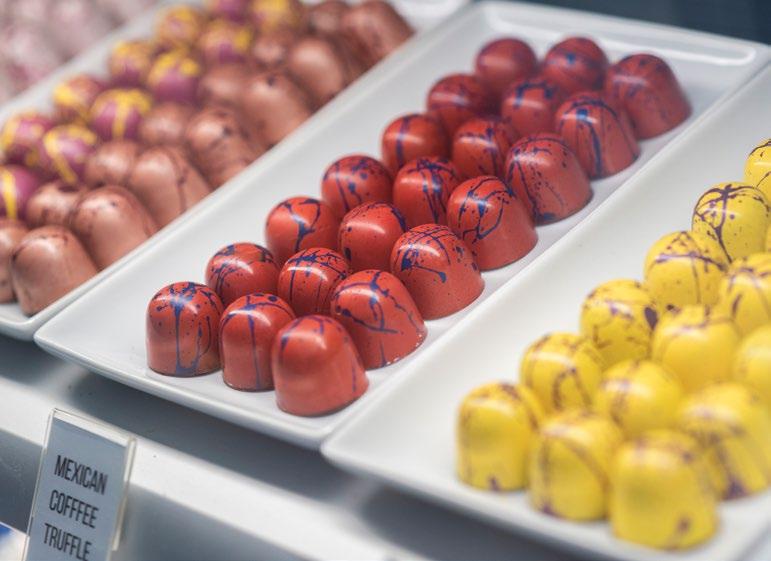

OCI members understand that at Snake and Butterfly, they can speak freely. It’s become a space charmingly unconventional in its unfiltered honesty. They don’t put up a polished PR business mask. Celeste praises her partners for their incredible support, but she also won’t hesitate to let you know they get in heated disagreements. “We have a rule that if we start screaming at each other, which we do occasionally, someone goes next door and gets a six-pack of Olympia or PBR,” Celeste says. “We have to shotgun a beer, take a deep breath, and come back to our business meeting.”
Celeste works alongside her close friend Mara Privitt as well as her divorced parents, Debbie Regis and Vin cent Flores. “They’re obviously friends,” Celeste notes. But this staff dynamic understandably leads to tension every now and then. Luckily, it’s also offset by a tightknit sense of community. Over the shop’s lifespan, the team has supported Vincent as he overcame cancer and Celeste as she faced a double mastectomy. They’ve sup ported Mara after her mom passed away and Debbie as
she started working again for the first time after PTSD symptoms abated. “If one of us needs to be away for two weeks or six months, we just figure it out,” Celeste says.
They also intentionally sit down to shared meals. It’s not uncommon to walk in on the entire staff partaking in a taco break. “People will come in and be like, ‘Are you open? Are we interrupting something?’ ” Celeste chuckles. “We just do ro-sham-bo and it’s somebody’s turn to get up and help.”
This adherence to balance is echoed in the shop’s name. To the Aztecs (discoverers of cacao), snakes and butterflies symbolized male/female archetypes and balance in the universe. “Chocolate has a really bloody history. It wasn’t Cadbury right from the start,” Celeste notes. “They used to use the cacao pods in exchange of a human heart when they stopped sacrificing people,” Mara contributes from across the room. “It’s roughly the same size and shape—and what comes out of it looks like blood.”

There’s no denying this shop possesses its own distinct flavor. “If you want something more mainstream, you can go to another shop,” Celeste shrugs. “If you’d prefer something that’s occasionally loud and boisterous and very energetic and sometimes inappropriate, then that’s why we’re here.”
C
45 Dine 10.5
45

“If we could be the world’s best coffee versus world’s best people, we’re obviously picking world’s best people. No comparison there.”
-Sam Shah
VOYAGER CRAFT COFFEE
The Flavor Savers
For Sam Shah and Lauren Burns, the cofounders of Voyager Craft Coffee, it’s all about people, and Voyager is more interpersonal than you might think, despite its obscure location on a street of car dealerships. It seems whatever starts in Voyager receives the magic touch.
Is it the magic of good coffee? Maybe. Perhaps it’s the craft of the latte art, the fusion of flavors inspired by Sam and Lauren’s travels abroad—cherry blossom in spired by Tokyo and cayenne by Santiago—or the quality control standards ranked number one in the Bay Area. “What makes us who we are is none of that,” Sam insists. “It’s the type of people we are, the culture we are, the team we have. And it’s only those things that bring success.”
Sam and Lauren love using their shop to help people with their businesses. “Our baker, Paulina, just came into our shop one day, handed us a pastry like, ‘It’s my dream to be a baker. I made all this stuff. Try it.’ ” The verdict (it was amazing) con vinced Sam and Lauren to carry her pastries in the shop. Now Paulina has her own bakeshop downtown. Same with the blushing succulents you see at the entrance: their crafters have opened a pop-up shop downtown.
At the backbone of the entire project are Sam and Lauren’s intentions and the team they strive to cultivate. “We tell our baristas, we want people to mistake you for the owner. If you want to do anything, just do it.” That’s how the octopus mural on the back wall came to be—a solo art piece by a talented barista, Julian de la Cruz.
These were the guiding principles of a pair starting with a trailer and a dream. “Huge falcon doors. Power generator. It’d take up a whole parking spot, but it was our self-enclosed specialty coffee shop,” Lauren says of Voyager’s first form, a self-sufficient coffee mobile. “You couldn’t go more than 30 miles an hour,” Sam adds. “Backing up meant reverse joystick controls—like a baby, you had to plan your whole day around it: get your own special filtered water (can’t put San Jose water in there, too many minerals) and load it over your head.”
Voyager Craft Coffee 3985 Stevens Creek Blvd Santa Clara, CA 95051 voyagercc.com
Instagram voyagercraftcoffee
47
Written by Esther Young
Photography by Arabela Espinoza
Left: Cofounders
Sam Shah and Lauren Burns

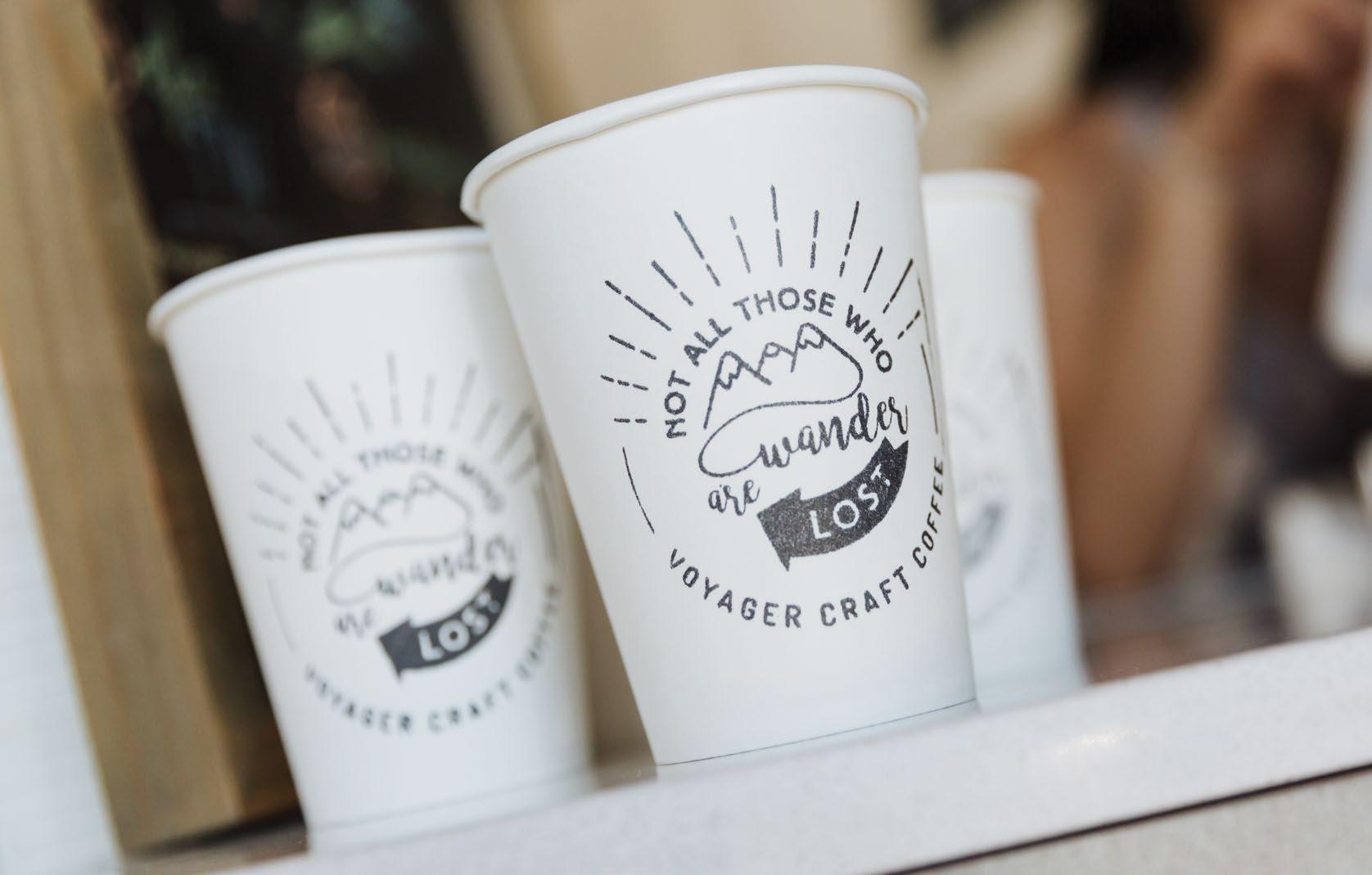
48 Dine 10.5
Other hours were spent formulating their signature drinks, consuming intense amounts of milk in their parents’ driveway. “Somewhere down the line, we start ed hitting the right note: ‘Hey, this is tasting good. Did you add something? Let’s write this down.’ ”
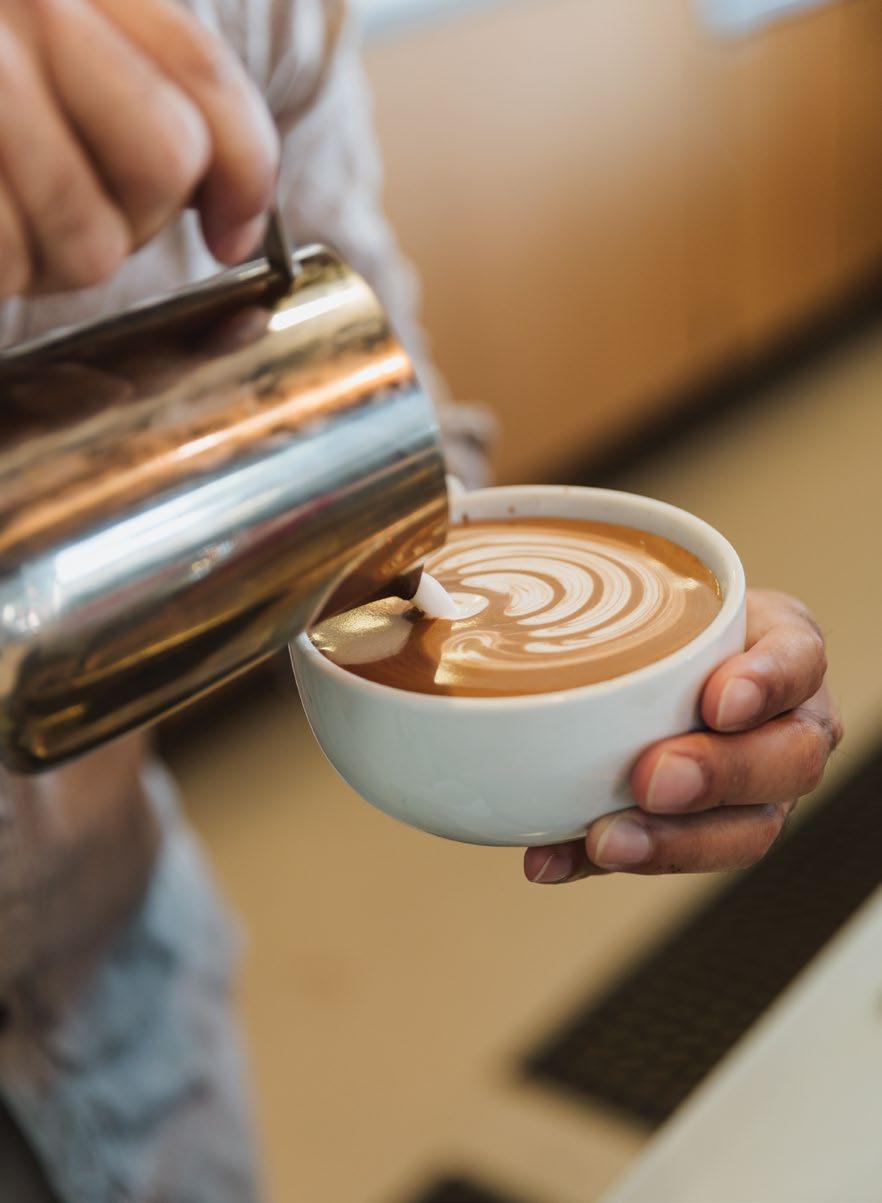
Then, when they had managed to sell enough coffee, parked outside enough festi vals and office spaces, and generated enough buzz among coffee drinkers through out the South Bay, they accepted a leasing offer on Stevens Creek Boulevard—not the first place you’d go for a crafted beverage. “It’s pretty much professional suicide by choice. You have to be really naïve or completely ignorant of the coffee business, and fortunately, when we decided to get this space, we were both.”
And yet, against the odds of science and real estate calculation, here they are, an oasis in a desert—a mixed bag of blessings and hurdles. “We started to realize peo ple had to go out of their way to come here,” Lauren says. “So we had to make it a special experience, going beyond customer service to customer engagement, something extra to say thank you for this detour out of your day.”
Lauren’s nonprofit background and Sam’s fascination with coffee production and farm economics power their joint mission to fuel respectful dialogue, hosting events like “Have Coffee with a Cop” or letter-writing workshops. “Coffee is just the sideshow,” Sam emphasizes. “If we could be the world’s best coffee versus world’s best people, we’re obviously picking world’s best people. No comparison there.”
49 C
AMERICAN SPIRIT the

Photography
Four years ago, Sean Venus launched Venus Spirits in an empty Santa Cruz warehouse. Unlike the half-dozen brewmasters and winemakers who have set up shop in the west side of San Jose, Venus is not brewing beer or fermenting wine. He’s distilling grain, botanicals, and agave tequilana into whiskey, gin, and blue agave spirits.
A brewmaster-turned-master-distiller, Venus joined the craft beer movement as a student at the University of Oregon and was a brewmaster at Oregon Fields brewery in Eugene. He worked for several local breweries before accepting an offer from Gordon Biersch Brewing Company in San Jose. “Somewhere along the way,” he says, “my love for beer evolved into a love for whiskey.”
Today, his Central Coast distillery produces bourbon, rye, and single-malt whiskies for the spirits aficionado and enthusiast alike. His passion for producing craft beverages expanded when he discovered that beer and whiskey share a common heritage: Scottish distillers have transformed beer into whiskey for five-hundred years.

Venus’s process is a traditional one: he gathers kiln-dried grain, mills it, steeps it in hot water to extract fermentable sugars, drains the liquid or wort into a fermentation tank and adds brewer’s yeast. The wort ferments into a honey-colored ale, or wash, that he pumps into a 150-gallon copper still near the entrance to the distillery.
Venus can turn wash into whiskey because distillates evaporate at different temperatures. Ethyl alcohol, or ethanol, boils at 78 degrees centigrade. Water boils at 100 degrees centigrade. When he heats the onion-shaped belly of the wash still, vapors flow into the swan’s neck, across the lyne arm, into a condenser, and through water-cooled serpentine tubes where they condense into a spirit called low wines.
Distillery and Tasting Room 427 Swift Street, Ste A Santa Cruz, CA 95060
venusspirits.com Facebook venusspirits Instagram venusspirits
51
Written by Thomas Ulrich
by Daniel Garcia
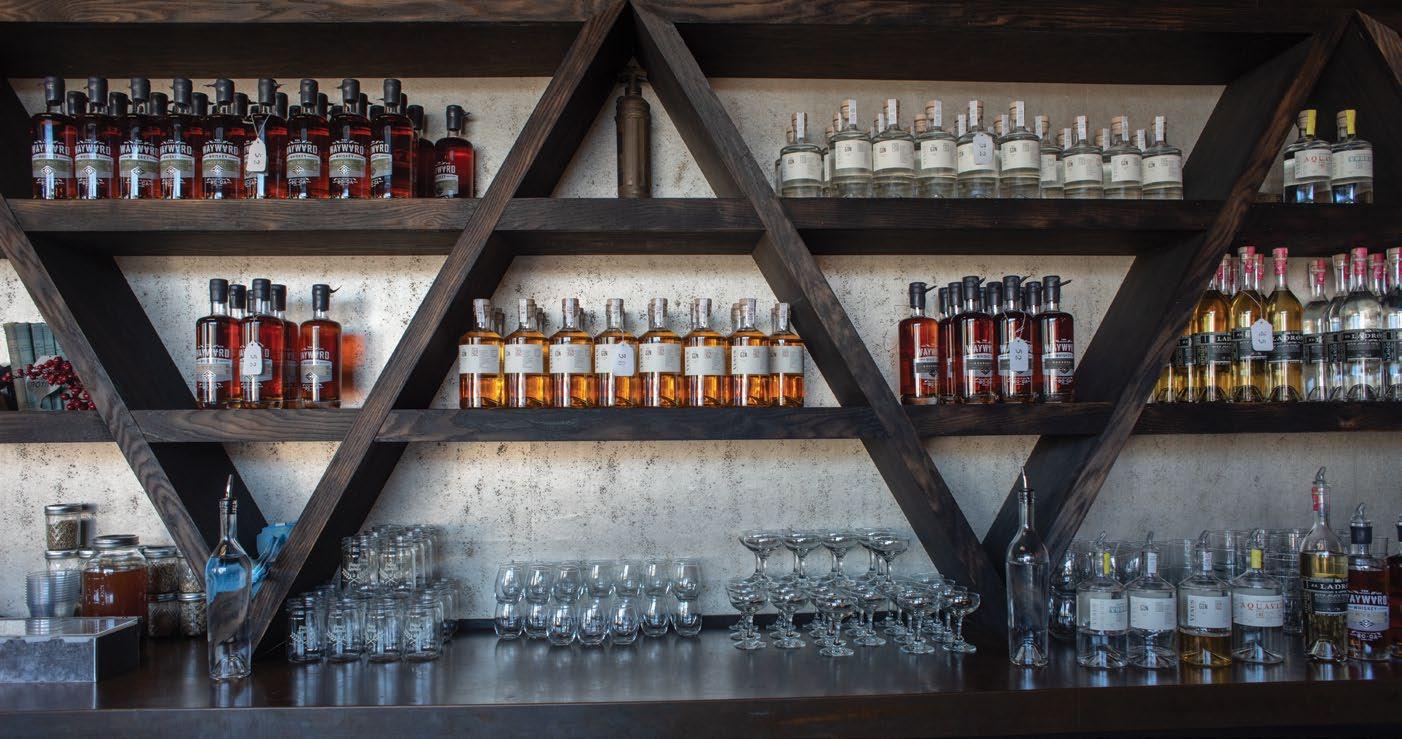


52 Dine 10.5
A TASTE OF OLD
Like his peers from Scotland, he collects the condensate from the initial distillation and redistills it. He pumps low wines from the wash still to the spirit still, which separates aromas, flavors and ethanol from the water and residual oils that the second distillation leaves behind. “You can distill by the numbers,” Venus admits, “but with a double distillation, I can shape flavors and aromas by sampling the condensate and adjusting the still as whiskey pours from the spout.”
Venus divides the second distillation into three parts: the heads, the heart of the run, and the tails. The heads contains unsavory flavors with low boiling points. The middle cut delivers flavors and aromas like almond, apple, banana, and caramel from compounds with boiling points between 84 and 92 degrees centigrade. The tails adds body and flavor to the mix by yielding low concentrations of distillates with boiling points closer to 100 degrees centigrade.
For Venus and other master distillers, the art of making a memorable bottle of whiskey is in knowing how wide to make the center cut. Each distiller condenses a slightly different fraction of the mother spirit with its signature flavors and aromas. From the second still, Venus drains the 120-proof spirit into American oak barrels. Over time, it extracts an amber color and cinnamon, caramel, and vanilla notes from the wood.
EARTHY TO ELEGANT
Most cellar masters distill American whiskey or bourbon from a fermented mash that’s at least 51-percent corn, while Venus distills his version of Scotch whiskey from a fermented mash that’s 100-percent malted barley.
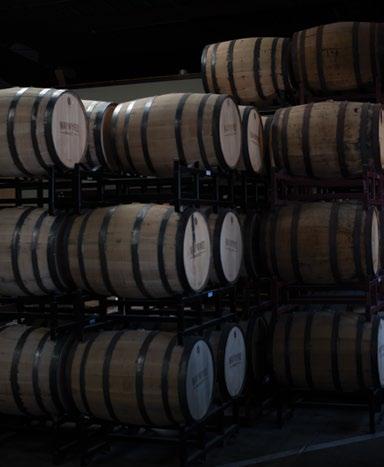

Master distillers describe their finest Scotch as a malt, not a whiskey. True to old-world ways, Venus distills fermented barley that a maltster germinated in warm water and then dried in a peat-fueled kiln. The smoke conveys aromas and flavors that give his traditional single-malt whiskey its signature peaty flavor.
Following Scottish tradition, Venus ages this single malt whiskey for three years in used or neutral American oak barrels so that vanillin and other oak compounds do not overpower its subtle blend of aromas and flavors.
Venus also distills a single-malt whiskey from barley that a maltster dried with hot air. Aged in a port barrel, it conveys black currant, caramel, vanilla, and raisin notes. His rye whiskey, made from rye, corn, wheat, and barley, evokes grass-like flavors and spicy aromas, and his bourbon, distilled from a corn, wheat, and barley mash, delivers caramel aromas and spicy, citrus-like flavors.
“Sean Venus is part of an emerging generation of distillers that have discovered subtlety and nuance with a new set of ingredients and flavor profiles,” says Andrew Faulkner, managing editor for Distiller Magazine. His single-malt rye and bourbon whiskies add character to a spirit that is helping to redefine an American icon. C
53

SANTA CLARA VALLEY
BEEKEEPERS
GUILD
For thousands of years human beings have dined on honey. There were hundreds of native bee species in California, but it wasn’t until 1853 that California’s first honeybees arrived. They were delivered to Commodore Robert F. Stockton’s 1,939acre Rancho Potrero de Santa Clara, which was in the Valley of Heart’s Delight, just south of today’s Norman Y. Mineta San Jose International Airport. Stockton hired botanist Christopher A. Shelton to develop this land into a nursery. According to History San Jose’s archives, Shelton introduced honeybees and many fruits and vegetables to California. This kick-started the Santa Clara Valley as an important agricultural region.
The honeybees’ 3,500-mile journey to San Jose was a perilous one. Twelve beehives were shipped from New York to Panama, where Shelton purchased them. From Panama, they journeyed by steamship to San Francisco, then by steamboat to the Port of Alviso. Finally, they were delivered to Stockton’s ranch by horse-drawn wagon. Only one hive survived the entire trip, but that was enough to begin pollinating the valley’s orchards and producing honey.
Early in the 20th century, backyard beehives were as common as clotheslines and kitchen gardens. As the Valley of Heart’s Delight became suburban Silicon Valley, beehives disappeared. Fortunately, the back-to-the-land movement of the 1970s brought
hundreds of valley residents back to beekeeping, and that’s when the Santa Clara Valley Beekeepers Guild was formed.
Today, guild members are concerned about colony collapse disorder and the major role honeybees play in providing the earth’s food supply. They want to do something to help honeybees while reaping the benefits of homemade honey, improved yields in their organic gardens, and a fascinating hobby that accommodates a long Silicon Valley workweek.
This volunteer-run nonprofit offers low-to-no-cost beekeeping workshops, mentors for newbies, and relocation services for anyone visited by an unwanted swarm of honeybees. The guild meets each month at the Willow Glen Bible Church in San Jose. Open to the public, these meetings offer attendees practical advice about how to keep their bees healthy and producing abundant amounts of honey.
“Honey is the purest form of food,” says Steve Demkowski. “We don’t have to do anything to it; it’s totally ready for us to eat.” Demkowski—a longtime member of the guild—is a beekeeper with backyard beehives and apiaries in rural south San Jose. He’s Happy Hollow Park & Zoo’s volunteer beekeeper and teaches their beekeeping classes. He also leads the 4H beekeeping group at History Park, and he will mentor anyone who asks for help.
Bee Illustration by Alex
Santa Clara Valley Beekeepers Guild beeguild.org elsereno4h.weebly.com hhpz.org willowglenhoney.com
Social Media hhpzoo elsereno4h willowglenhoney

55
Written by Diane Solomon
Photography by Arabela Espinoza
Muravev
Left: Capriana Jiang and Steve Demkowski
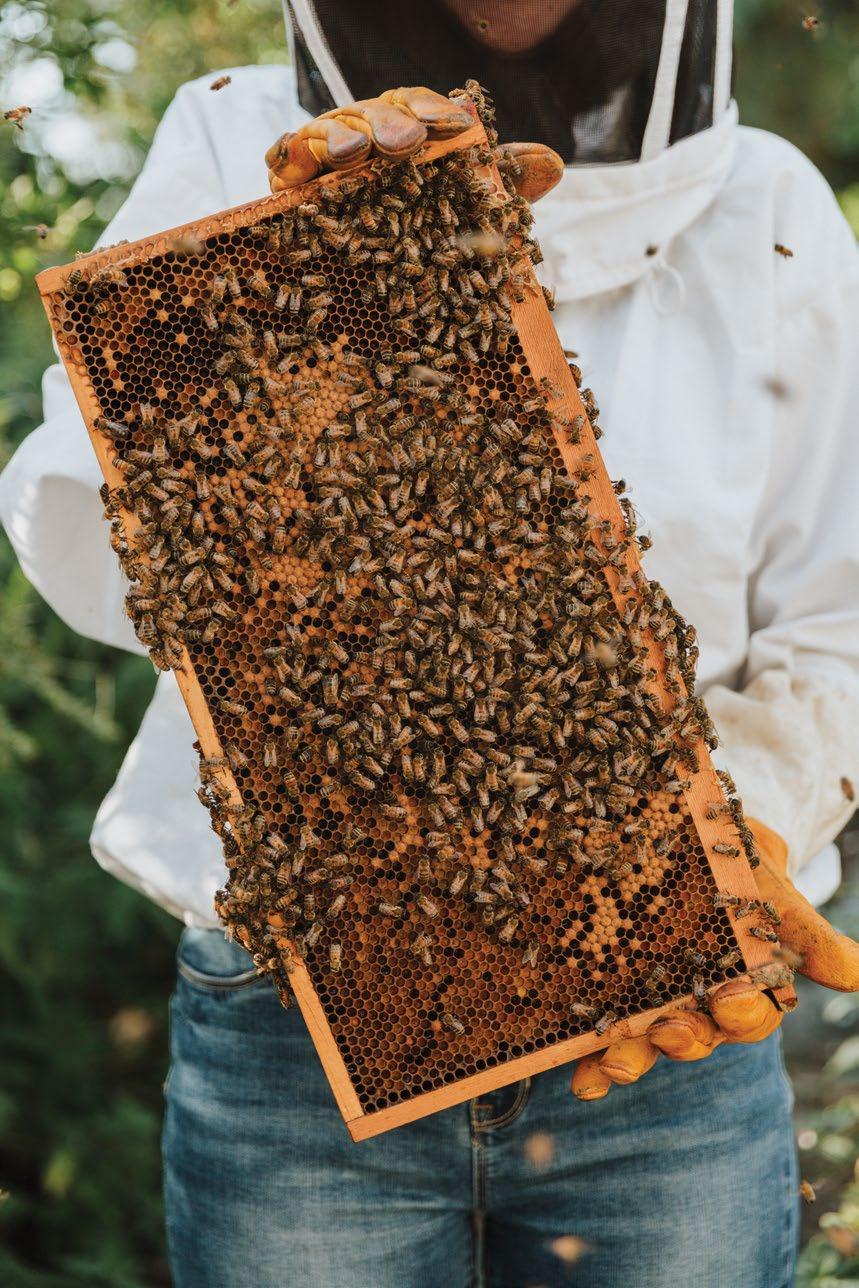
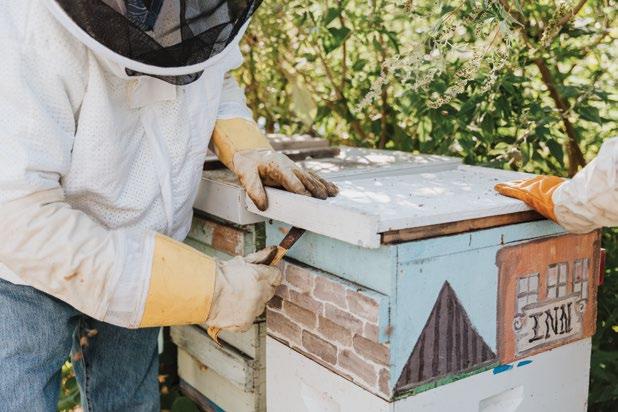
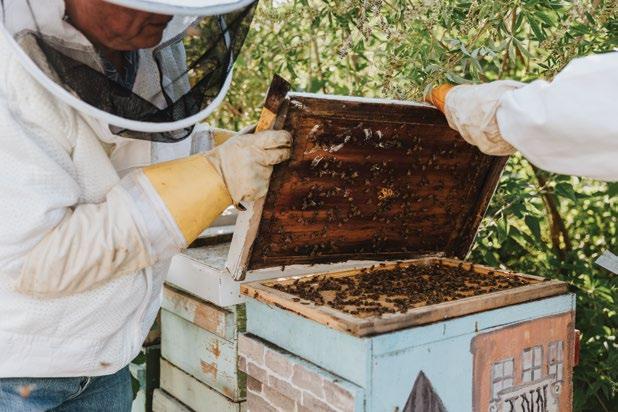
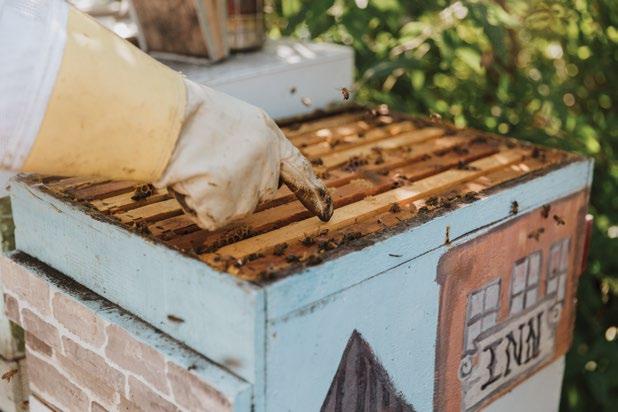

He sells his bees’ honey at Three Sisters, his wife’s shop in Willow Glen. Profits from honey sales pay for the 4H group’s supplies and go to Happy Hollow Park & Zoo’s Mountain Gorilla preservation fund.
Demkowski’s extended family also reaps the benefits of home-produced honey at the Sunday dinners that he and his wife host. “We use honey,” says Demkowski, “in spaghetti, chili, and everything you can possibly imagine.”
Demkowski says he got hooked on honeybees when a swarm landed in his backyard on San Jose’s Dry Creek Road and hovered above his swimming pool. There were so many bees that they seemed to block out the sun’s light. After a panicky internet search for information, Demkowski learned that swarms weren’t dangerous and braved going outside to take a closer look. Surrounded by tens of thousands of swirling honeybees, his fear abated somewhat when he shut his eyes and inhaled their lemony scent. Then he really heard them buzz. With the wind generated by the tiny beating wings massaging him, he felt euphoric at being one with nature. From there, Demkowski says his life became “all about the bees.” He began beekeeping and mentoring beginners.
Mother-daughter duo Trisha and Capriana Jiang became Demkowski’s apprentices nine years ago when they joined the El Sereno 4H group’s Beekeeping Project at History Park. Trisha is a computer scientist and technical evangelist at IBM. She grew up in a small ranching community in Prescott, Arizona, where she was a 4H member. Trisha enrolled eight-year-old Capriana in 4H because she wanted Capriana to benefit from the activities 4H uses to develop its members’ confidence and leadership skills. Trisha also liked the way 4H projects provide opportunities to learn about science, technology, engineering, and math. “Another nice thing about 4H is they really encourage parents to participate,” says Trisha, “so beekeeping was something we could do together, and we could both learn from Steve and the handson experience.”
A year later, a more experienced Trisha joined the Santa Clara Valley Beekeepers Guild. Soon after, Trisha and Capriana began backyard beekeeping at the Jiang family’s Almaden Valley home. Trisha says her husband was initially supportive because he understood how important honeybees are for the environment. “But he really came on board when he saw this beautiful honey that came from our household,” says Trisha, “that we could consume—
and it made the most perfect housewarming, thank-you, and Christmas gifts.” Trisha’s son is also on board with the backyard bees. He enjoys the granola, smoothies, and baked goods that the family makes with their honey, and he eats it by the spoonful to relieve his allergy symptoms.
Trisha says her neighbors appreciate the Jiang’s gifts of honey and have no problem with the Jiang’s hives. They also appreciate having nearby beekeepers. “People call us if they see a swarm of bees in our neighborhood because they know Capriana raises bees and knows what to do,” says Trisha. “I can’t tell you the number of times that Capriana has been asked to come over to help catch a swarm.”
Today, 17-year-old Capriana is a college-bound senior at Leland High School. After she graduates, she wants to major in biology with an emphasis on environmental conservation, and then go to medical school. Capriana is the teen leader of the El Sereno 4H Beekeeping Project and is a zooteen at the city of San Jose’s Happy Hollow Park & Zoo.
Happy Hollow is a small zoo, but it has a big reach. Funds from its Quarters for Conservation Program are used to protect endangered Brazilian jaguars, Asian pandas, and Tanzanian lions. Charlotte Orr, Happy Hollow’s conservation manager, says that their bee project is a huge part of their conservation work. “The Park not only serves as a preserve for pollinators,” says Orr, “but funds from our beekeeping workshops and the sales of honey from our beehives help protect the world’s last mountain gorillas at Virunga National Park in the Democratic Republic of Congo.”
Happy Hollow’s Zooteens Program gives youths ages 14 to 18 the opportunity to work closely with the Zoo’s educators, zookeepers, animals, and the public. Applications are accepted from November through February, but limited openings make this program highly competitive.
“The really great thing about my work as a zooteen and beekeeping with 4H is that I’m actually doing real environmental conservation work,” Capriana says, then adds that you don’t have to be a beekeeper to help the bees and the environment. There are small things that everyone can do. “You can plant bee-friendly plants, and you can protect swarms by calling a beekeeper. You can carpool and recycle—I know that people say that a lot, but it really makes a difference.”
57 C
“Honey is the purest form of food. We don’t have to do anything to it; it’s totally ready for us to eat.”– Steve Demkowski

58 Dine 10.5
Owner Molly Adams
TAQUERIA
Tac-oh!
WITH A TWIST
TAC-OH! SEEKS to set itself apart, even before its flavorful food touches your taste buds. Mexican with a Californian twist, the restaurant visually accentuates its fusion blending by contrasting a modern color scheme of bold red, green, and gold with a weathered brick accent wall. This upbeat, funky taqueria is the newest concept of owner Molly Adams’ brand, the youngest sister of a family of restaurants including Opa! (authentic Greek cuisine), Willard Hicks (steakhouse and grill), and Mo’s (breakfast and burgers).
As with its older sisters, Tac-oh!’s décor was all selected and placed by Adams herself. “I can walk into a place, and I can sort of see it the way I want it to look,” Adams says. The most prominent feature of this location is spiny lights that almost defy description—golden urchins perhaps, possibly frozen fireworks. “I didn’t know I wanted these crazy, spiky, pointy lights,” Adams comments. “But I knew that I wanted something fun, and I knew that I wanted gold accents.”
Initially in tech, Adams was surprised to discover her creative streak upon entering the dining industry. “I got into this business by accident, really,” she says. After burning out on the breakneck pace of startup culture, she was introduced to her former business partner who was looking to expand the Opa! brand at the time. When Adams became the sole owner, she delved deeper
Tac-Oh! 399 South First Street San Jose CA 95113
tac-oh.com Facebook tacohmexicancomfortfood Instagram tac_oh
Written by Johanna Hickle
Photography by Daniel Garcia
59



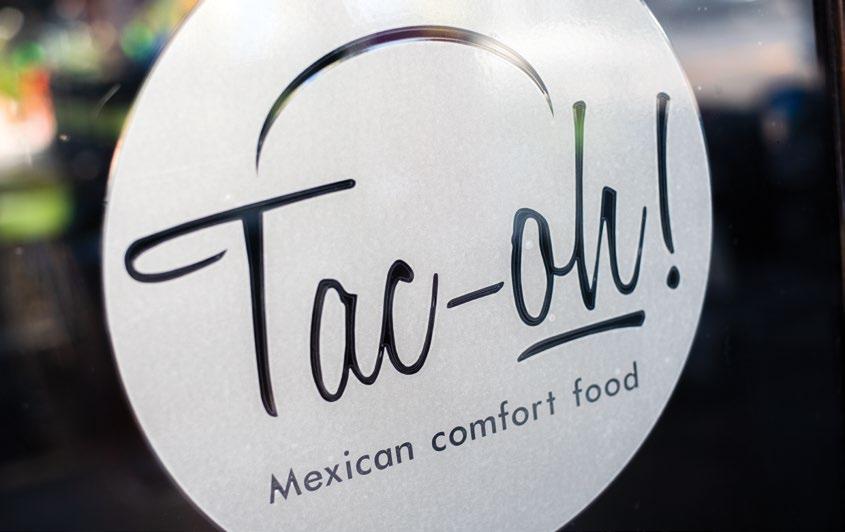

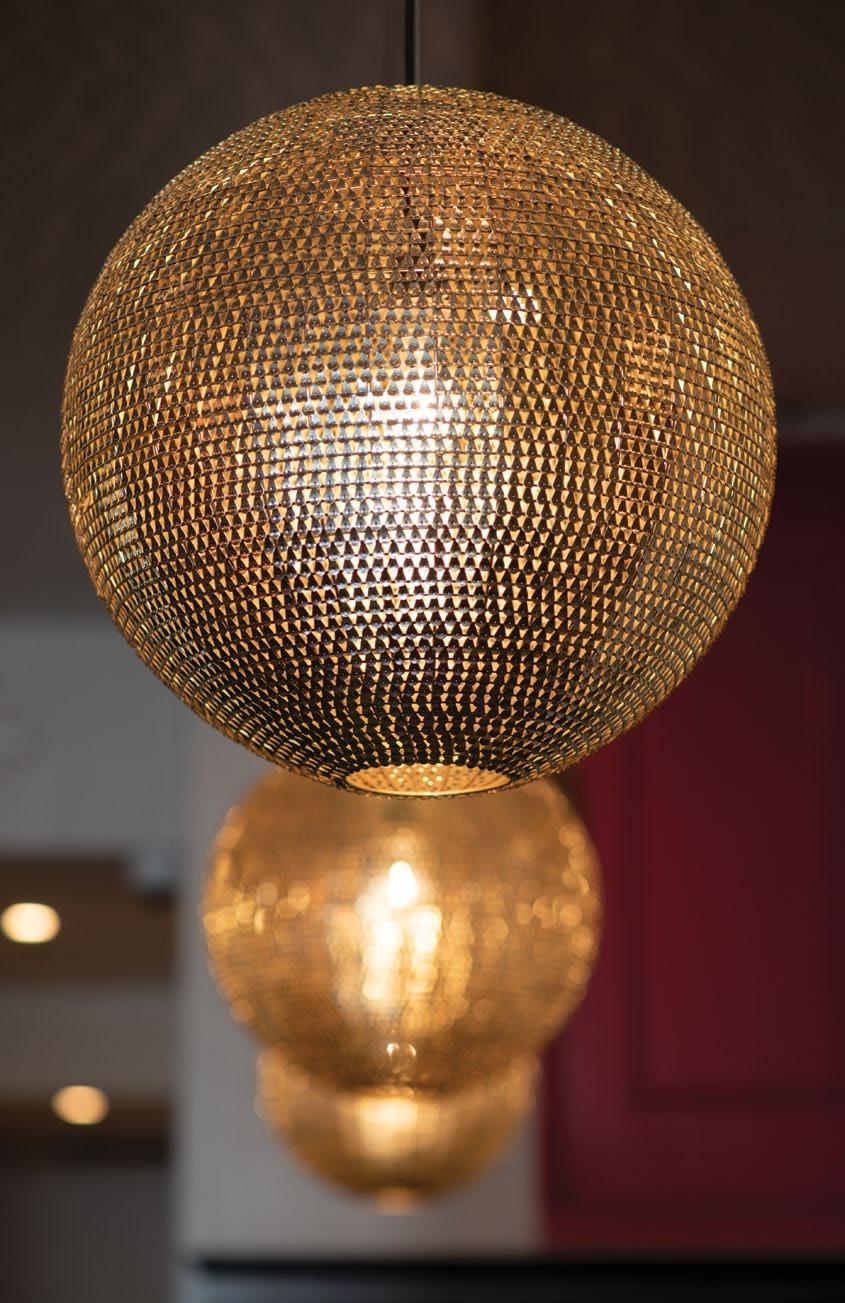
“You just jump in and do it. Ask questions. Figure it out. You might mess up, but you can then selfcorrect and change directions.”
Adams’ creativity overflows into much more than interior design. She bends her imagination to the menus—considering color scheme, offerings, and creative names for each item. She also enjoys plating dishes to ensure a pleasing presentation. As these edible art pieces are set on the table, it’s not uncommon for guests to savor them visually for a few seconds before succumbing to the urge to dig in to Mexican comfort food.
What constitutes comfort food? “I suppose that depends on who’s defining it,” Adams muses. Of course, there’s your traditional side dishes like Spanish rice and refried beans with cheese. “I really like fresh, bright flavors,” Adams says of her own definition of comfort. She then notes there’s also warmth in an inclusive menu. “I focus on an offering to suit everybody. Just because I don’t like something or I do like something doesn’t mean that you’re going to like it.” The restaurant offers light and heavy meals, vegetarian and keto options, and all the anticipated staples like chicken, carnitas, carne asada, al pastor, ahi, and shrimp. One special dish Adams and her executive chef crafted to assure satisfied vegetarian guests is the crunchy avocado tacos. Picture crispy tempura avocado, layered with pico de gallo and arugula, and sprinkled with radishes and cilantro.
Of course, the vibe of any restaurant is also heavily influenced by the values of its fearless leader. Though Adams’ brand staffs about 1,000 employees, she still makes an effort to know names.
“I try really hard to make sure that everyone on the staff knows that they can talk to me. Just because I’m the owner, I’m not unapproachable.” Adams also emphasizes her readiness to roll up her sleeves.
“I need them to understand and know that there’s nothing that they’re asked to do or expected to do that I wouldn’t do, and I wouldn’t do right along with them—or do for them to make whatever is going on in their situation easier.” Practically, this means that if everyone else has their hands full, she’s not above taking out the trash.
Though Adams oversees 11 restaurants (with five more on the way), Tac-oh!’s location, on the corner of South First Street and San Salvador, holds special significance to her. She explains that upstairs she used to frequent the Agenda Lounge, a SoFA District staple for many years. One of the DJs became her husband; he also happens to own the new club upstairs, Avery Lounge. On Taco Tuesdays and Friday and Saturday nights, the couple’s DJ friends (many of whom they met at Agenda) perform at Tac-oh!
It’s Adams’ hope her latest restaurant will become the neighborhood’s go-to taqueria, part of the next generation of downtown hangouts. “I mean Tacoh! should be your place to go to for tacos, right?” she laughs. C

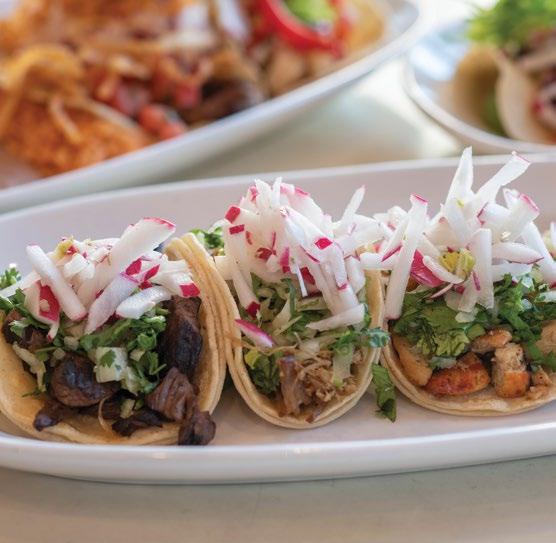


61
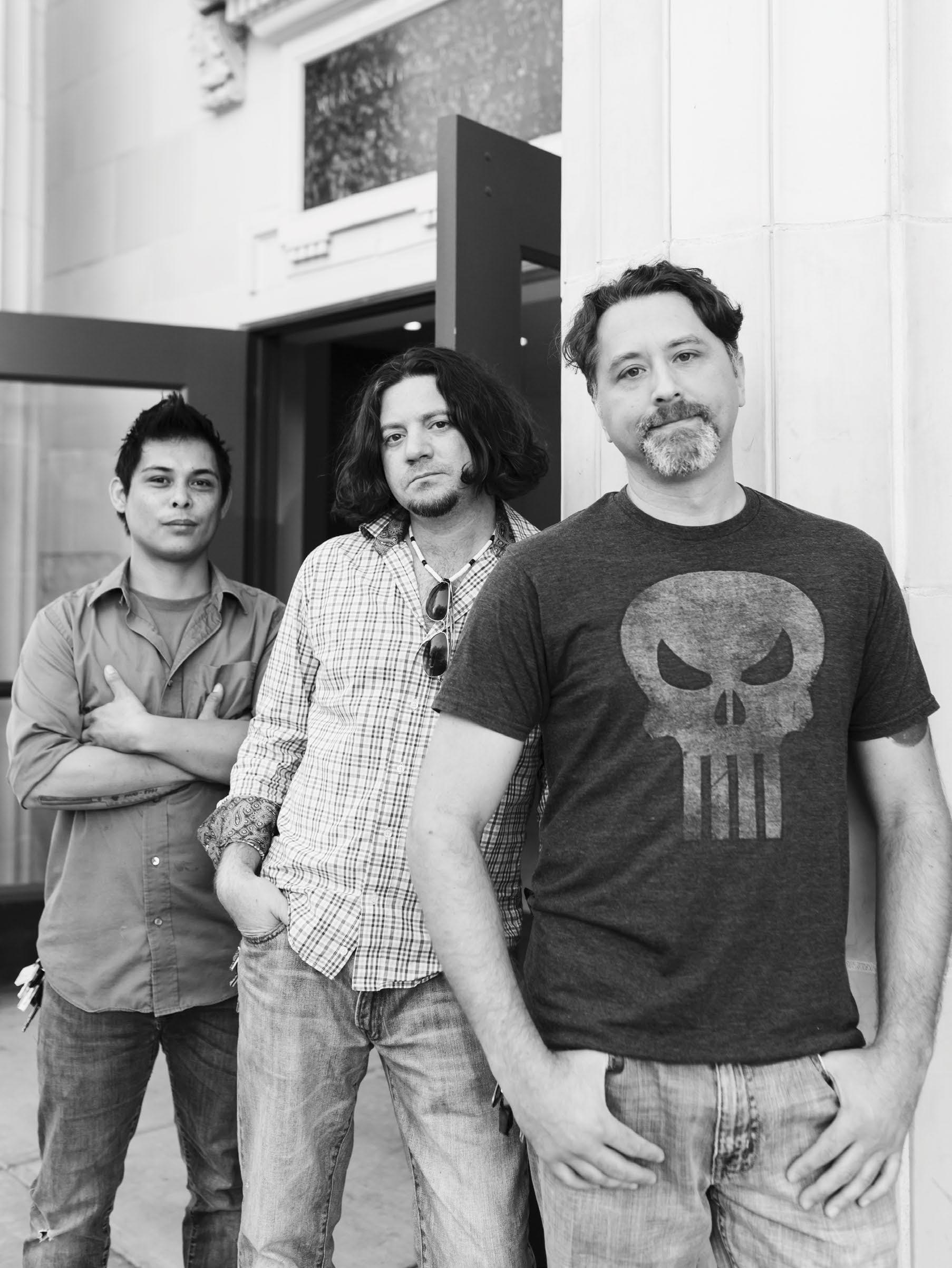
LVL UP
GASTROPUB MEETS GAME NIGHT
Photography by Arabela Espinoza
LVL UP Arcade & Gastropub in the historic Gaslighter Theatre 400 E Campbell Ave Campbell, CA 95008 thelvlup.com Social Media lvlupcampbell
Written by Michelle Runde
63
Left: Ron Afortunado (co-owner), David Ramsay (head chef and co-owner), Josh Schulenberg (co-owner).
Laughter and the ringing chimes of dozens of arcade games mingle with the smell of hot food wafting through the doors of LvL Up, the new Campbell gastropub that triples as a restaurant, cocktail lounge, and retro arcade. Tucked inside the his torical façade of a former bank, the shouts and cheers of LvL Up’s patrons cause passersby to pause and see what has adults and children alike so excited. And it’s no mystery why: combining nostalgic and modern games with high-end food, LvL Up redefines a night out in Campbell.
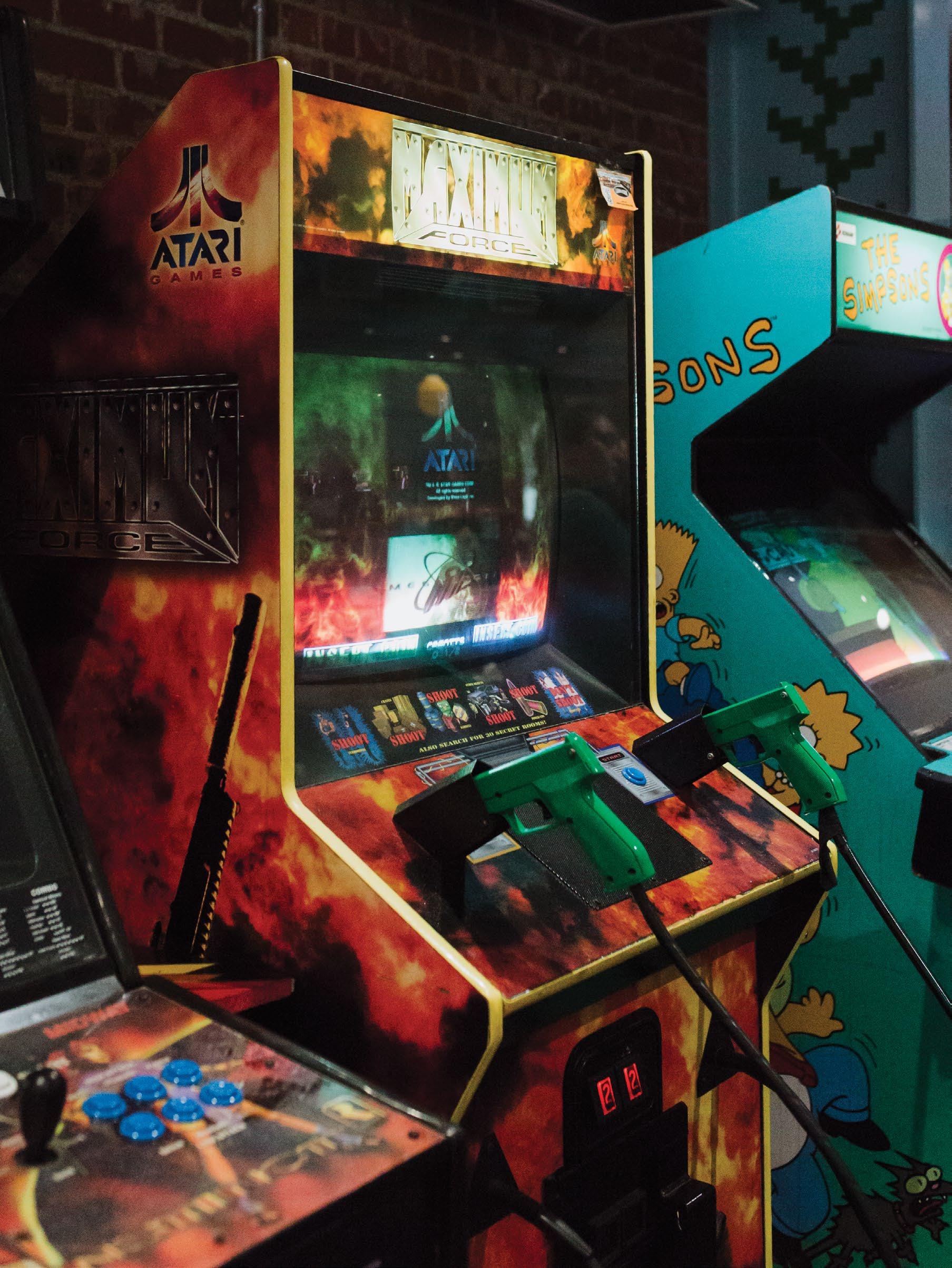
After working as an executive chef for 16 years and opening five restaurants, David Ramsey–chef and co-owner of LvL Up along with Josh Schulenberg, Ron Afortun ado, Jason Clough, and Jeffrey Clough–was ready to open his own place. Looking for a way to differentiate his dining establishment from others, he reached into his past for inspiration. “When we were growing up, video games were something you would go to your friend’s house to play,” said David. “You wanted to get ev eryone crammed in a room, trading controllers and talking to each other. But as we’ve gotten older and video games have advanced, I’ve noticed that people are playing a lot more on the phones or on their computers, and it’s a very isolating experience.” In LvL Up, isolation is not a problem. There are dozens of multiple player games, including four-person Pac-Man and a unique 10-player game called Killer Queen. Only 50 units made, Killer Queen not only involves lots of players, it also has viewing screens that let other patrons watch and cheer players on. No one in LvL Up has time to pay attention to their phone screens when there are so many things to do and see.
Just as entertaining as the arcade games is the extensive catalogue of board games available for anyone to play. Great for playing with a large group or breaking the ice on a first date, the board games have proven to be a surprise success. “I’m a big board game dork, so I was really pleased to get all these games from my childhood,” said David. “It was kind of a second thought to have all these old board games out here, since the arcade was what we were mainly focused on.
BE SURPRISED IF YOU
YOURSELF
YOU
LEAVE.
DON’T
FIND
THERE LONG AFTER
PLANNED TO
But the response we’re getting from the board games is just absolutely amazing.” David recalled a recent real-time demonstration of the impact of these games. “The funniest thing I’ve seen in just a few months of being open is four 40-yearolds losing their shit over a game of Sorry!—just breaking down and screaming.” You can find just about anything in LvL Up: Guess Who?, Operation, Candyland, Monopoly, Battleship, a giant Connect Four, just to name a few. And if you think you’ve played them all, don’t worry. Each month a few games are rotated in and out to keep the selection fresh.
All this game play is bound to make anyone hungry, and LvL Up is there to serve. Having worked in restaurants across all types of culinary styles, David focused on crafting a menu that he liked and knew others would enjoy rather than a single cuisine. From meatballs and garlic naan as starters, to fresh poke salad and lob ster tortellini, David’s goal is to have flavorful food at a reasonable cost. “I pulled from a lot of my favorites, particularly seafood since it’s something I eat frequent ly,” said David. “But I wanted to have a balance of things that were comfort-foody along with items that had a more high-end flare, and it’s also about 30 percent vegan.” Taking a non-exclusionary approach, David and the co-owners wanted to ensure there was something for everybody.
To wash everything down, adults can order one of the many beers, wines, or spir its but would be remiss to leave without trying one the signature cocktails. And if you’re looking to combine dessert with a drink, be sure to order a “Naughty Pop,” an adult spin on the classic Otter Pop that adds alcohol to this frozen childhood favorite.
So next time you’re in Campbell, bring your quarters and friends for a dining experience you’ve never had before. Don’t be surprised if you find yourself there long after you planned to leave. With endless games and spectacular food and drinks, it’s hard to leave LvL Up without playing just one more game. C


65
Written by Gillian Claus
Photography by Stanley Olszewski
The Lexington House STEPHEN SHELTON
The Lexington House 40 N Santa Cruz Avenue Los Gatos, CA 95030 thelexlg.com
Social Media thelexlg
It sounds perfect: the wine is chilled and the plating is simple and understat ed—just enough food, artfully presented, but not so small as to leave the spec tre of poor value hanging over last week’s paycheck. Speakers nestled into each corner pipe provide curated coffeehouse sounds. The copper-clad table is positioned off center, in a romantic nook right beneath a string of Edison bulbs. So what is missing?
This happens all too often in Silicon Valley. The rushed pace of modern cus tomers has all but removed the social aspect of dining—who has time to linger anymore, let alone savor a quiet cocktail with a real-life friend? We know when something feels right, but what really makes that happy coincidence happen, and can it be replicated every night?
Stephen Shelton thinks he and his partner, Jimmy Marino, have cracked the code. With the help of chef Philippe Breneman, they have designed a different sort of evening meal, focused on local ingredients available seasonally and served in a rustic setting. While hardly unusual in San Francisco, Shelton ad mits he took a gamble on bringing such an aesthetic to the more traditional downtown Los Gatos in 2013.
After studying to be a city planner in San Francisco, Shelton followed his fi ancée down to the South Bay. While job hunting, he picked up work tending bar. He did the bar program at Cin-Cin, favoring higher-end spirits and the fine craftsmanship he had learned during his time pursuing winemaking at Sono ma State. People loved the emphasis on craft cocktails so much that within nine months, sales had doubled. His fiancée, Kim, said, “Why are you doing this for someone else? Why don’t you do it for yourself?”
Although he had come to love the community feel of Los Gatos, Shel ton felt the dining scene was a little too firmly rooted in tradition. Families liked to go where grandpa had always taken them, but would they welcome something different?
66 Dine 10.5

He had a feeling that Los Gatos was ready for the place he had in mind. Trust ing each other’s strong work ethic, Shelton and his partner, Jimmy Marino, opened a restaurant with a full liquor license. It took them two years to find the right spot, determine how much money to put in, and find investors. When the spot on Santa Cruz Avenue fell into their laps, they counted them selves very lucky.
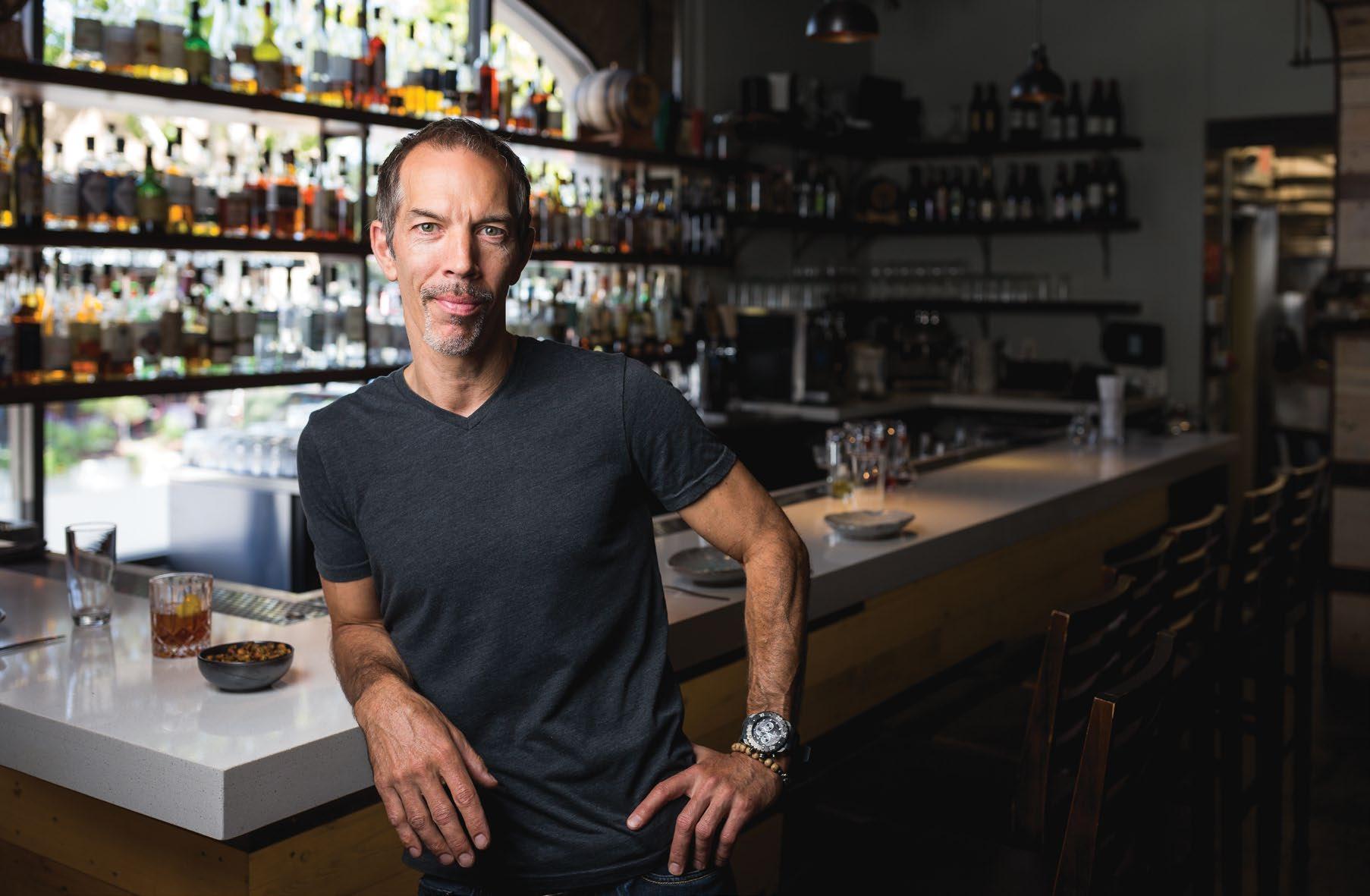
“Both Jimmy and I realized what we wanted to do was bring a little of San Francisco to the South Bay, because we knew that the people who live here love the finer things, but they don’t want to leave their town to go get them. So we just wanted to bring it to them versus them having to go to the city to get it. The emphasis behind it was not to overdo it—not to be the hip, happening badasses who are going to shake this town up. That wasn’t in our approach.”
Working within the 1200-square-foot space, Shelton and Marino started planning. They knew they needed to hit all the marks—great food, a warm atmosphere, welcoming ambience, well-trained servers—but the place also needed to fold seamlessly into the fabric of Los Gatos. Since he respected the town’s well-earned reputation, Shelton didn’t want to come in like a bull in a china shop.
What kind of name would reflect his aspirations? In adopting a strong farm-totable approach, “House” easily slotted into the moniker, but it was his fiancée, Kim, who actually proposed “Lexington” after the historic saloon town buried beneath the reservoir—a high-end name that reflects the past.
Designing the narrow rectangular restaurant was a challenge. As a self-con fessed “big tree guy” hailing from Oregon, Shelton’s first thought was nature, so they opted for a mural of large trees with bare branches, tying into the rus tic wood design of the counters—and of the sawmill town’s origin. So decided, they reclaimed the old wood used for the counters and slapped sealant on the brick wall.
68 Dine 10.5
“The emphasis behind it was not to overdo it—not to be the hip, happening badasses who are going to shake this town up. That wasn’t in our approach.”
–Stephen Shelton
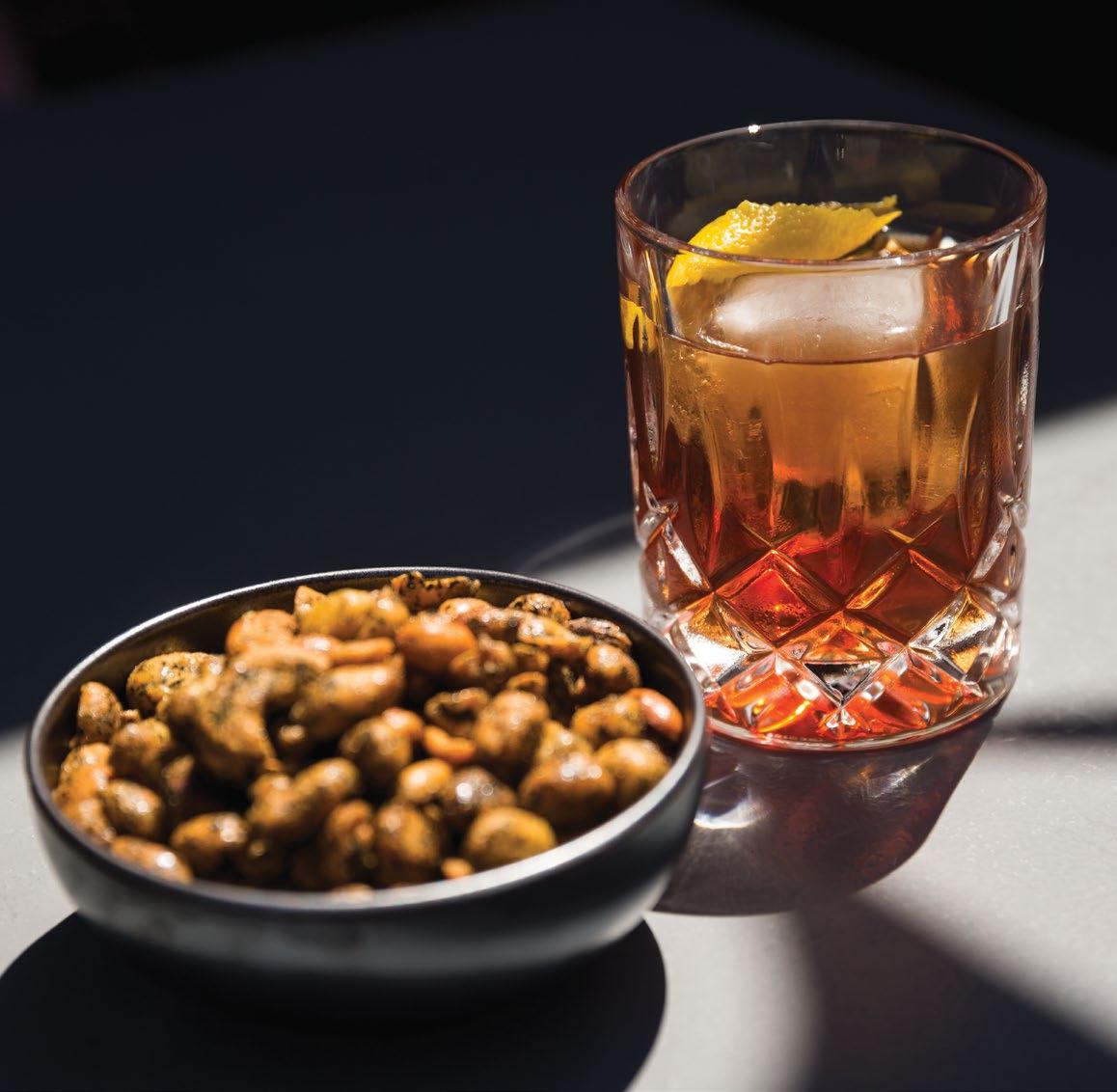
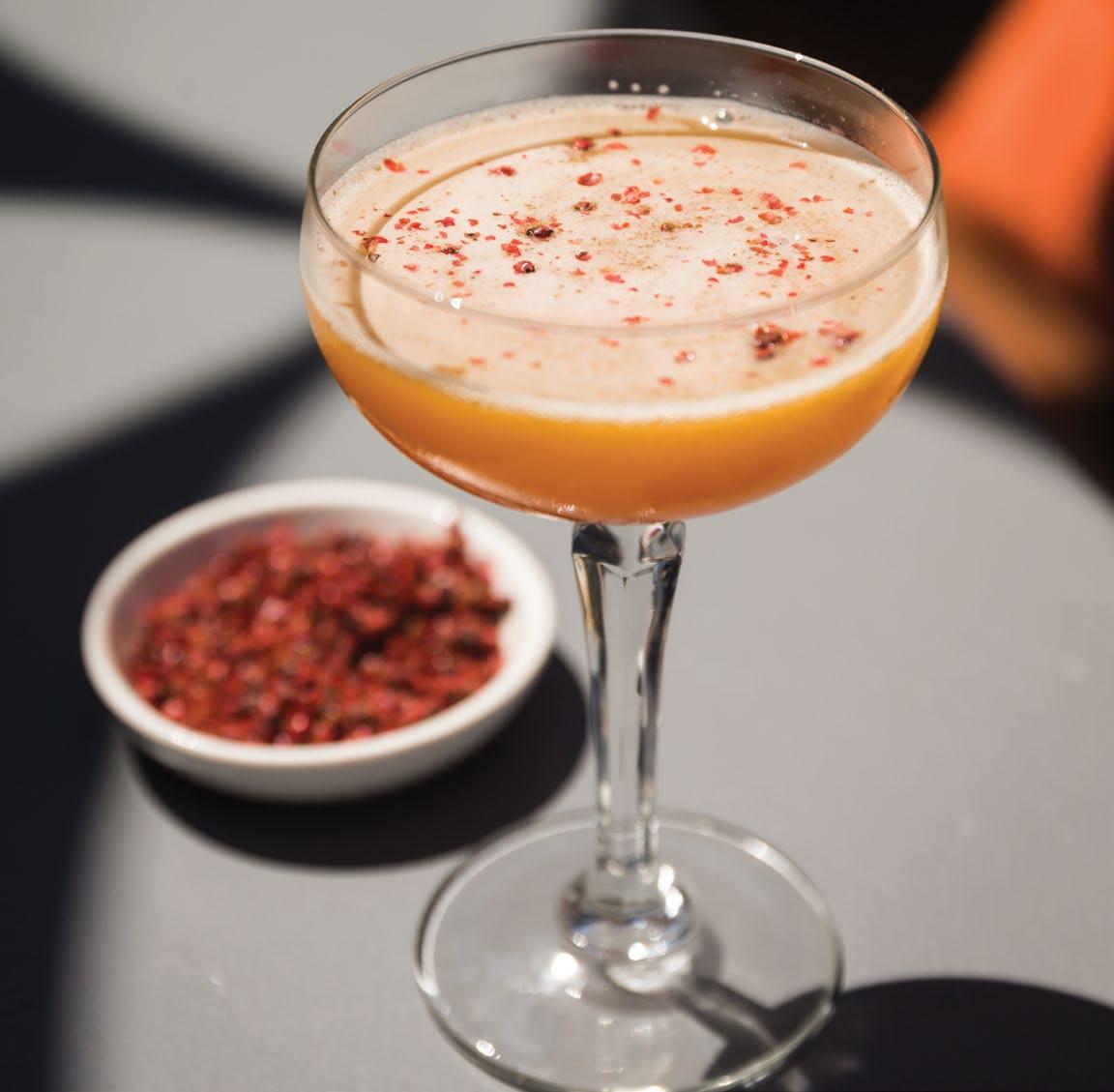
69

“We don’t know what we are missing until we get it.”
–Stephen Shelton
Turning their attentions to the rest of the dining experience, Shelton insisted on comprehensive server training, though he admits that no amount of knowl edge will make up for a staff that doesn’t care about food and customers. Luck ily, he gets to work behind the bar full-time, and his good attitude is infectious.
They have fine-tuned their business over the years. Shelton sensed a cultural shift in the restaurant business due to social media. Popularity by word-ofmouth can mean a long wait, so he eventually began taking reservations be cause of public demand—patrons felt rushed with people peering in the win dows waiting for a table.

In keeping with their attentive approach, chef Philippe Breneman is careful to select the menu depending on what is available from local farms according to the seasons. “We want the food to be approachable, not crazy expensive.” That doesn’t mean skimping on quality—expect farm-fresh fare like rhubarb jam, heirloom tomatoes, melon, and pea tendrils. Beyond that, daring sur prises await—like hamachi crudo with Thai chili or crispy octopus with cho rizo, almonds, and honey—contrasted with the comfort of pork chops with braised apple and cabbage.
Pairing their dessert menu with drinks, Shelton and Breneman guide their guests into a special occasion. In August, they matched their “summer camp fire” sundae—a chocolate custard, toasted marshmallow, cherries, and brown ie crumble—with a Ferreira 20-year tawny port. And there is another local nod with the “Charlie Chaplin”—Chaplin was a frequent guest at The Cats—an after-dinner combination of James E. Pepper Rye, Amaro Ciociaro, Hidalgo sherry, curaçao, and bitters.
Shelton has designed his cocktail menu in harmony with the seasonal menu. He knows that craft cocktails mean selecting family-owned, small-batch wines and spirits. The Lexington House makes their own syrups, bitters, and tinc tures. A mixologist knows that a well-balanced drink tastes different one min ute after it is mixed, compared with ten minutes. The standing bar rail for locals and afternoon traffic accommodates that timing well. But don’t expect a run-of-the-mill happy hour here. From 3:30 to 5pm, social hour rewards thirsty visitors with Pimms or old fashioneds, alongside crispy Brussels sprouts or toasted PB&J with roasted peanut butter and rhubarb jam.
While the Lexington House has settled into its place on the main drag, Shelton is still tweaking menus and adapting. With an enthusiasm for making people happy and consistently improving, he has found owning a restaurant both re warding and consuming. He still lives with his fiancée and two teenagers. But he admits that his heart and soul are in this place.
Shelton and his partners have created a connection to the city in the South Bay without pretension. After all, as Shelton says, “We don’t know what we are missing until we get it.” C
71 Dine 10.5 71

Life After Olympic Gold Boitano Brian
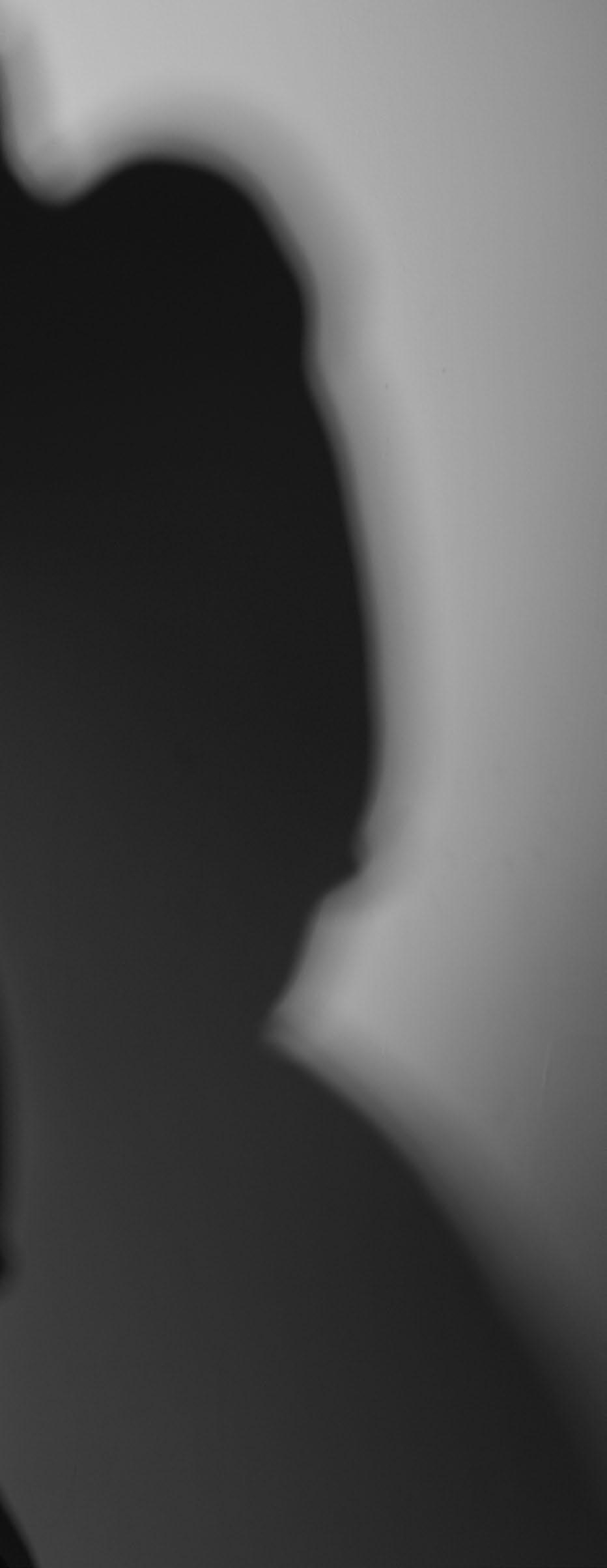
73
brianboitano.com Social Media brianboitano
Written by Johanna Hickle Photography by Daniel Garcia Studio BLiNK Creative Agency
As Brian Boitano skates onto the ice, the psycho logical weight is colossal. “It’s like the microwave gets turned on,” he describes, “and you’re cooking from the inside out, ready to explode.” The roar of 20,000 throats tidal waves over him and washes across the Saddledome. The almost palpably solid feeling of 20,000 pairs of eyes latch onto the back of his neck like a grappling hook. He strikes an erect pose, made all the more commanding in a blue mil itary uniform. Silence falls like an ax. The music swells. And Boitano’s skates stir to life.
That was 1988, and three decades later journalists continue to ask Boitano about the subsequent four minutes and thirty seconds of his life. After all, Cal gary ’88 earned him an Olympic gold medal in men’s singles figure skating. Only one other American has achieved that status for the same event since. The media also senses—as they did in the days leading up to Boitano’s triumph—a noteworthy narrative. For starters, America was predicted to come in second. Brian Orser, flag carrier for that year’s host country, Canada, was favored for the win. However, both skaters had similar skill levels as well as matching military-themed song and costume choices. Report ers were soon championing the slogan “The Battle of the Brians.” Add to all this Boitano’s invention of a move called the “Tano Triple Lutz” (extending one arm overhead during jump and rotation), and you have an underdog, a rivalry, new advances to the sport—ingredients guaranteeing a recipe for success.
Boitano isn’t bothered by the constant requests to relive the routine that landed him top of the po dium. “It was the culmination of everything,” he explains, “the culmination of all your childhood dreams and aspirations, the passion you have for it, the work that you put into it, all the people that had expectations for you, and the pressure you’re able to deal with.”
At 24, Boitano experienced a surreal moment of glo ry. “You know, at that moment, that nothing’s going to compare to that,” Boitano says. “That’s why it’s ingrained in my brain, so much that I remember ev ery single emotion.” The unadulterated delight and overwhelming emotion that crossed his face after his flawless finish is proof enough the memory will never lose its potency. But that doesn’t mean life after Olympic gold is destined to be anticlimactic. Boitano feels incredibly fortunate for Calgary, and he credits it for the blessings that followed.
Whereas Orser’s decision to become a skating coach is a conventional one, Boitano’s chosen route has been a little less predictable. He’s gone from lacing up skates to tying on apron strings as a Food Net work star and host. Though these fields are dissim ilar in many ways, they do carry commonalities. “You layer the elements and you come up with a great recipe,” Boitano notes of both. “With cooking,
it’s how a plate looks, how it smells, what the ingre dients are, how they taste. With skating, the layers are choreography, music, costume.” Food is also a performance, he observes, appraised by friends and family.
But there are also benefits to cooking that skating doesn’t offer. Renowned for his exacting technical accuracy on the ice, Boitano is surprisingly lenient with ingredients in the kitchen. “Skater Brian is lit erally precise and thinks of everything: every mo ment, every foot, every place,” he remarks. “Cook ing Brian, is…I sort of made this pact with myself to not get too in my head about cooking. There’s not much difference between a handful of parsley and a handful and a half of parsley—so let’s not measure.” He enjoys going by instinct, imagining flavor combi nations while brainstorming new recipes. “I like the freedom,” he confides with a smile.
Boitano’s playful synergy with food earned him his culinary debut with the Food Network. The title of the series—What Would Brian Boitano Make?—tips its hat to the song, “What Would Brian Boitano Do?” played during the cartoon South Park. It was infor mational, but it was also intimate (unique from the professional tone of the Network’s other shows at the time). In each episode, Boitano hosted events for his friends. These ranged from a sausage shindig for the Secret Society Scooter Club to a bacon-themed dinner for a women’s roller derby team. “It was a little bit irreverent, a little bit funny. I could show my goofy side, which was different from what every body knew me as on the ice.”
Indisputably, skating will always be the passion in grained deepest in Boitano’s heart. Until recently, he’s performed in shows and continues to swoop across the ice for recreation. “It’s the ultimate feel ing of abandon,” he enthuses. “You’re traveling across the ice at 25 miles an hour, and then you’re throwing yourself in the air, and you’re landing on a thin blade with complete control. There’s this com mand of the energy in the air that you feel when you’re doing it. And when things are exactly how you want it, it’s this entire picture of, in your mind, perfection of the moment.” He’s held that fervor ever since he witnessed an Ice Follies show at eight and began pretending his roller skates were ice skates, his kidney bean-shaped patio a rink.
Nevertheless, Boitano doesn’t miss the excruciating pressure of competition. He identifies it as 95 per cent a mental game. That critical inner voice is so palpable he nicknamed it “Murphy” after Murphy’s Law. “He’s saying ‘If anything bad can happen, it will happen.’ And you’re trying to punch Murphy down.” In contrast, Boitano takes his own pace with cooking and enjoys therapeutic late nights in the kitchen, testing new recipes and cocktails.
74 Dine 10.5

“It’s the ultimate feeling of abandon. You’re traveling across the ice at 25 miles an hour, and then you’re throwing yourself in the air, and you’re landing on a thin blade with complete control.”
– Brian Boitano

He also wasn’t very healthy as an athlete. At 16, he began regulating his diet with monastic devotion, quarantining himself from ice cream and his mom’s sandwich es. “I was always starving myself when I was training,” he acknowledges. Most meals consisted of baked potatoes with plain yogurt, salads with cooked pasta and diet dressing, and crackers with jam. He remembers wistfully watching food com mercials on TV and writing them down in a “someday” list.
Perhaps most telling is one of Boitano’s fondest food memories. While training in an Alpine village one summer, he was submerged in a number of food firsts: but tery croissants, fluffy quiches, creamy fondue, and gooey raclette. “They eat what they eat,” he chuckles. “They don’t have diet jam and crackers.” He recalls with amusement his coach’s consternation when he returned to the States, stepping off the plane with a few extra pounds—and not the kind in his suitcase.
To Boitano, cooking is a memory maker, a love language expressed to friends and family. “You remember the food, and you remember the stories, and you remember the time you had,” he says before reminiscing about pizza parties hosted for relatives in Italy. (Try not to smile picturing 35 loud Boitanos all helping out in the kitchen.)
Undoubtedly, Boitano continues to embrace life after Olympic gold. But skating will always be an integral part of who he is. It’s in the straight-backed way he holds himself—ever the effortless poise of a skater. It’s in the 24-year-old gleam in his eyes as he talks about Calgary. It’s easy to picture him out there—his blades slicing across the rink in a crisp, satisfying whisper, the air favoring him a little more than the rest of us mortals as he spreads his arms and soars into jumps. But the playful chef is in there, too. You can imagine him surprising a dear friend with paella, or learning to make pasta from his Aunt Maria. In the end, he continues to mix and blend his energetic and spontaneous passions for life into new concoctions as he shifts off the ice and into the kitchen. C

77
Stanford Theatre

Passport to the Past
Written by Johanna Hickle Photography by Daniel Garcia
The Stanford Theatre 221 University Avenue Palo Alto, CA 94301 stanfordtheatre.org Facebook stanfordtheatre Twitter stanfordtheatre
78 Dine 10.5
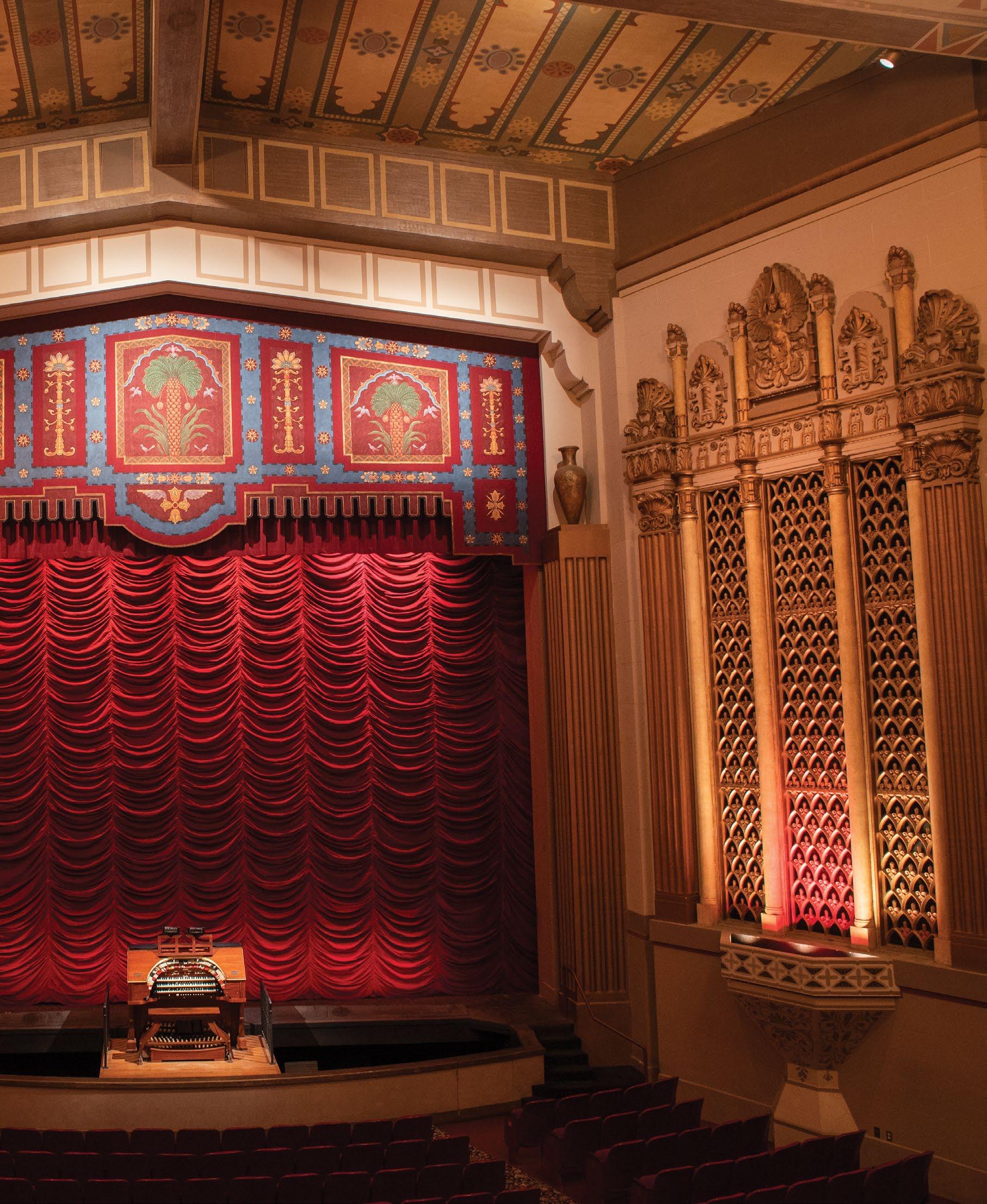
For almost a century now, the Stanford Theatre has been an institution in downtown Palo Alto. It’s seen shops and decades emerge—and then dissolve. It’s listened as the rattle of wagonesque Ford Model T’s on the street outside gave way to the rumble of tailfinned Cadillacs and then to the whisper of sleek Teslas. It’s welcomed audiences dressed in pinstripe suits and flapper dresses, tie-dyed shirts and flared pants, flowing maxis and understated khakis.
Its historical weightiness continues to draw in passersby today. As soon as your gaze lands on the majestic marquee sign above its entrance, the pull is almost irresistible. If you allow it to, the theater will tug you in through its doors, sweep you across a grandiose, chandeliered lobby, escort you up a blue-tiled staircase, and, finally, invite you into a red velvet balcony seat. As the red curtain parts in the front of the theater and an old black and white movie begins, you’ll have fully transitioned back in time.
In the summer of 1925, this neighborhood movie palace opened to great fanfare. Reginald Denny, star of that night’s motion picture, made an appearance, and the mayor gave a speech. The newspapers applauded the building’s mushroom ventilating system, remote-controlled switchboard system, and crushed silver curtains. They marveled
at the Greek-Assyrian paintings adorning its walls and took note of the maid in attendance in the “women’s retiring room.”
These days, you won’t be greeted by a maid when you visit the little girl’s room, but you’ll still witness decor identical to that of opening night. This hasn’t always been the case. By the time the ’80s rolled around, the Stanford Theatre had spiraled into disrepair. “It was a ramshackle, falling-apart, poor old skeleton of a theatre,” describes Cyndi Mortensen, general manager at the Stanford Theatre and the Stanford Theatre Foundation (the nonprofit that runs the theater). As it bounced from owner to owner, the elaborate GreekAssyrian details were painted over, the layer of grime thickened, and the seats rusted. Gone were the days when dancers, ventriloquists, acrobats, and other performers traveled to entertain in vaudeville acts accompanying the movie. Before long, it was reduced to second-run action flicks for 50 cents (a dime cheaper than ticket prices over half a century earlier).
Fortunately, that’s when David Woodley Packard, son of one of the billionaire cofounders of HewlettPackard, took center stage in the theater’s rehabilitation. After beloved singer, dancer, and actor Fred Astaire passed away in 1987, Packard rented out the theater for two weeks to
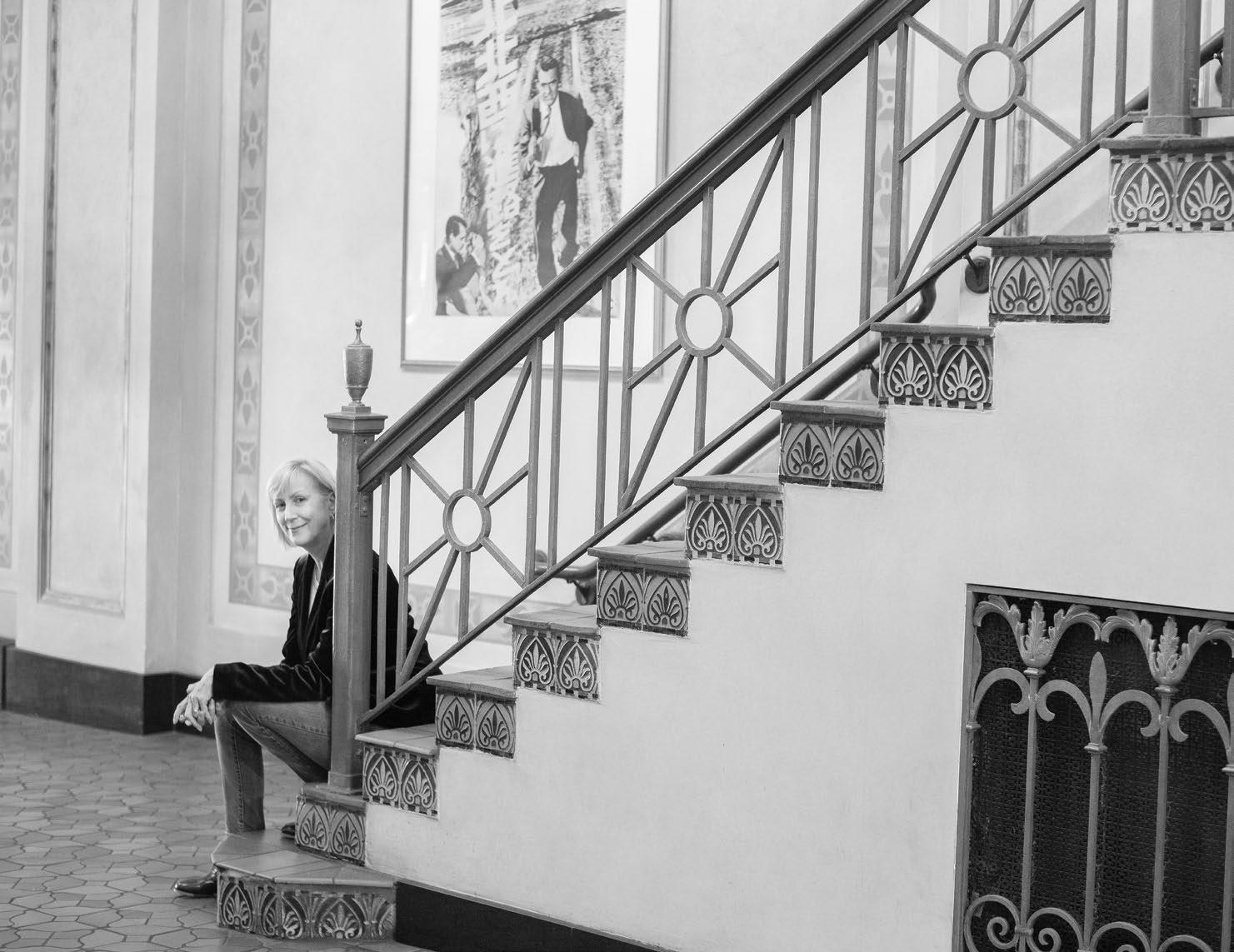
80 Dine 10.5
Cyndi Mortensen, general manager of the Stanford Theatre and the Stanford Theatre Foundation

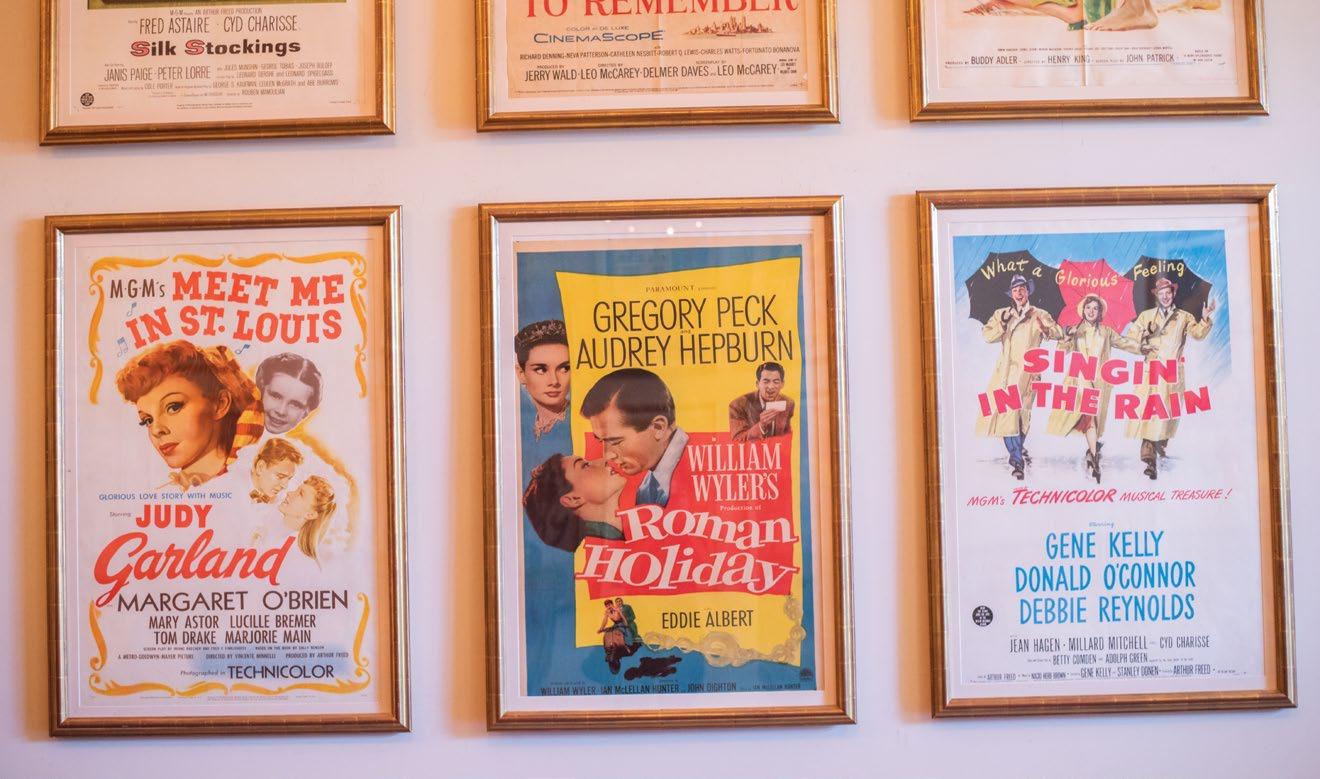

81
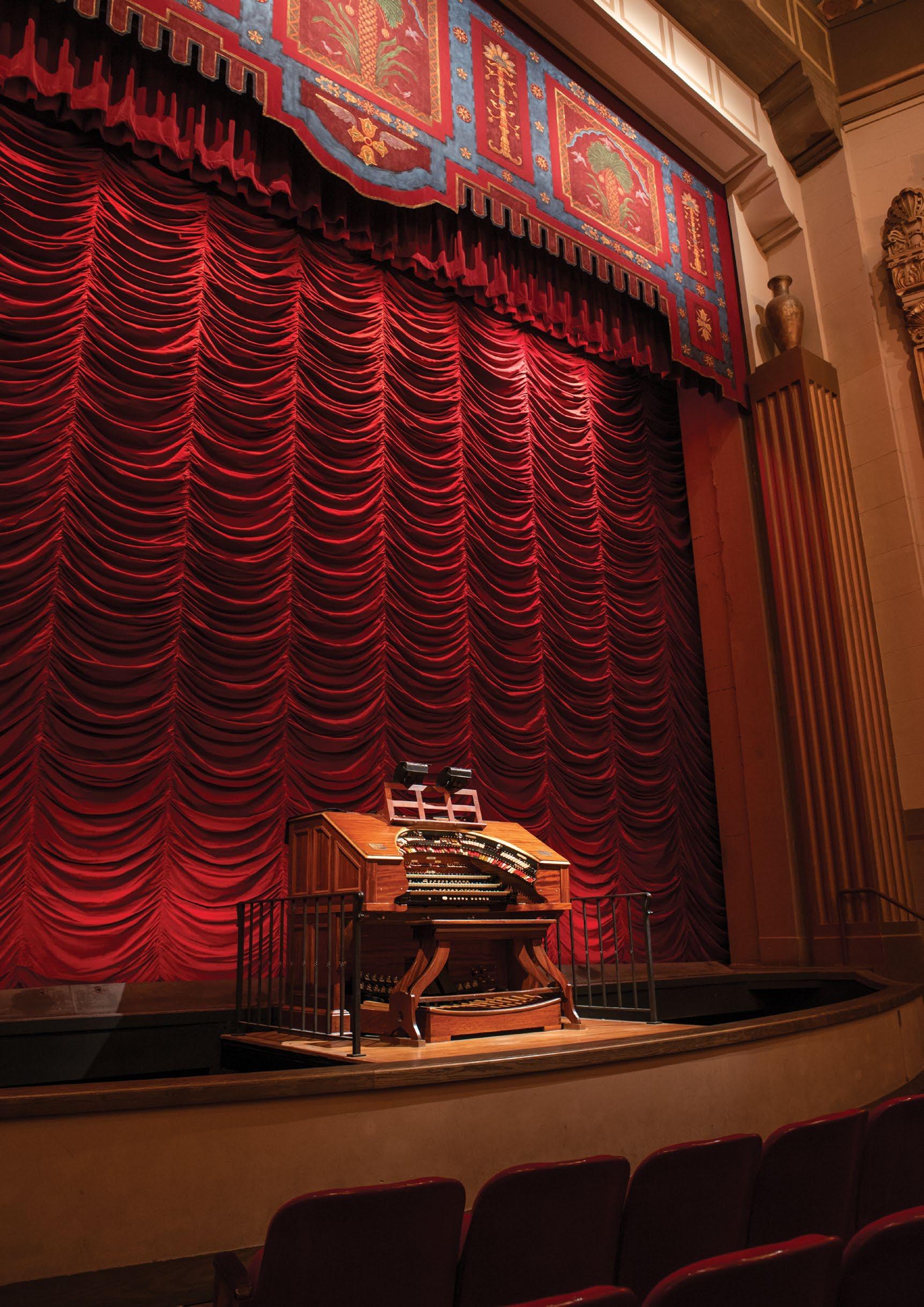
“They have heart. They resonate. They may be old— but they don’t get old.”
– Cyndi Mortensen
commemorate every movie the star ever made. His humble goal was to get at least 50 people to show up. Instead, more than 1,000 moviegoers lined up each night to savor the contagious tap-dance numbers of Astaire in his trademark top hat and tails. After such a remarkable success, Packard convinced his father and the Lucile Packard Foundation to purchase the theater and grant him stewardship so that movies from the silent era through 1965 could return once again to the big screen.
Packard took great pains to reconstruct the theater’s majestic original appearance. He spent close to two years and $6 million on renovations—a sizeable hike up from the single year and $300,000 it took to initially erect the theater. With the help of a black-and-white photograph and original watercolor sketches, he oversaw the return of the Greek-Assyrian detailing. He also restored the period chandeliers, stage pillars, seats, and curtains.
But the crowning glory of the jewel box theater was the Mighty Wurlitzer organ. It took six experts nearly two years to acquire and restore its pieces. Every night since the theater’s reopening, the Wurlitzer and its accompanying organist rise out of the stage floorboards during intermission to astound theatergoers with the musical complexity of keys, bells, and pedals. “It’s something that people don’t forget,” says Mortensen.
Packard is also behind the carefully crafted movie lineup. “He has very good instincts about these things,” says Mortensen, who occasionally contributes ideas herself and tracks down 35 mm reels from studios and archives. Programs vary by focus on genres (like screwball comedies), directors (like Alfred Hitchcock), and actors (like Jimmy Stewart). In the summer, the greatest hits of all time are on the screen.
The most beloved films? “Casablanca hands down,” Mortensen says. It’s hard not to fall in love with its suave, affably cynical hero and its clever dialogue (“Here’s looking at you, kid”). On the film’s 50th anniversary, more people watched the drama in the theater than anywhere else in America. Other crowd favorites include The Wizard of Oz and G one with the Wind. All three were released between the golden age years of 1937 to 1947, which Packard considers the peak of film as an artform. Movies starring Audrey Hepburn or Cary Grant also draw a dedicated following. And, of course, there’s the annual Christmas Eve showing of It’s a Wonderful Life, which is so adored that people start asking about tickets in July.
“I think most people would assume that we have mostly senior citizens,” Mortensen notes. “We do have some, but we also get all different ages.”
Parents enjoy introducing their kids to films they themselves grew up with. “We get these young teenage girls dressed as Holly Golightly. Which is really cute, but I don’t know whether she’s a great role model,” Mortensen chuckles, referring to the main character of Breakfast at Tiffany’s—a highend escort who goes on adventures with Paul, the “kept man” of a wealthy married lady. Mortensen also fondly recalls a group of elementary schoolers who visited the theater dressed as the squirrelly, bespectacled actor Harold Lloyd.
Then of course, there are the Stanford students. They’ve been a staple audience at the theater since the very beginning—for better and for worse. The theater’s close proximity to a college campus inevitably means student hijinks. One such shenanigan dates back to the night of November 7, 1929, when 150 first-years in pajamas rushed the theater (without paying) and stormed the balcony for a screening of “Our Gang.” Another night, after the theater’s restoration, a group of Stanford ballroom dancers twirled down the aisles as the organist played a tango from Astaire’s film, Flying Down to Rio
As if there wasn’t already enough personality in this one building, Packard added a gallery, stocking it with original movie posters, newspaper clippings, and other ephemera. Mortensen acts as curator, switching out displays to match the current program. During the months of Hitchcock and Other Masters of Suspense, the walls were covered with artistic renderings of intense action shots—like Cary Grant sprinting away from a divebombing plane and Grace Kelly struggling to break free from a strangler’s grasp. On special occasions, programs are accompanied with the actors’ costumes or, better yet, the actors themselves.
The Stanford Theatre’s success raises the question: why do old movies continue attracting modern audiences? “I think it has something to do with classic Hollywood acting,” Mortensen muses. “People don’t act like that anymore.” Classic movies are our passport to life of bygone eras. Actors, directors, and scriptwriters of decades past were influenced by a distinct environment that uniquely flavored their approach to storytelling. But these movies are also relatable. We can still empathize with feelings of frustration over injustice, heartbreak over unrequited love, amusement over minor miscommunications. “They continue to move us, speak to us, make us laugh, make us cry,” Mortensen adds. “They have heart. They resonate. They may be old—but they don’t get old.” C
83
On
WhereIOnceStood
, songwriter Marissa Muraoka shares about loss and longing with striking honesty, revealing a star-inthe-making long overdue for the spotlight.

MARISSA MURAOKA
Outfitted onstage in head-to-toe black, albeit with a subtle floral pop to her button-up, 27-year-old Marissa Muraoka achingly strokes the strings of her deep red Fender Jazzmaster, adding a reverbglistened weight to her solo take of the Beatles’ “Don’t Let Me Down.” She’s the middle act on the night’s bill, performing after Taylor Rae and warming the crowd up for headliner Ren Geisick inside a packed house at the Art Boutiki. Muraoka seems nervous between songs, but maybe that’s just the residual unease that comes with authentically channeling art mined from the depths of heartbreak and the startling uncertainty that follows in its wake.
Her voice delivers lyrics with a frail command, containing both power and vulnerability. There’s an honest reflection in Muraoka’s approach, one that tugs at your heart in a profound way and finds you sitting in that chasm alongside her, gazing into the deep unknown and seeking whatever the pain and longing and loss is supposed to provide. It’s that quality that makes her a star, the astounding ability to let it all hang out, even amidst a room of strangers.
It’s hard to believe how long she kept her gift under wraps, given the reception she’s received around her debut EP, Where I Once Stood, from friends and fans alike. She’s been on the South Bay scene for less than two years but admits she’s been obsessed with singing for over 20. “When we were younger, [my friends and I would] set up stuffed animals and perform in front of them,” she recalls. “I always used to sing as a kid. I just loved being on stage. It didn’t scare me.”
The Beatles seem to have always been present–“Blackbird” was the first song her father taught her on guitar, and she was sold on the instrument as soon as she mastered the chords. Her early favorites were an eclectic mix, with the pop music of Britney Spears and the Spice Girls juxtaposed with classic material from Led Zeppelin and Joni Mitchell.
Though her severe self-doubt had long relegated her music to her bedroom (“I’m still just kind of in my
head too much,” she admits), she finally confronted her fear after returning to the South Bay from UC Santa Barbara. From then on, she was determined to not let her reluctance overtake her passion. That dynamic underscores the fiercely intimate space music occupies for her. “It’s not just a hobby; it’s literally who I am,” stresses Muraoka. “I feel like I don’t have a choice, and that’s how I’ve felt for a really long time. I wake up in the morning and I have to write, or I have to sing. If I don’t sing every day, I’m a wreck.”
Songwriting had always been an outlet for her to process life experience, which Where I Once Stood reveals all too well. The songs, deceptively simple, reveal a blunt honesty of emotion married to evocative imagery, highlighted by lyrics like “you carved maps in my heart,” sung with a detached longing on “Falling Away,” or “I don’t know who I’ve become, and every time I move, my body still aches for you” on “Everywhere I Go.”
“Putting out this EP was like me saying ‘I’m not going to let whatever’s going on in my life keep me from whatever I love,’” shares Muraoka. “I think I put such a pause on that, and I’m happy I did the EP when I did, but I was also just going through such deep reflection.” Truly, listening to Where I Once Stood, aching in its honesty, can feel intrusive at times. However, it’s likely the intimacy of listening to those moments that makes the music so poignant.
She says new material is definitely on the way, and that her sound will likely be heftier thanks to her Jazzmaster (she calls her new musical vision “a little more dreamy pop”). Thanks to the support of close friends like fellow South Bay songwriter Socorra, Muraoka is as active as ever on the local scene.
“That’s always been the high: onstage, and forgetting everything, because you’re in the moment,” she says. Even if that passion had long been tucked away, 21 years on, there’s still no wavering to her passion for performance.
Written by Brandon E. Roos
85 C
Photography by Arabela Espinoza marissamuraoka.com Social Media marissamuraoka
by Brandoon E. Roos
DAVID BROOKINGS
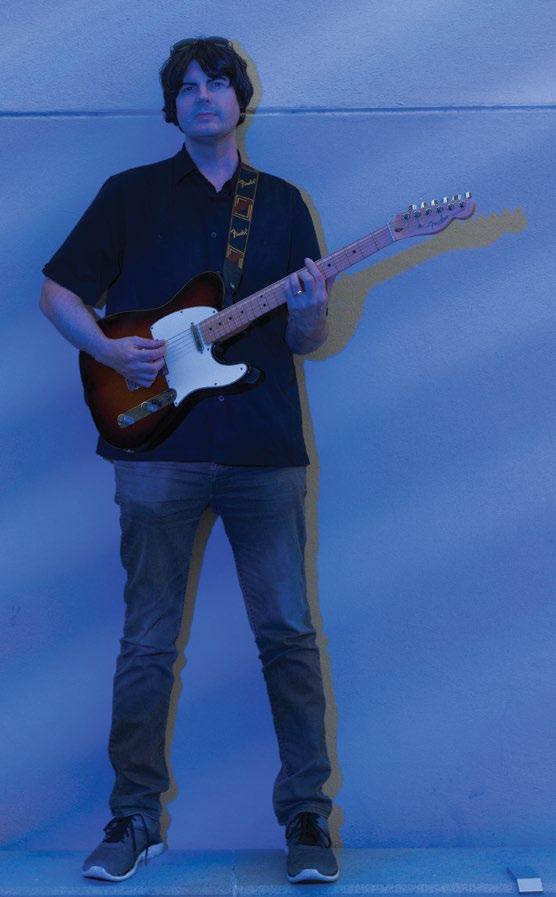
Memphis to the Bay Area
Under a canopy of shade at sunset in Plaza de Cesar Chavez, David Brookings sings directly to a lovely lady in the crowd. “I’ve never seen you look as good as you do tonight,” coos Brookings on solo guitar, covering Chris de Burgh’s staple, “Lady in Red.” He’s serenading young Brady, 14 months old and the younger of his two daughters, who is, indeed, outfitted in that very hue.

With a music career that spans close to 30 years and a catalog that now stretches to include seven fulllength albums and a best-of compilation, Brookings is clearly serious about his craft. But as moments like this reveal, he still knows how to have fun on stage. “I know so many people that stopped doing music after they had kids, and I can’t fathom that,” says Brookings prior to his performance. In his case, it seems to have added another layer to his passion.
Brookings’ musical beginnings started in his native Richmond, Virginia, with the TV series, The Monkees, though his father’s vinyl collection soon took him even further down the rabbit hole. “I was looking through his records, and I saw the Beatles’ Help! I just thought my hair looked like theirs,” he recalls. “It was the best thing I’d ever heard.” Alongside the Fab Four, he was listening to the Rolling Stones, Chuck Berry, and Herman’s Hermits. He had his first
86 Dine 10.5
Written
davidbrookings.net Facebook davidbrookingsmusic Instagram davidbrookings1 Twitter davidbrookings
Photography by Scott MacDonald
guitar at nine, started writing his own material at 11, and began playing club gigs around Richmond at 15. Brookings adds, “It’s been an obsession ever since.”
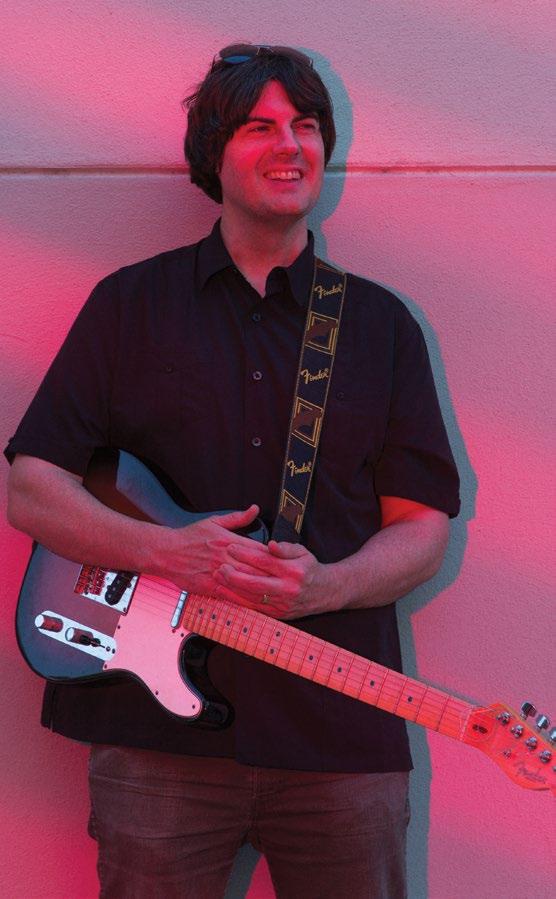
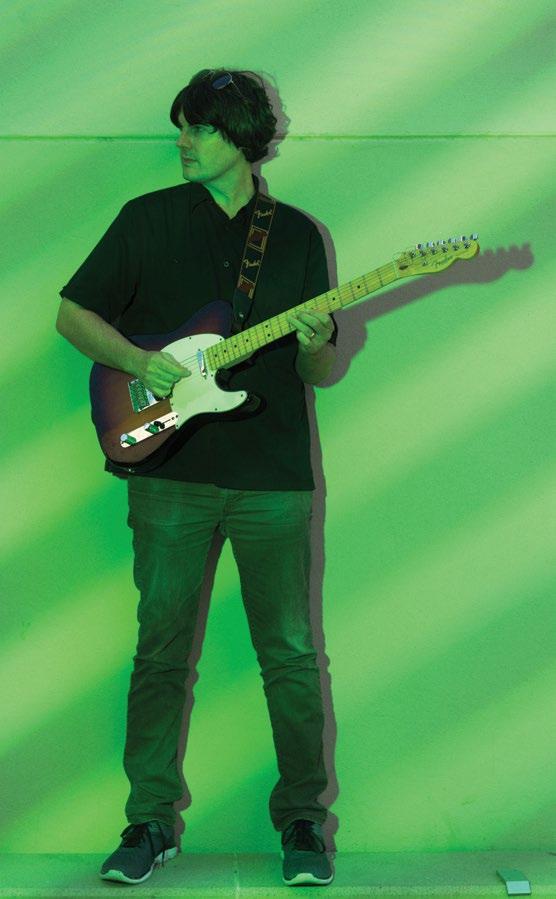
After leaving Richmond at 22, Brookings spent time in Memphis, where he logged more than six years as a tour guide at the world-famous Sun Studio, the hallowed ground that established the careers of such legends as Johnny Cash, Roy Orbison, and Elvis Presley. He cut three albums at Sun, all cobbled together with any late-night studio time he could secure. “I did always think and hope I’d give the tour to somebody that could help out,” shares Brookings, whose tours over the years included run-ins with John Mayer, George Carlin, and musical hero Tom Petty. “I never knew it would be Steve Jobs.”
Brookings admits he didn’t even know who the tech icon was until a coworker pointed it out afterward. Jobs’ lawyer tipped him 80 bucks before the private tour and said to not make mention of the man’s condition. Yet, as Brookings slyly adds, “He didn’t say don’t give him a CD.”
Five weeks later, he received an email from the head of iTunes, a message he first thought was spam. He was flown out to Cupertino to tour the Apple campus before he’d ever even touched a Mac but was soon placed on the iTunes team. In October, he’ll celebrate nine years working with iTunes and Apple Music–all thanks to that chance meeting inside Sun. “He changed our lives,” admits Brookings, who likely never would’ve arrived in the Bay Area otherwise. “I got to say thank you to him just about a month before he died. He said, ‘That tour was the most fun I had in Memphis.’ ”
Since arriving in California, Brookings has released two more albums and a compilation of past work, all containing catchy melodies and a tight pop sensibility. David Brookings and the Average Lookings, released in 2016, signals a more open band dynamic, albeit one that doesn’t muddle Brookings’ musical touch. Songs like “I’m in Love with Your Wife”—a playful reframing of Eric Clapton informing George Harrison he’s about to steal his spouse—merge playful lyricism with astute songcraft. “Wife” also shows Brookings injecting his love for history into his writing. Brookings intends to record a followup with the same band this fall in downtown San Jose.
“I’m going to keep writing songs and putting out records until the end,” shares Brookings with a slight southern drawl that still carries the stamp of his hometown. His trove of written material, at this point, surpasses 300 songs, yet he still admits, “I can hear a song and tell where I was. To me, it’s your legacy. When I’m gone, my legacy is going to be my kids and all the songs.”
C
87

88 Dine 10.5
Hip-Hop Chess Federation
Hip-Hop Chess Federation founder Adisa Banjoko makes all the right moves.
Adisa Banjoko, known to many as the Bishop of hip-hop, is a connector, the type of person who looks at the Rorschach test of pop culture and helps us understand what we are looking at. When he started the Hip-Hop Chess Federation in 2006, few in the worlds of hip-hop, chess, or martial arts really understood there was a connective tissue between their respective cultures or the potential positive impact this combination could have on atrisk youth. But now, on the heels of guest curating Respect: Hip-Hop Style and Wisdom at the Oakland Museum of California, an exhibit that has garnered national media coverage, Adisa has proven that he is thinking several moves ahead.
Adisa’s journey, oddly enough, begins with a shot in the dark—a phone call to a future hip-hop legend, Eazy-E, founder of the LA gangsta troupe N.W.A. Sometime in 1987 Adisa bought the 12-inch single “Boyz-n-the-Hood.”
“In the center of the Ruthless Records logo there was a phone number. I called the phone number and said, ‘Hello, is Eazy-E there?’ And they were like, ‘Nah, can I take a message?’ ”
“Well yeah, I’m a bigtime writer from the Bay, and I think this record could be a hit. Why don’t you have him call me back,” responded Adisa.
To Adisa’s surprise, Eazy did call back, but Adisa was not, in fact, a “bigtime writer from the Bay.” He was a 17-year-old self-described juvenile delinquent who wrote for his high school newspaper in Pacifica. In another surprising twist, Adisa and Eazy actually became friends and would chat on the phone in the halcyon days before Eazy achieved rock-star-level infamy. Then one day the jig was up.
“So a few weeks go by, and he calls me up like, ‘My manager wants to know what paper you write for, The Examiner or The Chronicle? ’ I was like, ‘Oh man, this is the moment of truth.’ I said, ‘Hey, look. I’m a 17-year-old kid, and the story is going to run in the Oceana Foghorn school newspaper. I think you’re dope, and I’m sorry if I made you mad.’ And the phone was kinda silent for like three seconds, and then he just fell out laughing. He thought it was the funniest thing on earth. He was like, ‘Look, man, no one is writing about us. Run this story!’ ”
And the rest is history. Eazy got his “bigtime writer” friend backstage access at a rap show, and Adisa’s career as a pioneering West Coast hip-hop journalist took off from there.
The Bishop was already a chess aficionado when he broke into the hip-hop world—his father had taught him to play when he was four. After interviewing
hiphopchess.com Facebook hiphopchess Instagram realhiphopchess Twitter hiphopchess
Written by Demone Carter
89
Photography by Polaroid Jay
the relevant rappers of the day, he would often ask them if they played chess; the answer was almost always “yes.” He filed this information away, along with every rap lyric that references chess.
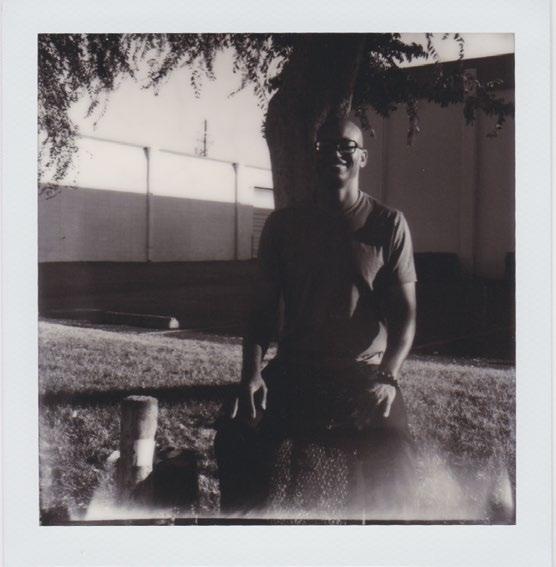
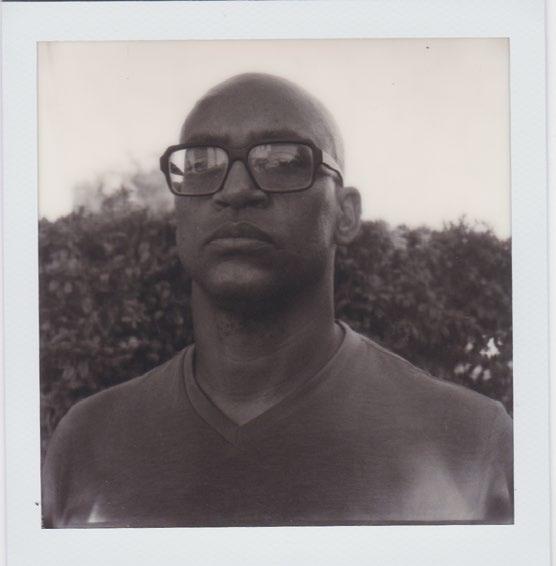

Fast forward to 2004. Adisa is giving a career day talk in the juvenile hall, failing horribly and getting heckled by the young hellions in the audience. In an attempt to pacify the group, Adisa thought he would try to teach them chess. He quickly found out that the majority of the kids there already knew how to play chess, with a number of the youth claiming to be really good. Adisa organized an impromptu tournament, and what he noticed was that kids who had made unfortunate life choices excelled in the highly strategic game of chess.
“Now, why is it that all of these kids can think well and play the game of chess, but they are making mistakes in their lives? What could we do to inspire them to play chess that would make sense to them in their language? And I was walking out and every
rap lyric I had ever put into the back of my brain hit me at one time. I said ‘hip-hop chess.’ That’s what we’re gonna do.”
The final move that made the hip-hop chess strategy come together was incorporating elements of jujitsu, another passion of Adisa’s. “Chess is jujitsu for the mind, and jujitsu is chess for the body,” explained Adisa in a recent interview with local South Bay podcast Dad Bod Rap Pod
In 2006, the Hip-Hop Chess Federation was born, and over the past 12 years, they have been fulfilling their mission, using elements of hip-hop, chess, and martial arts to teach at-risk youth life skills. Adisa has also lectured at Harvard and curated two nationally acclaimed museum exhibits, the aforementioned Respect at the Oakland Museum of California and Living Like Kings: The Unexpected Collision of Chess and Hip Hop at the World Chess Hall of Fame in St. Louis. It looks like the Bishop’s stratagems continue to pay off. C
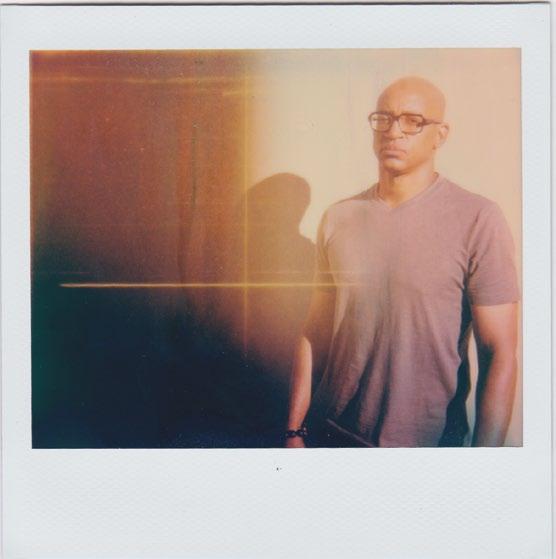
90 Dine 10.5

91
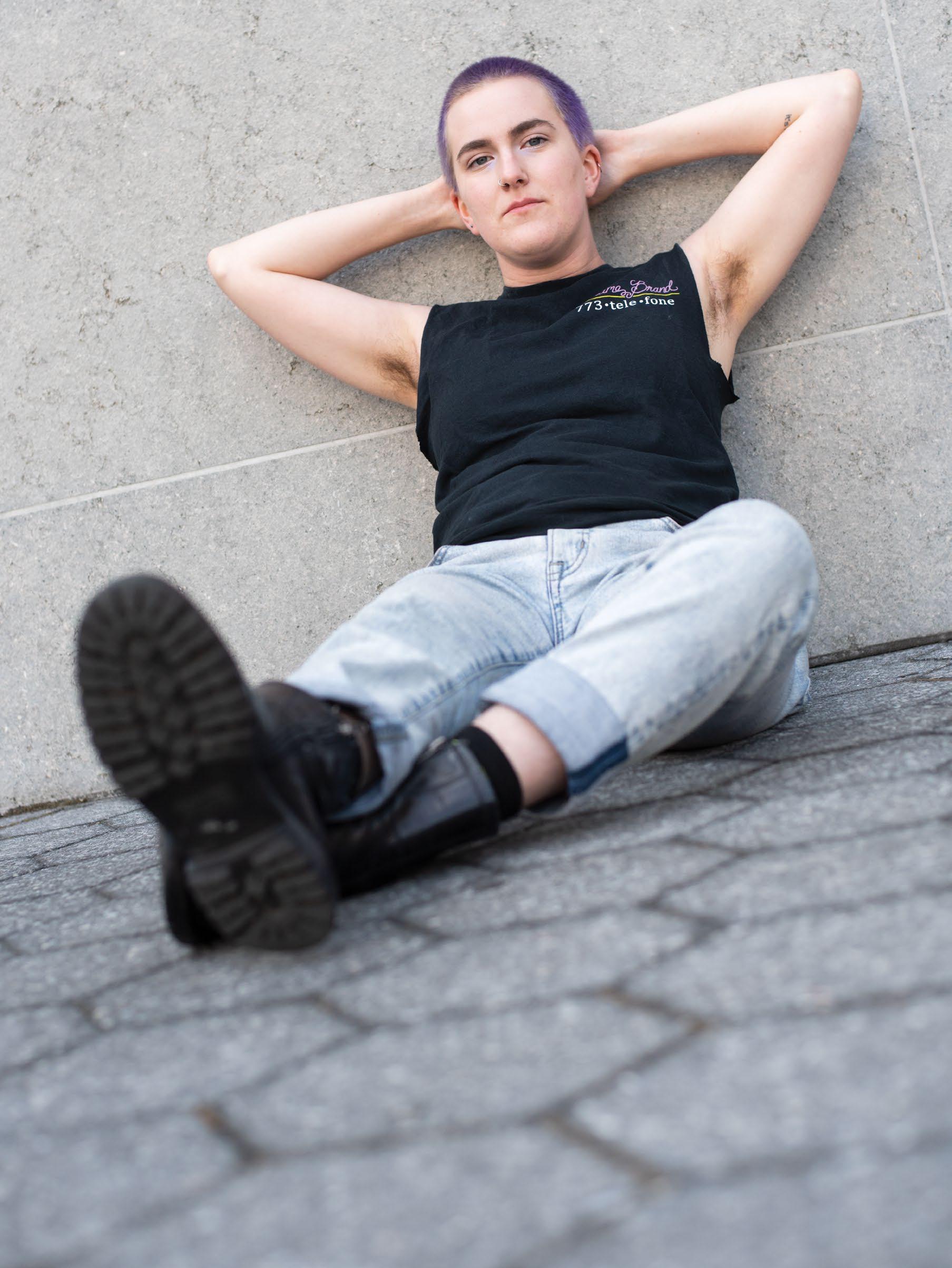
“The most impactful feedback or praise that I’ve gotten on my poetry is the few times I’ve had people say, ‘Oh, your work makes me feel better about myself, better about my brain.’
” –Elliot Case
Zine Maker Elliott Sky Case
There’s a naked honesty to Elliott Sky Case’s work—poems straightforward and per sonal, photos simple, captured on an iPhone. The poet and zinester—who uses the pronouns “they,” “them,” and “their”—maintains an artistic aura best summed up by a sticker they occasionally hand out: across a fuzzy picture of a room, the sticker reads, “poet laureate of my bed.”
Case turned to zine making after graduating from the University of California Santa Cruz, where they studied creative writing, then moved to San Jose and fell in with a group of creatives. Zines, DIY publications usually made with photocopiers and staplers, became a way for Case to quickly distribute work. “I wanted the instant gratification of showing my work to people rather than the grueling and irritating cycle of submitting to journals that you may or may not read and that people you know may or may not read,” Case said.
In San Jose, zine making revolves around a handful of organizations that promote the form’s grassroots, DIY ethic. The yearly San Jose ZineCon hosts zinesters from all over the West Coast, while the South Bay DIY Zine Collective maintains a trav eling zine library based in the LGBTQ Youth Space downtown. The San Jose zine community is incredibly diverse, with some members connected to punk and un derground subcultures and others focused on design, activism, or, in Case’s in stance, literature.
Compared to the suburban parts of LA in which they grew up, Case is amazed by the community in the Bay. “Working in the Bay Area is kind of cool. Each city has its own miniscene, miniculture...Even though they are spread out, there is also col laboration across those circles.” Communal inspiration has been essential to Case’s zine-making. Once they began making zines of their own, the form became a way of stepping over their creative impasses. They found that, after graduating, they were still trying to figure themselves out as an artist. “I got kind of bored and restless... When you study writing, you kind of conform to the teacher’s style for a while, not necessarily in your writing but in your editing, [so when] I graduated, I was in
93
Written by Justin Sun
Photography by Daniel Garcia elliottskycase.com Instagram bertoltwreckt
this place where I had sort of an idea of what my style was, but I felt kind of lost there.” As a solution, Case picked up some tips from their sister on photography and started combining pictures with their writing. Now, a couple years later, they are heading to New York University for an MFA in creative writing.

Reading Case’s work is often like listening to a friend recount their inner thoughts to you late at night. You are probably in a secluded place—the interior of a car, the top of a hill, a porch step looking out on an empty street. Other times, it is like read ing a diary, or, to be more accurate, phone notes. Lines like “I want to rate on the Richter Scale / like I was meant to” and “I am afraid to write this anywhere / except my phone notes at 1 am,” reverberate with the poet’s desire to simply be heard. In one zine, Case overlays poems on the same page, letting the poems obscure each other like jumbled, aching half-thoughts echoing in the head.
Because of their informality, zines are an apt form for Case’s style. Case takes ad vantage of the opportunity to experiment but also appreciates zines’ ability to reach others. “The most impactful feedback or praise that I’ve gotten on my poetry is the few times I’ve had people say, ‘Oh, your work makes me feel better about myself, better about my brain.’ ”
This past year, Case was able to pass on their love for zines during an afterschool program they worked at. Case held a zine-making workshop and brought some zines as examples. One student, who Case said had already come out as queer, was particularly disruptive. (“It was just her general middle-school vibe,” Case de scribed.) But when that student read a zine made by local artist Ramona Sharples about two girls, one of whom is trans and changes forms and explores other worlds, she was enthralled. “She was like, ‘Wait, is this gay?’ and I was like ‘Yeah, it’s gay,’ ” Case said. “She read the whole thing and said ‘This is so sweet. I love this so much. Thank you!’ and automatically was into it. I was like, ‘See? And you doubted me.’ ” C
94 Dine 10.5
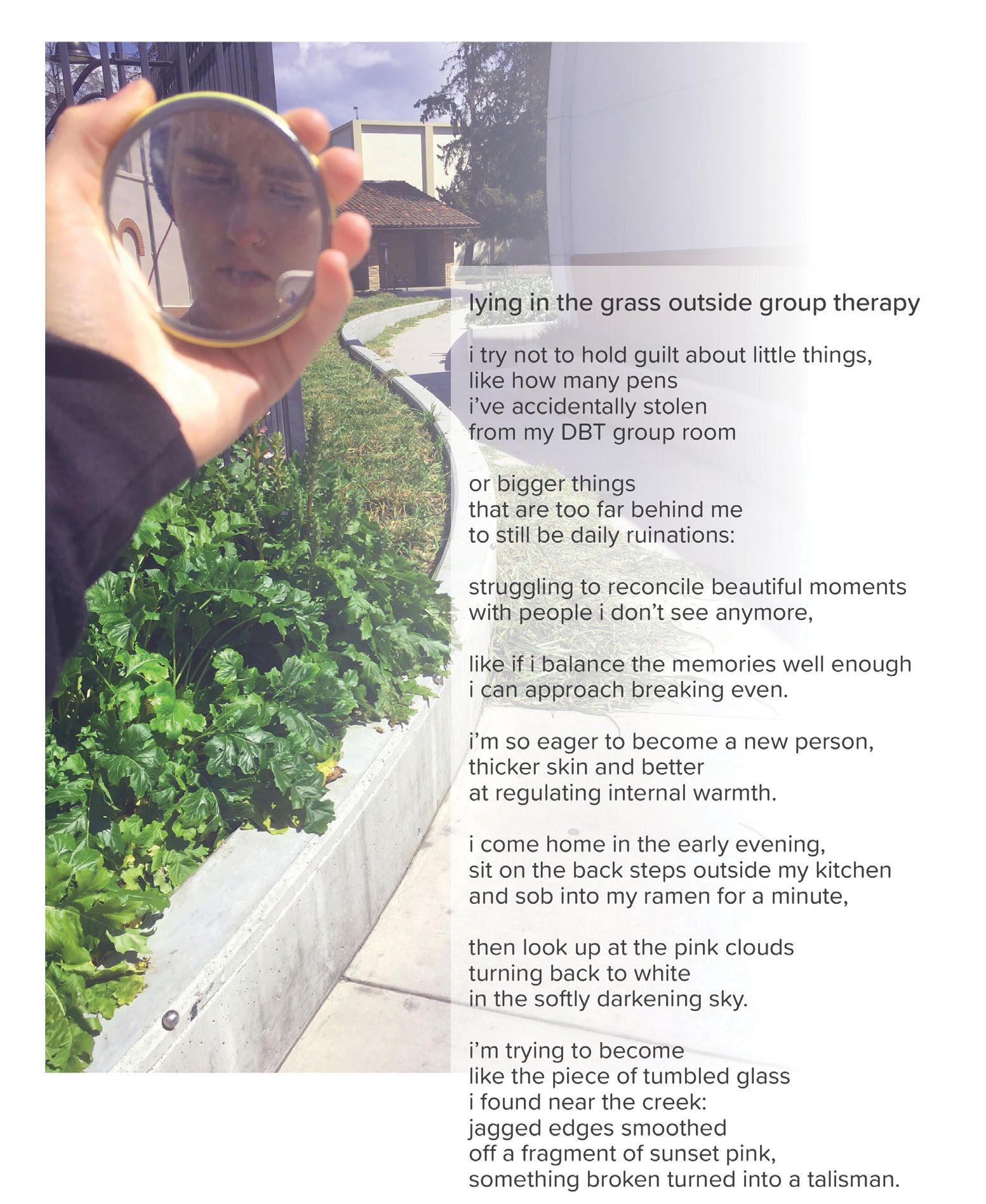
95
ALBUM PICKS
Enjoy Small Car Big Wheels
(Burger Records)
Release date: June 29, 2018
With over 30 EPs and albums, Wyatt Shears of Enjoy continues to defy genre and categorization with his latest release, Small Car Big Wheels, off of Burger Records. Other than modeling for Saint Laurent’s showcases in Paris, Wyatt spends his time recording music under his solo moniker, Enjoy, and has been playing with his twin brother, Fletcher, in a joint project, the Garden, since they were 17.
Wyatt’s experimental sound and his potential have been displayed consistently with each release throughout the years, but Small Car Big Wheels is his most lucid and focused. The tone of this LP is driven by the multifaceted percussion, liquid guitar tones, and double bass. However, the different sound and approach to each track keeps you guessing: where will this go next? From trap beats, boom bap, and record-scratching, to grunge guitars, hardcore double drum pedals, to a chillwave production, his ability to tap into dozens of different sounds and lace them in a catchy post-punk fashion is quite impressive.
When listening to this record, I couldn’t help but think of Mick Jones leaving the Clash to form Big Audio Dynamite. Wyatt’s music was something I just wasn’t used to, but it kept me listening, and now, Small Car Big Wheels will be a signature of summer 2018.

Favorite track: “Lucky Spirit” ENJOY2.BANDCAMP
Instagram: wyattshears, thegardenboys
Kadhja Bonet
Childqueen (Fat Possum Records)

Release date: June 8, 2018
Kadhja Bonet, a classically trained multiinstrumentalist hailing from Richmond, California, arranges, produces, and plays all the instruments (except for bass) on her sophomore effort, Childqueen. The album graces the music landscape with elegance and poise, conjuring impressions of fantastical storylines. Her debut album, The Visitor, is an absorbing mix of folk, jazz, and soul that complements reality with a cerebral ambiance. Childqueen, on the other hand, demands your attention by taking you out of your reality, shrouding you instead in a world created by Bonet herself.
Bonet presents beautiful string arrangements that are punctuated by textured synth elements and held down by soulful bass and drum patterns. She arranges these elements to give the music a cinematic-like presence. Childqueen becomes a soundtrack, of sorts, to a mythical story of celestial bodies or a dew-laden cosmic epic. It is as if Bonet composed her new album while watching 2001: A Space Odyssey and listening to the pivotal works of 1960s-era David Axelrod.
Childqueen shows the growth and confidence of a unique songwriter capable of composing an immersive listening experience. If you enjoy music that takes you somewhere, don’t sleep on this release.
Favorite track: “Wings” KBONET.COM Instagram: kadhjabonet
Written by Tucker Lee Gootee
96 Dine 10.5
Curated by Needle to the Groove Instagram: needletothegrooverecords
Written by Taran Escobar-Ausman
Jorja Smith
Lost & Found (FAMM)
Release date: June 8, 2018
Newly 21, British vocalist Jorja Smith likely first appeared on the radar of American listeners as a standout secret weapon on Drake’s guest-filled 2017 commercial mixtape More Life. Sampled on “Jorja Interlude” and featured on album highlight “Get it Together,” Smith’s striking tone seemed to reveal an experience well beyond her then-teenage years. Unlike Drake’s dancehall-flavored track, Lost & Found is largely informed by hip-hop drums and lovelorn R&B introspection.

As the title suggests, throughout this 12-song set Smith wrestles with the effects of loss and disconnection, both personal and political. On “February 3rd,” sequenced at a point in the album when Smith is still largely reckoning with the pain of unrequited love, she yearns for reciprocity to no avail: “What is it your eyes don’t see?” she asks, “Why don’t you lose yourself in me?”
At times, her vocal power and phrasing, on “Goodbyes” in particular, bear resemblance to the late Amy Winehouse, who was a huge influence on Smith. While her searching lyrics reveal a writer quite comfortable with personal introspection, her themes do feel somewhat well-trod by album closer “Don’t Watch Me Cry,” which carries the couplet “Are you aware when you set me free? / All I can do is let my heart bleed,” the most concise summation of her journey to discover the wisdom in her pain. Lost & Found reveals an artist actively discovering her voice as a writer. As a vocalist, this eclectic set, covering everything from a freestyle on wealth inequality to a ballad coupled with melodramatic strings, shows there aren’t very many places at all where Smith’s distinct, vibrant voice doesn’t shine bright.
Favorite track: “Blue Lights” JORJASMITH.COM
Instagram: jorjasmith_
Written by Brandon E. Roos
Nas Nasir (Def Jam)

Release date: June 15, 2018
It’s been 25 years since his illustrious debut, Illmatic, and Nas has a emerged as an icon with over 25 million albums sold and 11 Grammys. He has survived the beef with Jay-Z and has become an NYC music legend. For rap connoisseurs, Nas has been the unforgettable voice that shook the world in 1993 with his vivid tales of life in Queensbridge. Since then he’s been criticized for underwhelming LPs, lackluster production, allegations of domestic violence from his ex-wife, Kelis, and other misguided career moves, but, ultimately, his polyrhythmic rhyming patterns influenced an entire generation of emcees, and his voice is absolute gold. With Kanye behind the boards, Nas is back with his 13th solo album, Nasir.
Nasir kicks off a little slow with the underproduced “Not for Radio,” followed by the overproduced “Cops Shot the Kid.” These aren’t terrible songs, but they’re not worth revisiting. The heart of the album begins with “White Label.” Kanye is locked in with his sample chopping and studio arrangements, and Nas delivers. “Bonjour” also succeeds with Nas bringing more bravado over another Kanye banger. “Everything” and “Adam and Eve” are the preeminent standouts. “Everything” is an eightminute epilogue in which Nas uses his wordplay and conveys his anti-establishment, rags-to-riches wisdom with his vintage buttery flow. Kanye sings the chorus with possibly the most genuine lyrics he’s ever written. “Adam and Eve” is another beautiful flip by West, with the perfect amount of non-quantization layered with seasoned vocals and reverberating snares.

Nasir is an appetizer and not quite a full entrée, but it’s a delightful dish nonetheless. Nas has one of the most iconic voices in hip-hop, and, with Kanye as his lead producer, Nasir will leave their true fans wanting more.
Favorite track: “Everything” NASIRJONES.COM Twitter: nas
97 Dine 10.5
Written by Allen Johnson
NOV/DEC CONTENT CALENDAR
Salon at the Triton: A 2D Art Competition & Exhibition
A wonderful showcase for some of the best talent around, in addition to awards present ed for art selected by the guest jurors. 11/3/18-1/20/19 Triton Museum of Art tritonmuseum.org
16 Downtown Ice
A San Jose holiday tradition. Seasonal ice skating under twinkling palms and stars in an iconic, only-in-San-Jose setting. 11/16–1/27/19 Circle of Palms downtownicesj.com
01
Artist Lecture
Philadelphia-based painter Alex Kanevsky combines abstraction and figuration in multi layered portraits that capture movement and the constant flow of time. 11/1 de Saisset Museum scu.edu/desaisset
02
Other Walks, Other Lines
International artists focus on walking as a mode of making the world consider topics of procession, immigration, protest, and accessibility.
11/2/18-3/10/19 San Jose Museum of Art sjmusart.org
03
Alameda ArtWorks
Fall Open Studios. Artists donate 10% of sales to Sacred Heart Community Service for ninth year.
11/3-11/4 1068 The Alameda, San Jose thealamedaartworks.com
16
Miss Bennet: Christmas at Pemberley Revisit your favorite characters from Pride and Prejudice as they come together for Christmas at the home of Mr. and Mrs. Darcy. South Bay Premiere 11/16-12/17 City Lights Theater Company cltc.org
17
Fame X + Portfolio Review
A night to elevate and ignite a force of vision aries. Listen to a panel discussion with local creatives and participate in portfolio review with industry professionals. 11/17 Hangar X, 7:30-10:00pm Famepresents.com
28
Wu Yu Jung: New Terrains Migration and Mobility Project Exhibition
Jung depicts mended cloth as metaphor for how clothing shapes our identity, but also reveals our histories, scars and growth. 11/28/18 – 1/13/19, SJMQT sjquiltmuseum.org
WEEKLY
SUN 7PM–11PM
The Eulipions Jazz Jam Session
The house band led by sax ophonist Tim Lin plays a set followed by an open jazz jam.
Cafe Stritch cafestritch.com
MON 7PM–9:30PM
Red Rock Open Mic Night
A family-friendly open mic experience that welcomes people of all talents to share and perform their art.
Red Rock Coffee redrockcoffee.org
WED 9PM
The Caravan Lounge Comedy Show
Comics from all over the Bay Area and the world perform, hosted by Ato Walker. The Caravan Lounge caravanloungesanjose.com
WED 7:00PM–9:00PM
SJZ Boom Box @ Christmas in the Park 11/28, 7-9pm; 12/5, 7-9pm; 12/12, 8-9pm celebrate the Holiday Season with a SJZ curated artist at Christmas in the Park. sanjosejazz.org
THURS 7PM–9PM
Live Lit Writers Open Mic
This casual open mic offers a home for poems and stories in all languages over pastries and beverages. Caffe Frascati pcsj.org
THURS 9PM
The Changing Same
This excursion keeps time with the future of soul, R&B, and jazz through guest DJ sets and live performances. The Continental Bar thecontinentalbar.com
98 Dine 10.5
03
#ContentPick
23 Christmas Tree Lighting
The annual start to Christmas in the Park is our tree lighting event held the day after Thanksgiving and features the official arrival of Santa Claus in downtown San Jose.
11/23 Plaze de Cesar Chavez christmasinthepark.com
30 Uptown Holiday Swing
A celebration of the sounds of swing and holiday songs done big band style, with a different big band each weekend.
11/30-12/16 Tabard Theatre tabardtheatre.org
05 The Santaland Diaries
This rollicking one-man show is a cure for an overdose of holiday hype from David Sedar is’ short tenure at Macy’s as Crumpet the Elf. 12/5-23 Lohman Theatre Los Altos Hills theatreworks.org
09 Breakfast with Santa
Enjoy a breakfast buffet surrounded by the warmth of the Fairmont’s Club Regent Room. Kids can participate in several arts & crafts as Santa makes his way to each group.
12/9 Fairmont Hotel, 9:00am to 11:30am christmasinthepark.com
15 Carols in the California
A Family Holiday Tradition! Artistic Director Elena Sharkova and the Symphony SiliconValley Chorale present the 14th annual sing-along of your favorite carols. 12/15 7:00pm The California Theater symphonysiliconvalley.org
MONTHLY
1ST MON 8PM
San Jose Poetry Slam
Slammaster Scorpiana Xlent leads this spoken-word com petition that features tasty food, brews, and poetry.
Gordon Biersch pcsj.org
3RD TUES 7PM–10PM
Two-Buck Tuesday
The gallery hosts $2 art sales, along with a combination of performances, live painting, and/or art-making activities.
KALEID Gallery kaleidgallery.com
12 Content Pick-Up Party
11.0
Celebrate seven years of highlighting the creative culture of Silicon Valley with the works of local artists on display, live music in the air, and some holiday cheer.
12/12 Rotunda City Hall, 7:30pm-9:30pm content-magazine.com
15 San Jose Craft Holiday Fair 2018
Large festive holiday retail experience featuring over 250-plus makers, artists, designers and emerging brands.
12/15-12/16 South Hall, 435 S. Market St, DTSJ sanjosemade.com
19 SJZ High School All Stars
@ Season of Hope
Conducted by Dr. Aaron Lington, perform as part of the Season of Hope series.
12/19 7:30pm-9:00pm Cathedral Basilica of St. Joseph sanjosejazz.org
24
It’s a Wonderful Life Classic holiday film about an angel who is sent from Heaven to help a desperately frustrated businessman see what life would have been without him. Tickets usually go on sale midDecember. Advance tickets are recommended. Only one Showing. 12/24 9:00pm Stanford Theatre stanfordtheatre.org
31
New Years Eve Extravaganza IV
Host Chuy Gomez, DJ MindMotion, DJ Brotha Reese Hot105.7, and Taylor Production as we bring in 2019, at the biggest and best New Years Eve Party in the South Bay. 12/31 8:00pm San Jose Marriott Hotel bit.ly/NYEEIVSJ
*Events are subject to change. Please confirm event details with the presenting organization or venue.
2ND & 4TH WED 6:30PM–8:30PM
Open Space at Eastridge
Hosted by Lorenz Dumuk, all are welcome to bring words, music, movement, and art. Eastridge Center facebook.com/ eastridgecenter
3RD THURS 6PM
Brews & Beats
Diners can enjoy hip-hop and craft beer culture with beats provided by resident DJs Mr Choe and Cutfresh.
Park Station Hashery parkstationhashery.com
3RD FRI 8PM
San Jose Bike Party
This themed ride is a place to make friends and have a good time. Riders without lights can get free lights installed. Announced 24 hours prior sjbikeparty.org
2ND SAT 6PM–9PM
Songwriter Saturday Showcase
Coffee is served while local songwriters perform. New Crema Coffee facebook.com/ songwritersaturday
99 Dine 10.5 99
CONTRIBUTORS
The production of CONTENT MAGAZINE would not be possible without the talented writers, editors, graphic artists, and photographers who contribute to each issue. We thank you and are proud to provide a publication to display your work. We are also thankful for the sponsors and readers who have supported this magazine through advertisements and subscriptions.
Be a part of the CONTENT community.
Contact us at: Editor@content-magazine.com
HALEY M. JENSEN
Haley is a visual communicator, illustrator, and designer whose goal is to use art to bring together communities. Her work is saturated with color and feminine energy.
instagram: haleymjensen
BRIAN RAMPAS
Residing in Sunnyvale, Brian is a creative who loves taking photos and videos either through roaming the streets with friends or by composing portraits. He lives through coffee and beer.
instagram: brianrampas
ZEL MACWILLIAMS
Zel is a bi-coastal explorer who began enriching her life with photography in 2016. A lover of stories and all things four legged, she found photography to be the perfect medium for traveling into different worlds.
instagram: blackhatphotos
BRAD SANZENBACHER
Brad is a public relations professional and folksinger from the Santa Cruz mountains. His machine has not yet killed a fascist, but it will never stop trying.

instagram: bradsanzfolk
BRANDON E. ROOS
A San Jose native, Brandon is a contributing writer to Content, KQED Arts and Metro. His work often examines the creative voices helping to shape and inspire a more vibrant South Bay.

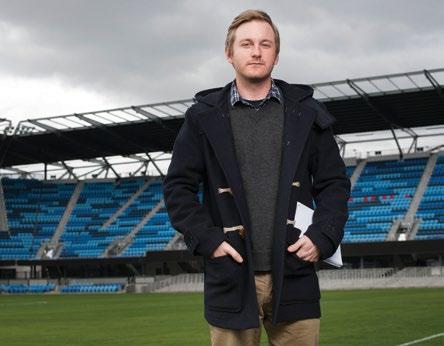
instagram: brandiathan
DEMONE CARTER
Demone is an award-winning artist, educator, and social entrepreneur from San Jose. Performing under the name DEM ONE, he has released several albums and was named a 2016 Silicon Valley Artist Laureate.
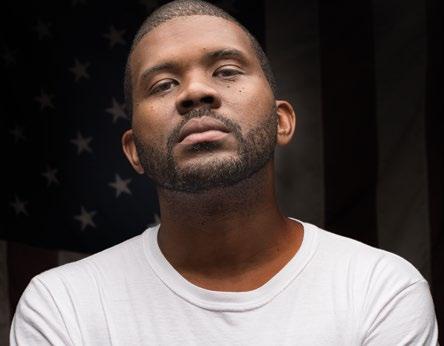
instagram: lifeafterhiphop
LINNEA LUKATCH
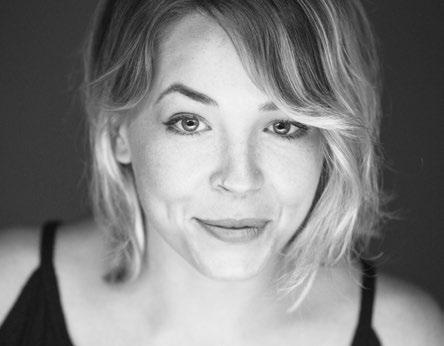
Linnea is a lover of literature and the wilderness. When she isn’t reading or backpacking in Yosemite, she is enjoying her days as an enthusiastic middle school English teacher and is currently learning to tame the wild coffee bean as a barista in training at Academic Coffee.
instagram: jklinnea
ZIA MACWILLIAMS
Zia is an anti-hunger activist with the Second Harvest Food Bank and founder of a gardento-facility program in Juvenile Hall. She is also a Leadership Palo Alto Fellow and an Emerging City Champion.
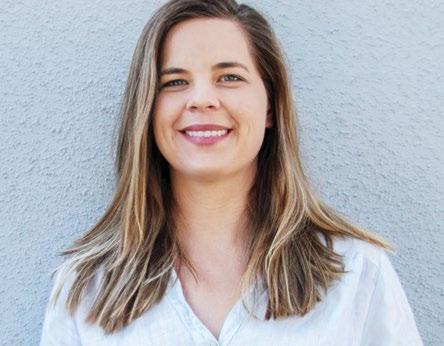








Banking with your best interests at heart. techcu.com ©Technology Credit Union. Federally insured by NCUA. Banquets | Catering | Events F r o m t h e c r e a t i v e m i n d s o f t h e C h r i s Y e o G r o u p , c o m e e x p e r i e n c e t h e w o r l d o f d i s t i n c t i v e c u i s i n e s a n d v i b r a n t e n e r g y . Seasonal Coffee, Tea, & Artisanal Pasteries Monday - Friday: 7:00 am - 5:00 pm Saturday & Sunday: 7:00 am - 7:00 pm 499 S. 2nd Street, San Jose, CA www.academiccoffee.com

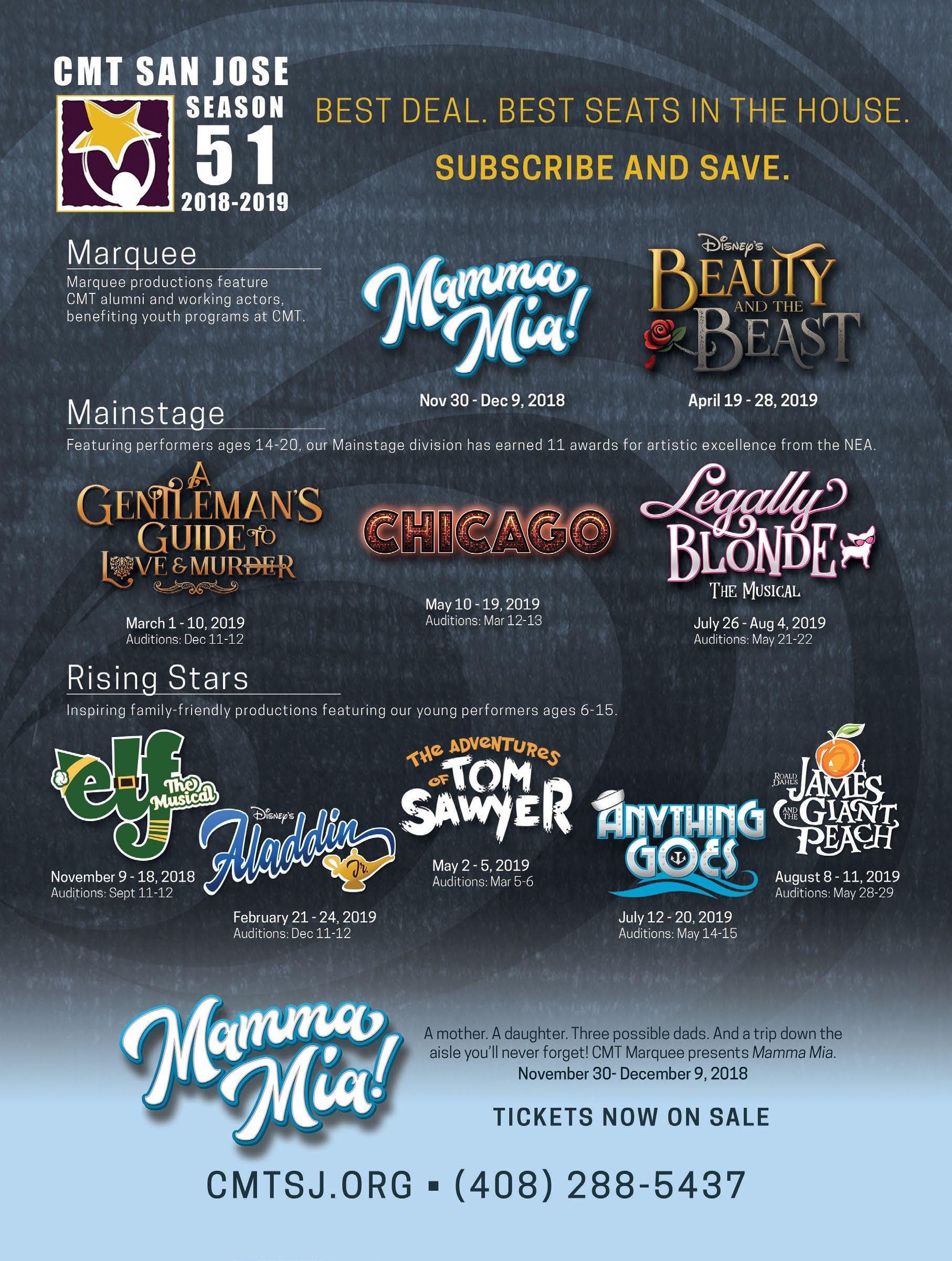











104 Dine 10.5 29 N. San Pedro St. Downtown San Jose 408-679-2330 www.TabardTheatre.org FEB. 15 – MAR. 10, 2019 Beau Jest Join us for 3 Musicals and 2 Comedies as our 18th SEASON Snapshots. Tabard. APRIL 5-28, 2019 Queen of the Mist JAN. 11 – FEB. 3, 2019 SNAPSHOTS: A MUSICAL SCRAPBOOK UptownHoliday Swing NOV. 30 - DEC. 16, 2018 OCT. 26 – NOV. 18, 2018 The explorers Club
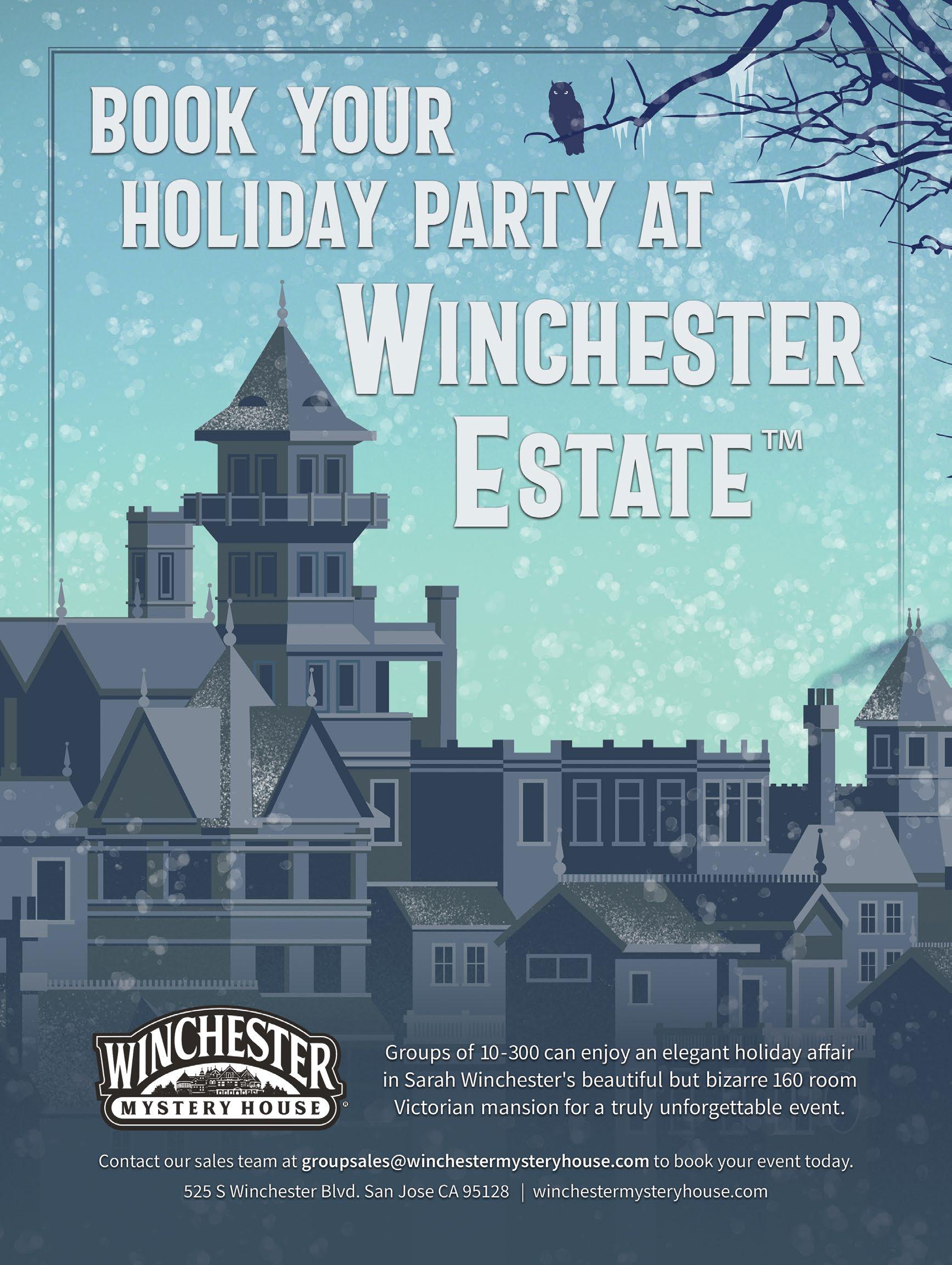

The New Ballet 2018-2019 Season The San Jose Nutcracker December 14th-24th, 2018 Fast Forward March 23rd, 2019 Cinderella May 18th-19th, 2019 newballet.com
ContentSeasonAd2018_2019.indd 1 9/28/18 12:14 PM
Photo by Chris Conroy
THE VIEW ENJOY
San Jose is on the up and up. This city is a thriving epicenter of innovation and creativity. That applies to business, too. Conferences are more than just meetings – they’re lifelong connections and life-changing opportunities. sanjose.org/meetings

SNJ100-22848-TSJ_MPI_2018_EnjoyTheView.indd 1 9/14/18 11:15 AM
CREATE : CONNECT : SAN JOSE
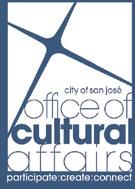

108 Dine 10.5 SnS 10.2
www.sanjoseculture.org
Photography by Joe Sale
Laura Kimpton Jeff Schomberg, Ha Ha The City of San José Office of Cultural Affairs in partnership with Burning Man Project proudly presents two new works by Laura Kimpton as part of Playa to Paseo, an initiative bringing art from Burning Man to Downtown San José.
Appearing through February 2019, Ha Ha will be sited at Hammer Theatre Plaza and XO will be at City Hall Plaza.
arts & culture

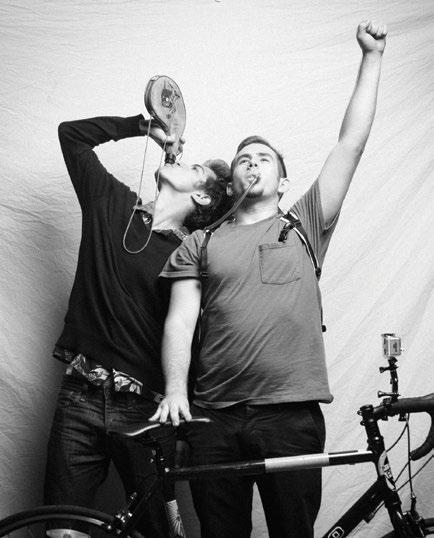
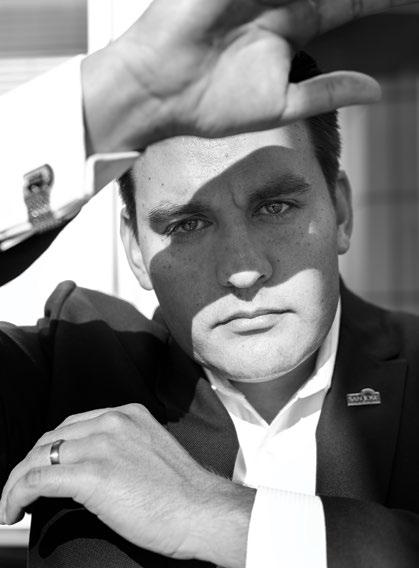
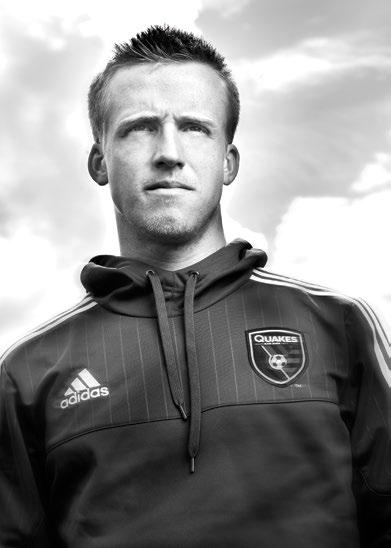






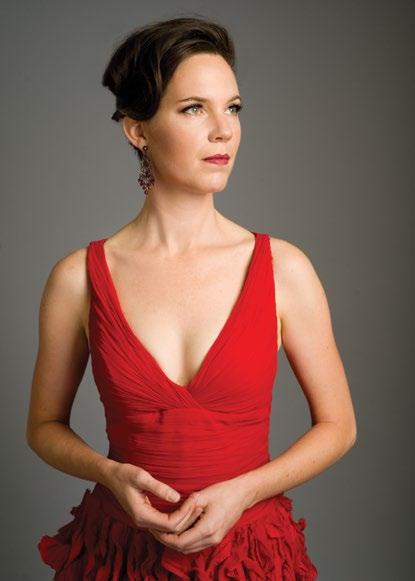

subscribe C south bay CONTENT #supportlocal
SILICON
VALLEY’S
INNOVATIVE & CREATIVE CULTURE
made in san jose, ca subscribe www.content-magazine.com
NEXT ISSUE Discover 11.0 SAN JOSE 2018 WWW.CONTENT-MAGAZINE.COM social media: contentmag ANNUAL SUBSCRIPTION- $42.00 SINGLE ISSUE- $9.95





















































 Written by Johanna Hickle
Written by Johanna Hickle























































































































